Catamaran vs Monohull in Rough Seas: Which is Better?
Catamarans and monohulls have different designs that affect how they handle rough sea conditions. In fact, they have an advantage over each other when sailing in heavy seas. Let's try to compare each type of vessel based on their performance, design, and stability, to help you decide which can give you a safer and more comfortable journey on the open water.
Regarding speed, efficiency, and stability, a catamaran may be the better option for you. Because they have twin hulls, they are more comfortable to sail in rough seas. A monohull can become more advantageous in rough seas when sailing upwind since it can point higher into the wind and can handle strong winds easily.
Catamarans with two rudders also allow for better control and maneuverability in rough seas compared to monohulls, which only have one rudder. Let's look at more of the comparison between these two types of boats when sailing through big waves in the sea.
- When it comes to stability and comfort, catamarans can provide more stability. They are also less likely to cause seasickness and offer more living space and privacy.
- In terms of speed, catamarans are also faster than monohulls because they have a smaller displacement. Their structure also makes them less likely to capsize or sink.
- A monohull is advantageous when it comes to sailing upwind, and handling stronger winds. Their deep keel also provides them with increased stability and reduces drag, which can be an advantage in rough seas.


Catamarans Vs. Monohulls in Rough Seas
If you're planning to buy a boat, and you're deciding whether to go for a catamaran or a monohull, one of the many things you may need to consider is how they perform in rough seas. Rough seas can be challenging for any vessel, but some boats are better equipped to handle them than others. Below is a table summarizing how well these boats perform in rough seas:
| Two hulls connected by a deck | Cruising, chartering, racing | More stable in terms of roll stability | Generally faster and more efficient due to twin hulls | Not as good as monohulls | |
| Only one hull | Day sailing, racing, cruising | Better at handling heavy seas and high winds | Not as fast or efficient due to single hull | Better than catamarans |
A catamaran is a boat with two hulls connected by a deck. Because they have two hulls , catamarans are known for their speed, stability, and spaciousness. They are often used for cruising and chartering, as well as racing. They also have a wider beam than monohulls, which means they offer more living space and stability. They are less likely to heel or tilt to one side, are more buoyant, and have a shallow draft.
On the other hand, monohulls are the most common type of boat with only one hull. They are known for their simplicity, versatility, and affordability. Monohulls are often used for day sailing, racing, and cruising.
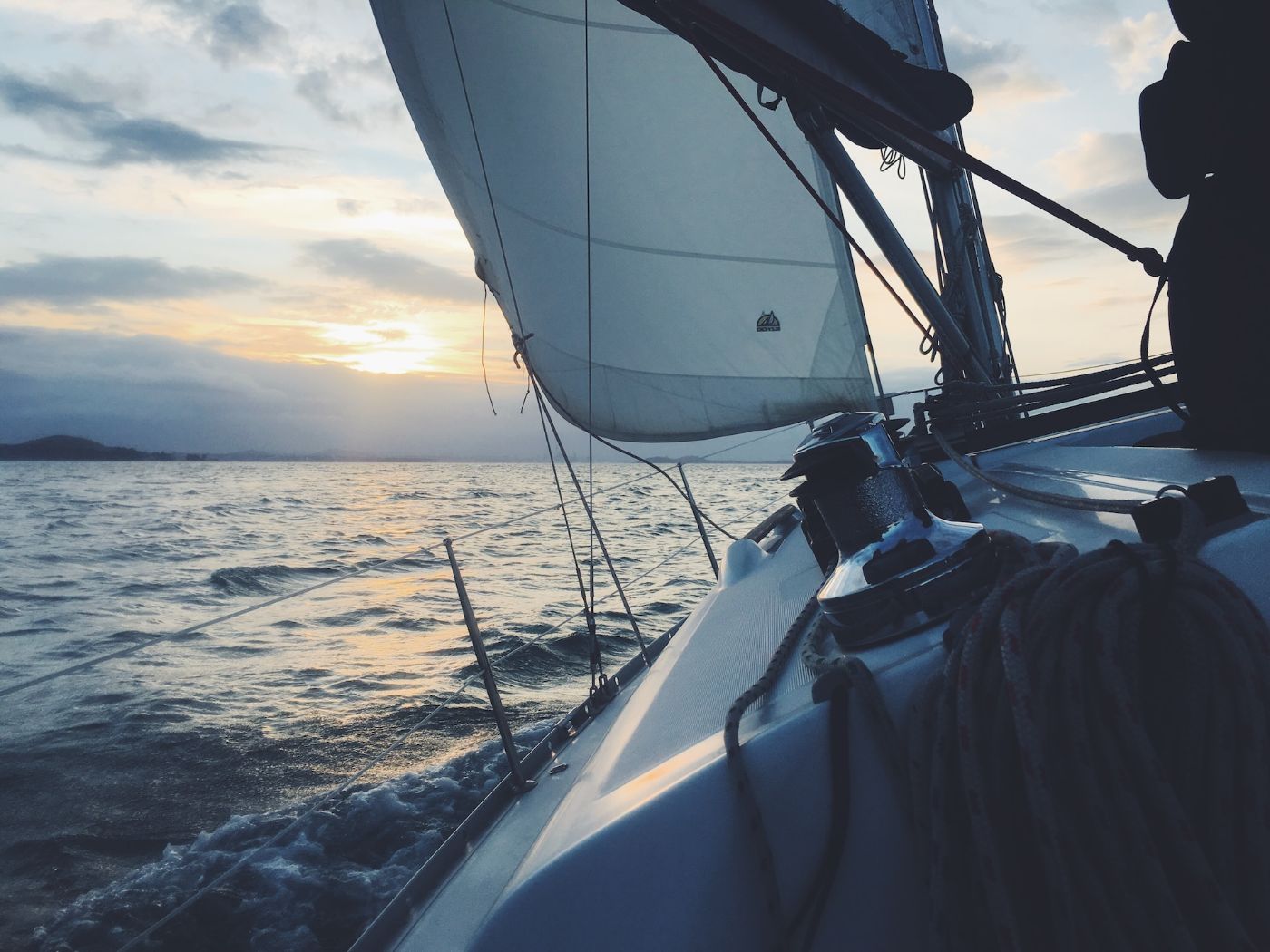
When it comes to rough seas, catamarans are generally more stable than monohulls in terms of roll stability. Monohulls, on the other hand, are better at handling heavy seas and high winds, but they can be more prone to rolling and pitching, and can significantly heel more than a catamaran.
If you are aiming for speed, efficiency, and stability, then a catamaran may be the better option for you. They are generally faster and more efficient due to their twin hulls, and their stability can make for a more comfortable ride in rough seas.
On the other hand, if you prioritize upwind sailing performance, sailing feels and responsiveness, and the traditional look and feel of a sailboat, then a monohull may be the better option for you. Monohulls sail closer to the wind and have a unique feel to them that some sailors prefer.
Detailed Comparison Between Catamaran And Monohull
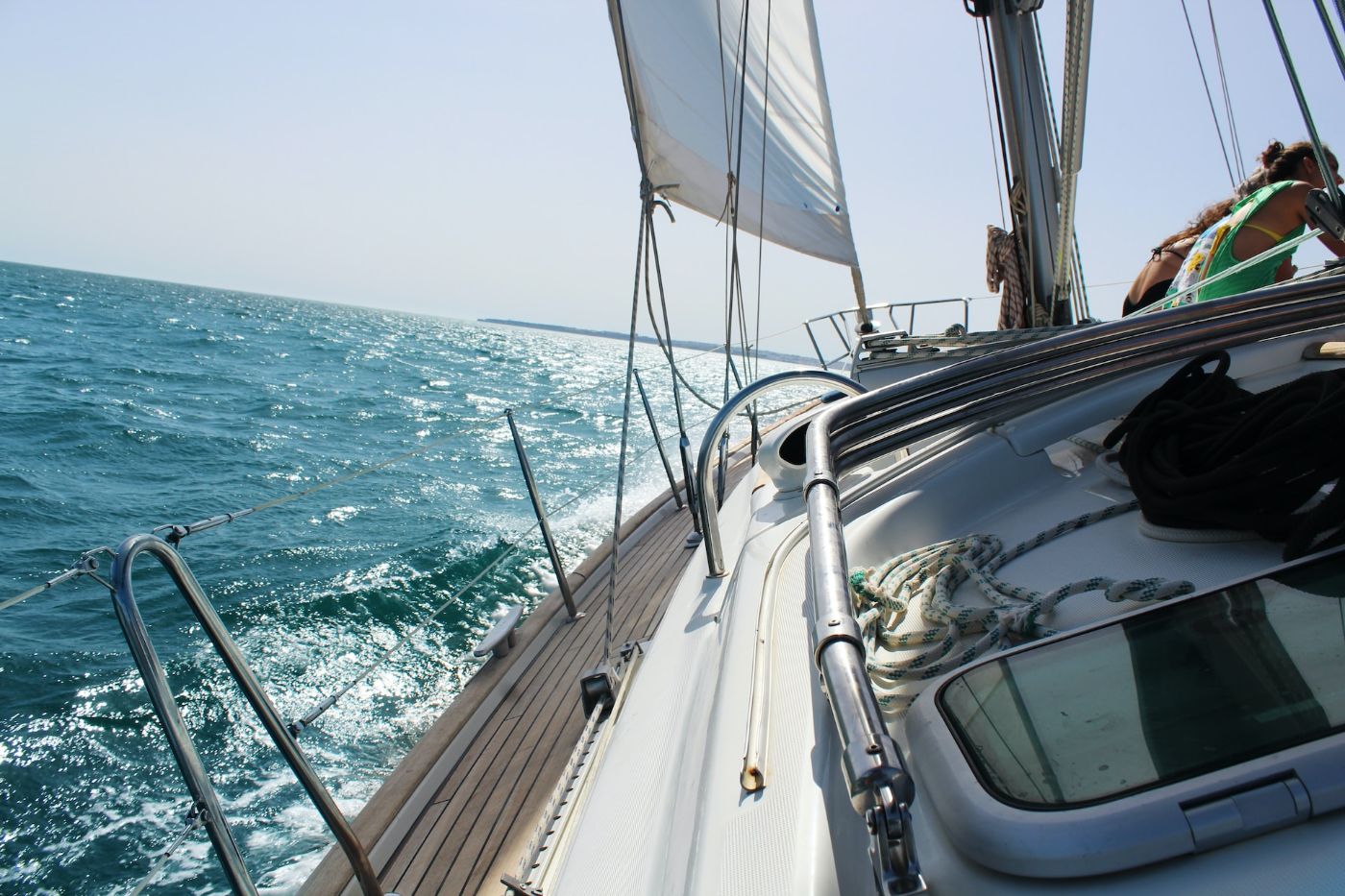
Catamarans provide better stability and comfort
Catamarans are more stable, less likely to cause seasickness and offer more living space and privacy. Below is a table summarizing why catamaran is more advantageous in this category:
| More stable, less likely to roll or heel | More likely to pitch and roll | |
| Less likely to cause seasickness | More likely to cause seasickness | |
| More living space and privacy due to two hulls | Less living space and privacy due to single hull |
In terms of motion in rough seas
Catamarans are more stable in rough seas because they have two hulls instead of one. This means that they are less likely to roll or heel, which can make for a more comfortable ride. Monohulls, on the other hand, tend to pitch and roll more in rough seas.
In terms of handling seasickness
If you are prone to seasickness, a catamaran may be a better choice for you. The stability of a catamaran means that it is less likely to cause seasickness than a monohull. Additionally, the living space on a catamaran is often spread out between the two hulls, which can help to reduce the feeling of confinement that can contribute to seasickness.
In terms of living space and privacy
Catamarans also tend to offer more living space and privacy than monohulls. Because the living space is spread out between the two hulls, each hull can function as a separate living space. This can be especially beneficial if you are traveling with a group of people and want to have some privacy.
Both boat types have specific advantages in performance and speed
A catamaran is generally faster and more stable than a monohull, but a monohull can be easier to handle in certain conditions.
| Less efficient | More efficient | |
| More stable due to wider beam | Easier to handle |
In terms of navigating upwind
When sailing upwind, a monohull has the advantage over a catamaran due to its ability to point higher into the wind. This means that a monohull can sail closer to the wind than a catamaran, which will need to tack more often. However, a catamaran can make up for this disadvantage with its speed. A catamaran can sail faster than a monohull , which can help it to cover more distance in less time.
In terms of handling strong winds
In strong winds, a catamaran is generally more stable than a monohull due to its wider beam. This means that a catamaran is less likely to heel over, making it more comfortable for passengers. However, a monohull can be easier to handle in strong winds due to its ability to reef the sails. By reducing the sail area, a monohull can reduce the amount of wind it catches, making it easier to control.
Catamarans and monohulls have different designs and function
Catamarans offer more deck and cabin space, shallow draft, and increased buoyancy, while monohulls have a deeper draft, reduced drag, and increased stability.
| Has wider beam and two hulls | Has a single hull | |
| Has a shallow draft | Has a deeper draft and keel |
In terms of the deck and cabin space
One of the advantages of catamarans over monohulls is their wider beam, which provides more deck space. This means more room to move around and increased stability, which is important in rough seas.
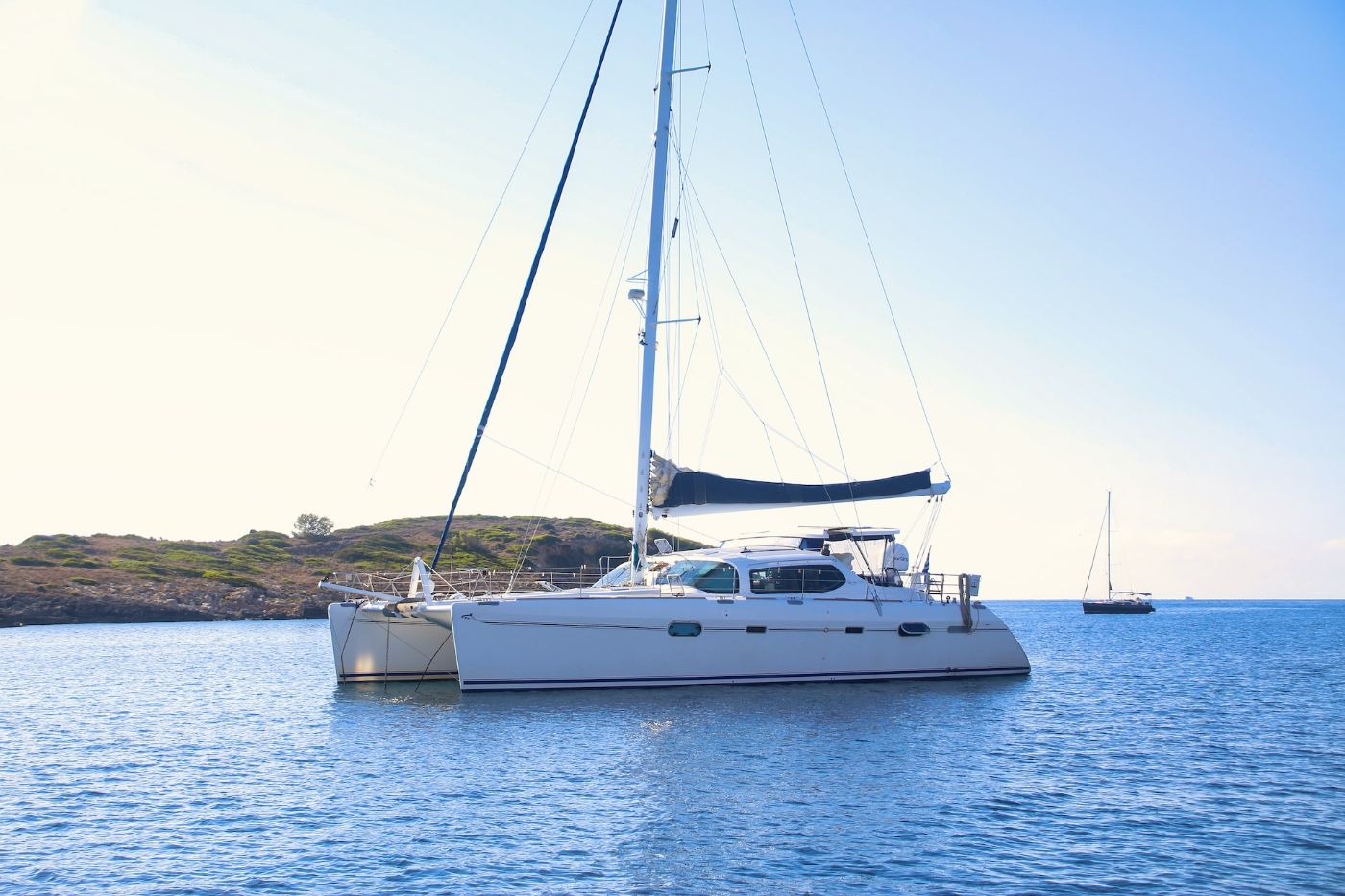
Additionally, catamarans usually have two hulls, which means more cabin space and privacy for the crew and passengers. On the other hand, monohulls have a single hull, which means less deck and cabin space. However, monohulls usually have a deeper draft, which allows them to sail closer to the wind and tack more efficiently.
In terms of draft and buoyancy
Catamarans have a shallow draft, which means they can sail in shallow waters and anchor closer to shore. This makes them ideal for exploring shallow coves and bays. Also, catamarans have two hulls, which provide increased buoyancy and stability in rough seas.
Monohulls, on the other hand, have a deeper draft, which makes them less suitable for shallow waters. However, their deep keel provides increased stability and reduces drag , which can be an advantage in rough seas.
Both boat types have unique safety considerations
Safety is a top priority when sailing in rough seas. Catamarans are generally more stable and easier to control, while monohulls have a greater risk of capsizing but are also more maneuverable in certain situations.
| Less likely to capsize and are virtually unsinkable | Has a keel and ballast that increase the risk of capsizing | |
| With two rudders that provide better control | Only has one rudder and is more susceptible to being pushed off course by waves and wind |
In terms of the risk of capsizing
One of the biggest safety concerns when sailing in rough seas is the risk of capsizing. Catamarans have two hulls, which make them more stable than monohulls. This means that they are less likely to capsize in rough seas. Catamarans are also technically unsinkable , meaning that they will not sink even if one hull is damaged or flooded.
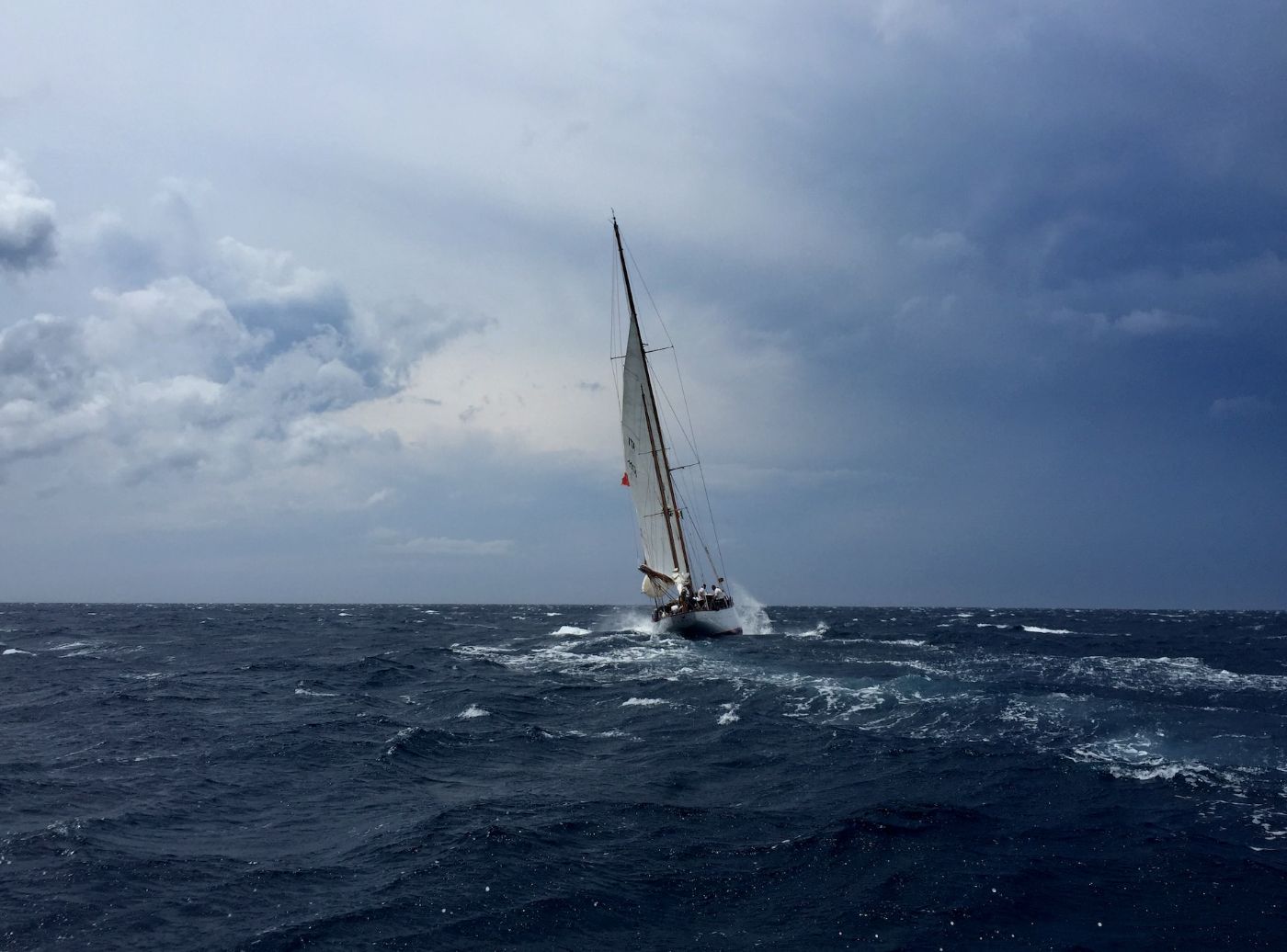
On the other hand, monohulls have a keel and ballast, which provide stability but also increase the risk of capsizing. If a monohull capsizes, it can be difficult to right the boat and prevent it from sinking.
In terms of navigational control
Catamarans have two rudders, which provide additional control and maneuverability in rough seas. This means that you can steer the boat more easily and avoid obstacles like rocks and other boats. Meanwhile, a monohull only has one rudder.
However, despite the number of rudders involved, the ability to control and maneuver the boat, whether a catamaran or a monohull, still depends on the design and construction of the boat, as well as the skill of the captain and crew in handling the boat.
Other practical considerations when choosing between catamaran and monohull
| Docking and anchorage | Easier to dock or anchor but can be more difficult to maneuver in tight spaces due to size | Generally easier to maneuver in tight spaces |
| Storage and equipment | Has more storage space | Only suited for certain types of equipment, such as fishing gear or diving equipment, due to the layout of the boat. |
| Crew accommodations | More spacious accommodations, which can be an advantage for longer trips or larger crews | May offer more privacy for individual crew members due to separate cabins and tighter quarters |
In terms of docking and anchorage
Docking and anchorage can be easier with a catamaran due to the wider beam, which provides more stability. However, catamarans can be more difficult to maneuver in tight spaces due to their size. On the other hand, monohulls are generally easier to maneuver in tight spaces, but they may be less stable in rough seas.
For docking costs, catamarans tend to have higher docking rate costs due to their size and wider beam. Read this article to know more about the costs of docking a catamaran in different locations.
In terms of storage and equipment
Catamarans typically have more storage space than monohulls due to their wider beam and larger deck area. This means they can carry more gear and supplies, making them a good choice for longer voyages or liveaboard situations. They can accommodate larger equipment such as dinghies, kayaks, and paddleboards - making them a great choice for water sports enthusiasts who want to bring their gear along.
Monohulls, on the other hand, have less storage space due to their narrower beam and smaller deck area. This means they are better suited for shorter trips or day sailing, where less gear and supplies are needed. Monohulls may also be better suited for certain types of equipment, such as fishing gear or diving equipment, due to the layout of the boat.
In terms of crew accommodations
Catamarans tend to have more spacious accommodations than monohulls, which can be an advantage for longer trips or when traveling with a larger crew. However, monohulls may offer more privacy for individual crew members due to the separate cabins and tighter quarters.
Catamarans generally have more living space than monohulls so they can offer more room for sleeping, lounging, and cooking, which can be especially beneficial for larger crews or families. They also often have large, open salons and cockpits that allow for easy socializing and entertaining. This can be a great feature for crews who enjoy spending time together.
Monohulls, on the other hand, have less living space than catamarans due to their narrower beam. This means they may be better suited for smaller crews or shorter trips. They often have cabins located closer together, which can make it easier to communicate and work together as a crew, which is a plus for racing or cruising in crowded areas.
Choosing boat type based on personal preferences
In terms of aesthetics and personal taste.
One of the first things that come to mind when choosing between a catamaran and a monohull is aesthetics. Both types of boats have their unique look, and it is up to personal preference which one you find more appealing. Some people prefer the sleek and modern look of a catamaran, while others prefer the classic look of a monohull.
Another thing to consider is personal taste. If you are someone who prefers a more spacious and open boat, then a catamaran might be the right choice for you. On the other hand, if you prefer a more traditional sailing experience, then a monohull might be the better option.
In terms of suitability for families and couples
Basically, catamarans are known for their stability and spaciousness, making them a great choice for families with children or couples who want to have more space and privacy.
Monohulls, on the other hand, might not be as spacious as catamarans, but they offer a more traditional sailing experience. If you are a couple or a small family who wants to experience the thrill of sailing and doesn't mind being in close quarters, then a monohull might be the right choice for you.
Leave a comment
You may also like, cost of catamaran vs. monohull: which is more expensive.
The market for monohull sailboats is a lot bigger than that of catamarans, which is one of the reasons why they are so much cheaper.
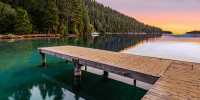
How Much Does It Cost to Dock a Catamaran? (7 Locations)
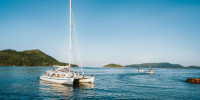
The Perfect Size Catamaran to Sail Around the World

17 Sailboat Types Explained: How To Recognize Them
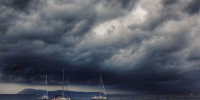
What Type of Hull Handles Rough Water the Best?

Catamaran and Monohull Compared: Which is Better, Faster, Safier, and More Stable in Rought Sea?
Catamarans and monohulls are two vessels that have distinct features from each other. Catamarans have two hulls connected by a bridge structure whereas, as the name suggests monohulls have a single hull.
Both types of vessels have different features in terms of both aesthetics and function, let’s get into the details to find out more.
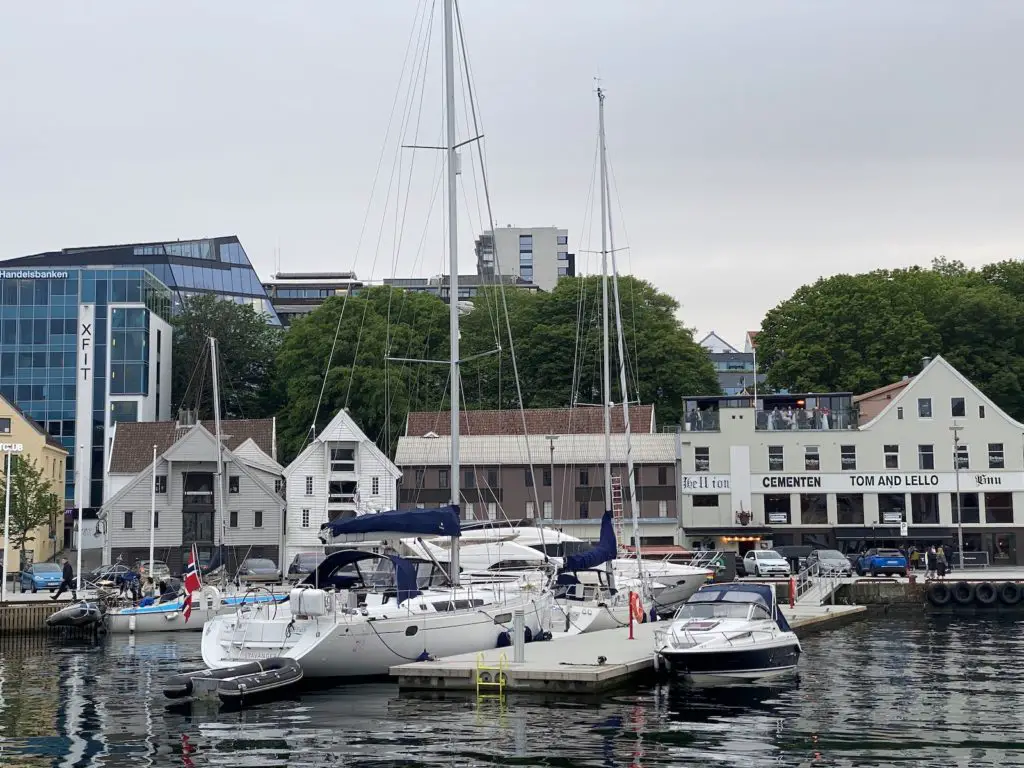
Do Catamarans Have More Space?
Since catamarans have two hulls, they are normally wider than monohulls. This gives the designers and owners the flexibility to maximize the space requirements in terms of space and function.
Vessels can be designed for either commercial or recreational uses. The additional space can serve as an advantage in both fields. In terms of recreational vessels such as yachts, the accommodation can be split up between the two hulls and can be well designed in such a manner that separate spaces can be allotted for the owner, guest, and crews with separate passages such that the path between the primary guests and the crew don’t collide.
In terms of interiors, the huge space addition can give the owners much more flexibility in choosing furniture without size restrictions and more space for additional appliances such as washers, dryers and so on which can make life on board much easier.
The deck can also house more people without the feeling of being enclosed in a closed space and for this reason, catamarans are normally used as party boats with wider deck space and more space to move around.
In terms of storage, catamarans have better storage options than monohulls as both the hulls can be utilized for different functions which not only increases the overall capacity of storage in terms of fuel , fresh water , cargo, and so on but also gives the designer an option to segregate the storage areas for different uses.
Catamarans are also now a growing trend in the fishing industry as the wide decks provide more area for the fisherman to move around without any obstructions making fishing much easier also, catamarans tend to roll less which stabilizes the vessel better than monohulls, giving more stable conditions for fishing without the risk of going aboard.
Due to the wider proportions, the spaces can also be designed in such a way so as to house tenders, jet-skis, and so on, on either of the deck spaces normally aft of the vessel mostly functioned by a small crane which can launch the vessel into the water.
Recreational activities such as swimming and diving can be performed with ease on both types of boats. On catamarans, the wide aft spaces also provide effective spacing for housing equipment and accessories such as dive tanks, telescopic staircases and so on which can serve as must-haves for similar activities.
The same can also be performed on monohulls with limitations to the width of the vessel. The wide superstructures on catamarans can also be used to house solar panels for green and renewable energy solutions which surely is going to be a great advantage in the near future.
Monohulls have the advantage of having wider compartments below the deck when compared to catamarans, as the overall width of the hull is larger than a single hull on a catamaran. This gives room for larger living spaces below the deck, which can have the option to walk around on either side of the bed.
Why Are Catamarans More Expensive Than Monohulls?
Catamarans are normally priced more than monohulls. This is because they have more overall area which requires more raw materials in the production stage than monohulls.
In terms of machinery, they have two or more engines on each hull depending on the width of each semi-hull and its supporting machinery which can increase the overall cost of the final product.
In terms of engines, maintenance is less frequent when compared to monohulls as they don’t need to operate on their maximum limits to push the vessel.
Maintenance costs can also be higher for catamarans as they have more machinery and more deck space, but on the contrary, the ease of maintenance will be much better in catamarans than monohulls as they have better accessible spaces.
The preventive maintenance for corrosion and marine growth on catamaran hulls is also higher as they normally have more area to treat than monohulls.
Are Catamarans Faster Than Monohulls?
Catamarans tend to outperform monohulls due to their slender hulls which help in reducing the drag forces. On performance power catamarans the space between the two hulls is called a “Tunnel” which is designed in a similar manner to an aerofoil so that it acts like a wing, which increases the aerodynamic lift forces thereby increasing overall efficiency and top-end speeds of the vessel.
The balance between the hydrodynamic and aerodynamic forces is the key aspect that determines the performance and stability of high-speed catamarans.
Fuel economy is normally better on catamarans due to the higher lift forces and lower water friction compared to monohulls which thereby reduces the overall load on the engines, reducing fuel consumption.
Is A Catamaran More Stable Than A Monohull?
Catamarans are generally more stable than monohulls in terms of roll stability. Let’s take an example of balancing a stick in the middle compared to balancing it by supporting the two ends, obviously, the second case has an advantage. In a similar manner, we can observe that catamarans have better roll stability when compared to monohulls.
This gives them an upper hand in terms of comfort and executing different operations onboard the vessel with ease, also reducing the risk of people falling on board the vessel. Catamarans are mostly used as ferries or passenger vessels as people tend to get less seasick on these kinds of vessels.
The deeper the deadrise the better the sea-keeping characteristics, most monohulls are designed with a deep v deadrise and tend to outperform catamarans which normally have displacement or semi-displacement hulls, in rough waters.
The typical catamarans are better in shallower water than rough water due to this reason and that’s why we see most of the coastal or inland cruisers as catamarans and most ocean-going vessels as deep v monohulls.
The draft can be defined as the distance of the waterline to the keel of the vessel. Catamarans normally tend to have a lower draft compared to monohulls which gives them an advantage of plying over shallower waters without the risk of grounding.
The lower the draft of the less the vessel, the less it is in contact with water, and therefore the overall water friction resistance is reduced leading to the need for lower power to push the vessel and better fuel efficiency.
What Is Easier To Sail A Catamaran Or Monohull?
For the thrill of sailing most sailors prefer monohulls over catamarans. They are sensitive to different forces like wind and waves acting on the vessel and there is an immediate response on the vessel. They ride through rough and choppy waves; this is the experience the sailors look forward to, giving them an adrenaline rush.
Sailing catamarans do not respond similarly to monohulls as the overall motions are reduced and also monohulls maneuver much easier than catamarans at high speeds.
Docking in marinas usually is easier with monohulls than catamarans as they require lesser space to mauver into the docking space.
Which Is Safer Catamaran Or The Monohull?
Catamarans normally tend to be on the safer side than monohulls in terms of backups and safety. If any machinery fails there is always a backup, say for example if rudder machinery fails on the port hull we can always get back ashore with the help of the starboard rudder, similarly if an engine fails there is always the second engine which can be used as a backup.
In terms of reserve buoyancy, if the port side hull gets damaged, the vessel will still remain afloat. These advantages can help people on board keeping them safe and saving a life.
The only downside to the above aspects is the maintenance costs which come up with the same as we discussed earlier.
Which One Should I Get?
The type of vessel should depend totally on your end goals in terms of functionality, performance, region of operation, and so on.
But always keep in mind never to get blinded by the length when you compare a monohull to a catamaran. A monohull in comparison might be longer but the overall space which is measured in cubic space will be higher in the shorter-length catamaran.
Going through the pros and cons the final decision should be made depending on your personal requirements.

- Recent Posts
- The Role of Cargo Ships in Global Trade – August 22, 2024
- Report: Yang Ming’s YM Mobility Explosion at Ningbo-Zhoushan Port – August 9, 2024
- Understanding Drillships: Types, Key Features and Advancements – August 1, 2024
About the author
I worked as an officer in the deck department on various types of vessels, including oil and chemical tankers, LPG carriers, and even reefer and TSHD in the early years. Currently employed as Marine Surveyor carrying cargo, draft, bunker, and warranty survey.
Latest posts

The Quality Control Process in Marine Manufacturing
Companies in the marine manufacturing space must have tight and effective quality control processes. What steps should an effective quality control process include?

The Role of Cargo Ships in Global Trade
Contents show Volume of Goods Transported by Sea Key Global Trade Routes Economic Impact of Maritime Shipping Types of Cargo Commonly Transported Environmental Considerations Conclusion Cargo ships are the lifeline […]
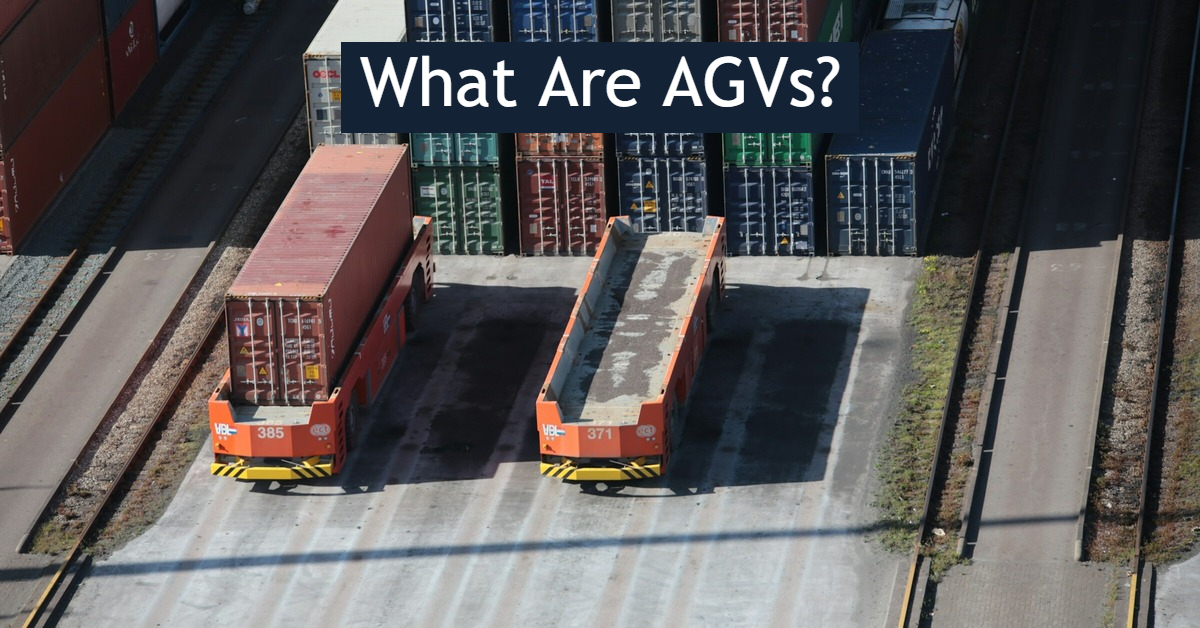
What Are AGVs? Automation Becoming Increasingly Common in Seaports
What are AGVs? Automated guided vehicles can minimize the troubles of manual operations and enhance seaport operations.
- Sailing Heavy Weather: Yacht vs. Catamaran - Choosing the Right Vessel for Rough Seas
When it comes to sailing, one of the most exhilarating experiences is navigating through heavy weather. The clash of wind and waves, the challenge of maintaining control, and the thrill of conquering the elements make it an adventure like no other. However, choosing the right vessel can significantly impact your safety and comfort during such conditions. In this comprehensive guide, we will explore the differences between yachts and catamarans when it comes to sailing in heavy weather. Whether you're a seasoned sailor or a novice, understanding the advantages and disadvantages of each vessel will help you make an informed decision.
Yacht vs. Catamaran: The Basics
Yachts are known for their elegance and traditional design. They are single-hulled vessels with a deep keel that provides stability in calm waters. However, when it comes to heavy weather, yachts have some limitations:
- Less Stability : Yachts have a narrower beam, which makes them less stable in rough seas.
- Heeling : Yachts tend to heel or lean to one side in strong winds, making them more challenging to control.
- Slower Speed : Yachts are generally slower than catamarans, which can be a disadvantage when trying to outrun a storm.
Catamarans, on the other hand, have gained popularity for their unique design and superior performance in various conditions. Key advantages of catamarans in heavy weather include:
- Stability : Catamarans have a wider beam, which provides excellent stability, reducing the risk of capsizing.
- Reduced Heeling : Catamarans remain level even in strong winds, offering a more comfortable sailing experience.
- Speed : Catamarans are faster due to their twin-hull design, allowing you to navigate heavy weather more efficiently.
Sailing a Catamaran in Heavy Weather
If you've chosen a catamaran for your heavy-weather adventures, it's essential to understand some essential tips and techniques:
1. Reef Early
When you see dark clouds or feel the wind picking up, reef your sails early. Reduce the sail area to maintain control and prevent capsizing.
2. Keep a Close Eye on the Weather
Stay updated with weather forecasts. Modern technology and apps make it easier than ever to monitor changing conditions while at sea.
3. Maintain Speed
Catamarans thrive on speed. Keep moving forward to maintain control. Avoid pointing directly into the wind, as this can lead to a capsize.
4. Balance the Load
Distribute weight evenly to ensure the catamaran remains balanced. This is crucial for stability during heavy weather.
5. Practice Seamanship
Learn and practice seamanship skills, including handling waves, steering techniques, and emergency procedures.
Catamaran for Sale: Finding the Right One
If you're considering purchasing a catamaran for heavy-weather sailing, you'll find various options on the market. Here are some tips for finding the perfect vessel:
1. Budget-Friendly Options
Explore catamarans for sale in the Caribbean if you're looking for affordable options. The region offers a wide range of choices at competitive prices.
2. Performance Matters
Consider a performance catamaran for sale if you plan to sail in challenging conditions frequently. These vessels are designed for superior speed and stability.
3. Size Matters
Choose a catamaran size that suits your needs. Smaller models are more manageable for solo sailors, while larger ones offer more space for crew and equipment.
Heavy Weather Sailing: Yachts vs. Catamarans
Now that we've covered the basics let's delve deeper into the comparison between yachts and catamarans in heavy weather sailing.
Yachts in Heavy Weather
1. hull design.
Yachts typically have a monohull design with a single, deep keel. While this design provides stability in calm waters, it can be a disadvantage in heavy weather. Yachts are prone to heeling, where they lean to one side in strong winds. This heeling can be uncomfortable for passengers and challenging for the crew to manage.
2. Capsizing Risk
Due to their single-hull design, yachts have a higher risk of capsizing in heavy weather. When hit by a strong gust of wind, a heeling yacht can reach a critical angle of heel, leading to a potential capsize. This risk necessitates vigilant seamanship and early reefing of sails when sailing a yacht in heavy conditions.
3. Speed and Maneuverability
Yachts are generally slower than catamarans, which can be a disadvantage when trying to outrun or navigate through a storm. Their deeper keel design may limit their ability to sail in shallower waters, reducing their maneuverability.
Read our top notch articles on topics such as sailing, sailing tips and destinations in our Magazine .
Check out our latest sailing content:
Catamarans in heavy weather, 1. stability.
Catamarans are known for their stability in heavy weather. Their twin-hull design provides a wider beam, making them less prone to heeling. This stability offers a more comfortable and secure experience for passengers.
2. Reduced Heeling
Unlike yachts, catamarans remain level even in strong winds. This reduced heeling minimizes the risk of items falling and passengers feeling seasick. It also makes it easier for the crew to maintain control of the vessel.
3. Speed and Efficiency
Catamarans excel in heavy weather due to their speed and efficiency. Their twin-hull design allows them to slice through rough seas with less resistance. This speed can be crucial when trying to outrun or navigate through storms, improving safety and comfort.
Sailing a Catamaran in Heavy Weather: Advanced Techniques
As you gain experience in heavy weather sailing with a catamaran, you can explore advanced techniques to enhance your skills and safety:
6. Use Storm Sails
Invest in storm sails specifically designed for heavy weather conditions. These smaller, more robust sails are easier to control and maintain stability.
7. Master Reefing
Perfect the art of reefing your sails quickly and efficiently. Proper reefing is crucial for maintaining control and preventing over-pressuring the rigging.
8. Learn Heavy Weather Navigation
Study advanced navigation techniques for heavy weather conditions. This includes understanding wave patterns, currents, and strategies for avoiding dangerous areas.
9. Emergency Procedures
Familiarize yourself with emergency procedures such as man overboard drills, deploying sea anchors, and abandoning ship protocols. Being prepared for the worst-case scenario is essential for safe heavy weather sailing.
Catamaran for Sale: What to Look For
When searching for the ideal catamaran for heavy weather adventures, consider these additional factors:
4. Seaworthiness
Ensure the catamaran you choose is designed for seaworthiness. Look for features such as reinforced hulls, robust rigging, and watertight compartments for added safety.
5. Accommodation
Consider the number of cabins and the layout of the catamaran. Adequate accommodation is essential for comfort during extended heavy weather voyages.
6. Equipment and Safety Features
Check for essential equipment such as life rafts, EPIRBs (Emergency Position-Indicating Radio Beacons), and other safety features. These can be lifesavers in case of emergencies.
Sailing in heavy weather can be both a challenge and an adventure. Your choice between a yacht and a catamaran significantly impacts your experience. While yachts offer elegance and tradition, catamarans provide stability and speed, making them a popular choice for adventurous sailors. Remember to practice safe seamanship, stay informed about weather conditions, and continually improve your skills to ensure a successful voyage.
So what are you waiting for? Take a look at our range of charter boats and head to some of our favourite sailing destinations.
I am ready to help you with booking a boat for your dream vacation. Contact me.

Denisa Nguyenová

Catamaran Vs. Monohull: Which Is Better?
When considering sailboats for cruising or liveaboard purposes, two primary options often come to mind: catamarans vs. monohulls. We know, because we’ve been there!
Having sailed full-time for four years on a monohull before swapping to a catamaran with the impending arrival of baby, we really understand the whole catamaran vs. monohull debate, and it isn’t clear cut.
Both types of vessels have their own unique characteristics, advantages, and considerations. Understanding the differences between catamarans and monohulls can help individuals make an informed decision based on their specific needs and preferences.
Catamarans are known for their spaciousness, stability, and comfort. With their twin-hull design and wide beam, catamarans offer generous living spaces, expansive decks, and increased privacy with separate hulls.
The stability provided by the twin hulls creates a smoother ride, reduced rolling motion, and enhanced comfort in a variety of sea conditions. Catamarans also tend to have better maneuverability, fuel efficiency, and shallow draft capabilities.
On the other hand, monohulls are characterized by their sailing performance and versatility. Their single-hull design, deep keel, and ballast provide excellent upwind performance and responsiveness.
Monohulls offer a traditional sailing experience with the sensation of heeling and a closer connection to the water.
They are often more cost-effective in terms of initial purchase price and maintenance expenses. Monohulls also provide more options for docking in marinas with narrower slips.
Choosing between a catamaran and a monohull ultimately depends on individual preferences, intended use, and priorities.
Factors to consider include space requirements, stability preferences, sailing performance, budget, cruising plans, and personal comfort levels. Spending time on both types of boats and seeking advice from experienced sailors can help in making a well-informed decision.
In the following sections, we will delve deeper into various aspects of catamarans and monohulls, exploring their advantages and considerations, including stability, speed, cost, maintenance, maneuverability, and more.
By examining these factors, individuals can gain a comprehensive understanding of which type of sailboat may be more suitable for their specific needs and aspirations.

As an Amazon Associate, we earn from qualifying purchases. We also earn from other affiliate programs. This means we may receive a small commission on products purchased through our links at no extra cost to you.
Table of Contents
Which is better catamaran vs. monohull, the advantages of catamarans, the advantages of monohulls, the disadvantages of catamarans, the disadvantages of monohulls, are monohulls safer than catamarans, maintenance, ability to maneuver.
- Fuel Efficiency
Which Is Better In Rough Seas?
- Which makes a better liveaboard Sailboat?

There are lots of advantages to both catamarans and monohulls. Both can be excellent sailing or power vessels and suit various different needs. There is always a big debate among sailors about which is actually better and honestly, we don’t have the answers!
There are so many plus and minus points for each that it’s hard to come to a logical conclusion without knowing a certain sailor’s needs first.
What advantages does one have over the other? Let’s explore that now to help you decide which one is right for your individual needs.

Catamarans offer several advantages that make them popular choices for various marine applications.
One key advantage is their superior stability. The two parallel hulls provide a wide base, which distributes the weight evenly and reduces the likelihood of tipping or rolling. This stability is especially beneficial in rough seas, making catamarans a preferred choice for cruising, offshore sailing, and passenger transportation.
Another advantage of catamarans is their speed performance. The twin hulls reduce drag and increase buoyancy, allowing them to achieve higher speeds with less power.
Catamarans are often faster than monohull boats of similar size, making them popular for racing, chartering, and personal use. The speed advantage of catamarans can be particularly appealing for those who enjoy thrilling water sports or need to reach their destinations quickly.
Catamarans are also known for their fuel efficiency. The design of catamarans minimizes drag and weight, enabling them to achieve higher speeds with less power and fuel consumption compared to monohull boats.
This advantage becomes especially significant during long-distance cruising, where fuel costs can be substantial. The fuel efficiency of catamarans not only saves money but also contributes to a more sustainable and environmentally friendly boating experience.
In addition to stability, speed, and fuel efficiency, catamarans offer other advantages as well. Their wide beam provides ample deck space, offering more room for socializing, entertaining, and enjoying outdoor activities.
Catamarans often feature spacious cabins, making them comfortable for extended periods on the water, whether for leisurely cruising or living aboard. The dual hulls also provide increased buoyancy, allowing for shallower drafts and access to more secluded anchorages and cruising grounds.
Furthermore, catamarans generally have shallower keels compared to monohulls, which allows them to navigate in shallower waters and access remote areas that might be inaccessible to deeper-draft vessels . This versatility opens up a broader range of exploration possibilities for catamaran owners.
Overall, the advantages of catamarans, including stability, speed, fuel efficiency, spaciousness, and versatility, make them attractive options for a variety of boating enthusiasts.
Whether for leisurely cruising, racing, chartering, or living aboard, catamarans offer a unique combination of features that enhance the boating experience.

Monohull boats offer several advantages that make them popular among sailors.
One of the key advantages is their excellent seaworthiness, particularly in challenging conditions. The deep, V-shaped hulls of monohulls provide stability and a smoother ride through waves and choppy waters.
This design allows monohulls to cut through the water efficiently, making them well-suited for offshore sailing and bluewater cruising.
When out in huge waves during an unexpected storm I found it hard to imagine how a catamaran would cope compared to our heavy bluewater monohull that just plowed through the waves as though they were butter.
Another advantage of monohulls is their superior upwind performance. The single hull design allows them to tack more effectively and maintain a higher pointing ability, making them ideal for sailors who frequently navigate against the wind. This advantage is particularly important for racing sailors and those who enjoy exploring areas where upwind sailing is common.
Monohull boats are typically more maneuverable than catamarans. The single hull allows for sharper turns and greater agility, which can be advantageous in tight spaces, marinas, or when docking.
The ability to maneuver easily makes monohulls more versatile in navigating narrow channels, entering small harbors, or handling in confined areas.
Additionally, monohulls offer a wide availability and variety of models, sizes, and configurations. They have been the traditional and widely available choice in the boating industry for a long time. This abundance of options allows boaters to select a monohull that suits their specific preferences, needs, and budget.
Monohull boats also often have a lower initial cost compared to catamarans of similar size and quality. The construction and design of a monohull are typically simpler, resulting in a more affordable purchase price.
This cost advantage can be significant for individuals or families entering the boating world on a limited budget.
Finally, monohull boats are generally easier to dock and berth in standard marina slips. Their single hull design allows for straightforward docking procedures and fitting into narrower slips designed for monohulls.
This advantage simplifies the process for boaters who frequently visit marinas or require regular docking facilities.
It’s important to note that the choice between a monohull and a catamaran ultimately depends on individual preferences, intended use, and specific requirements. Both types of vessels have their unique advantages and considerations, and it’s crucial to carefully evaluate these factors when selecting a boat that best suits your needs.

Catamarans, despite their advantages, also have some disadvantages that should be taken into consideration.
One notable disadvantage is the cost. Catamarans are generally more expensive than comparable monohull boats. The construction, materials, and design complexity of catamarans contribute to their higher price tag.
Additionally, maintenance, docking fees, and insurance costs can be higher due to the larger size and wider beam of catamarans. We’re only just starting to find out just how much more they cost, and it isn’t insignificant!
Another disadvantage of catamarans is the limited availability of berthing options. The wider beam of catamarans can pose challenges when it comes to finding suitable berths in marinas. Many marina slips are designed to accommodate monohull boats and may not have sufficient space for catamarans.
This limitation may require catamaran owners to seek specialized marinas or rely more frequently on anchoring.
The wider beam of catamarans can make maneuvering more challenging, especially in tight spaces, narrow channels, or crowded marinas. The increased width may require additional care and skill when docking or navigating in confined areas. Catamarans may also require specialized docking arrangements or wider slips to accommodate their size.
In heavy weather conditions, catamarans may experience some performance limitations. While they generally provide excellent stability, their wider beam can make them more susceptible to windage and slamming.
The larger surface area exposed to the wind can result in more resistance and difficulties maintaining course in strong winds. Skillful handling and careful sail management are necessary to optimize performance in challenging weather conditions.
Additionally, some sailors enjoy the heeling sensation experienced on monohulls when sailing close to the wind. Catamarans, with their stable platform, lack this sensation since they do not heel to the same degree.
This absence of heeling can be seen as a disadvantage for sailors who enjoy the dynamic experience of monohull sailing.

Monohull boats also have their own unique set of disadvantages.
One of the main disadvantages is their stability compared to catamarans. Monohulls typically have a narrower beam and a single hull, which can make them less stable in certain conditions, particularly in rough seas.
This may result in more rolling and pitching motions, which can be uncomfortable for some passengers.
Another disadvantage of monohulls is their potential for heeling. When sailing close to the wind, monohulls have a tendency to heel or lean to one side. While this is a characteristic appreciated by many sailors, it can be a disadvantage for those who prefer a more stable and level sailing experience.
Monohulls also tend to have limitations when it comes to living space and interior layout. The narrow beam of monohulls can result in smaller cabins and reduced interior space compared to catamarans. This can be a consideration for individuals or families looking for more spacious accommodations on their boat.
Additionally, monohull boats may have more limited access to shallow or restricted areas due to their deeper draft. The single keel design of monohulls often requires a deeper depth requirement, which can limit their ability to explore certain cruising grounds or navigate shallow waterways.
Lastly, monohull boats generally have a lower initial stability when at rest compared to catamarans. This means that while they may have better stability underway, monohulls can feel less stable and more susceptible to rolling when anchored or at the dock.
This may require additional measures such as stabilizers or careful weight distribution to enhance stability at rest.
Comparing Catamarans Vs. Monohulls

We’ve compared some of the most important factors to consider when choosing a boat.
Ultimately, I don’t think either a monohull or a catamaran is superior to the other, but simply superior to the individual sailors’ needs. Before you decide which is right for you it’s a good idea to spend some time on both and work out what your priorities are when it comes to choosing a vessel.
Hopefully these comparisons will help a little!
The safety of monohulls vs. catamarans is a topic that can vary depending on several factors. It is important to note that both types of vessels have their own safety considerations, and the overall safety can depend on various factors, including design, construction, maintenance, and the skill of the captain and crew.
One aspect to consider is stability. Catamarans generally offer better initial stability due to their wide beam and twin hulls.
This stability can provide a more stable platform for passengers and crew, reducing the likelihood of rolling or heeling in rough seas. However, it’s important to note that catamarans can still capsize if pushed beyond their design limits or operated improperly.
Monohulls, on the other hand, have a narrower beam and a single hull, which can result in a higher tendency to heel or roll. However, monohulls are designed to recover from heeling due to their deep keel and ballast system.
They generally have a higher risk of capsizing compared to catamarans but will right themselves if this happens. This is a big thing to consider. Do you want a boat that is less likely to capsize but will be far more catastrophic if it does, or a boat that is designed to capsize and then right itself again?
Seaworthiness is another consideration. Both monohulls and catamarans can be designed and built to be seaworthy.
The quality of construction, design integrity, and adherence to safety standards play a significant role in the seaworthiness of any vessel. A well-maintained and properly equipped boat, regardless of its type, can handle a wide range of sea conditions safely.
Another aspect to evaluate is motion comfort. This can be subjective and may vary depending on individual preferences.
Some people may find the gentle rocking motion of a monohull more comfortable, while others may prefer the stability and reduced motion of a catamaran. It’s essential to consider personal comfort levels and any potential motion-related concerns when choosing a boat.
Lastly, it’s important to emphasize that the safety of any vessel depends on factors beyond the boat itself, such as the skill and experience of the captain and crew, adherence to safety protocols, and proper maintenance.
Regular inspections, safety equipment, and knowledge of emergency procedures are crucial for ensuring safety on any type of vessel.
In conclusion, the safety of monohulls versus catamarans is not a straightforward comparison. Both types of boats can be safe when used appropriately and in accordance with good seamanship practices.
It’s essential to consider the specific design characteristics, maintenance standards, and individual preferences when assessing the safety of a particular vessel.

When comparing the stability of catamarans vs. monohulls, it’s important to consider their inherent design characteristics.
Catamarans, with their twin hulls and wide beam, generally offer better initial stability than monohulls. The separation of the hulls provides a larger base and increased resistance to rolling.
This stability advantage is particularly noticeable at rest and in calm or moderate sea conditions. Catamarans tend to have a more level sailing experience and minimal heeling, which can be appealing to those who prefer a stable platform.
On the other hand, monohulls have a single hull and a narrower beam. This design makes them more prone to heeling, especially when sailing close to the wind or in stronger gusts.
However, monohulls are designed with deep keels and ballast systems to provide stability and the ability to recover from heeling. The combination of their keel and ballast works to counterbalance the forces acting on the sails, enhancing stability and minimizing excessive rolling.
It’s important to note that the stability of both catamarans and monohulls can be influenced by factors such as weight distribution, sail plan, and sea conditions. Improper loading or sail handling can affect the stability of any vessel, regardless of its design.
In terms of overall stability, catamarans often provide a more initial stable platform due to their wider beam and twin hulls. However, monohulls can offer a different kind of stability through their ability to recover from heeling and their long-established track record of safe offshore passages.
We would advise you to experience both types of boats firsthand, if possible, to get a better sense of their stability characteristics and determine which suits your needs and preferences best.
Speed: Catamarans vs. Monohulls

When it comes to speed, catamarans and monohulls have distinct characteristics and performance capabilities.
Catamarans are generally known for their high-speed potential. The design of a catamaran, with its two hulls separated by a wide beam, offers reduced drag and increased stability, allowing them to sail at higher speeds.
The wide beam also provides a larger surface area for sail plans, enabling catamarans to harness more wind power.
Due to their lightweight construction and reduced resistance in the water, catamarans can often achieve faster speeds, especially in reaching and downwind conditions.
Monohulls, on the other hand, have a single hull and a narrower beam. Their design may result in increased drag and slower speeds compared to catamarans, particularly in light wind conditions.
However, monohulls are well-suited for upwind sailing, thanks to their ability to heel and make use of the lift generated by their sails. This characteristic allows monohulls to excel in close-hauled or beating angles, which can be advantageous when sailing against the wind.
It’s important to note that the specific design, size, and rigging of a catamaran or a monohull can greatly influence their speed potential.
Different models, materials, and sailing configurations will have varying performance characteristics. Additionally, the skill of the captain and crew in optimizing sail trim and harnessing the wind’s power also plays a significant role in achieving maximum speed.

The cost of catamarans and monohulls can vary significantly based on several factors, including the size, age, brand, construction materials, and overall condition of the vessel.
It is essential to consider both the initial purchase price and the ongoing costs associated with owning and maintaining the boat.
Catamarans, in general, tend to be more expensive than monohulls of similar size and condition. The construction, materials, and design complexity of catamarans often contribute to their higher price tag.
The wider beam, twin hulls, and larger deck spaces of catamarans require more materials and labor during the construction process, leading to increased costs. Additionally, the popularity and demand for catamarans can also impact their pricing.
Maintenance costs can be higher for catamarans compared to monohulls. Catamarans typically have more deck space, more systems and equipment, and two hulls to maintain, which can result in increased maintenance and repair expenses.
Furthermore, the cost of haul-outs, bottom paint, and other services may be higher for catamarans due to their wider beam and potentially larger size.
Docking fees in marinas can also be higher for catamarans. Many marinas charge slip fees based on the length overall (LOA) and beam of the vessel. Catamarans, with their wider beam, may require larger slips, resulting in higher docking fees compared to monohulls.
However, it’s worth noting that docking fees can vary between marinas and regions, so it’s important to research and compare the costs in the specific areas where you plan to moor your boat.
Insurance costs for catamarans are typically higher than for monohulls. Insurance premiums are influenced by various factors such as the value of the boat, its size, cruising area, and the owner’s experience.
Catamarans often have higher values, and their wider beam may result in higher insurance premiums compared to monohulls. It is crucial to obtain insurance quotes specific to the vessel you are considering to understand the potential costs involved.
It’s important to keep in mind that these cost considerations are general observations, and individual circumstances may vary. Factors such as age, condition, location, and market trends can all influence the actual costs of catamarans and monohulls.
You can definitely buy an older catamaran in bad condition for less than a newer, ready to sail monohull as we did! Or opt for a small catamaran for cruising instead of a larger monohull.
Conducting thorough research, consulting with experts, and obtaining specific quotes and estimates are advisable when evaluating the cost implications of owning either type of vessel.
In conclusion, while catamarans generally tend to be more expensive to purchase, maintain, and insure compared to monohulls, the actual costs can vary significantly based on individual factors.
It’s crucial to assess your budget, intended use, and long-term financial considerations when deciding between a catamaran vs. a monohull.

The maintenance requirements for catamarans and monohulls can vary based on factors such as size, age, construction materials, and the specific equipment and systems onboard.
Catamarans typically have more deck space and systems to maintain compared to monohulls. With two hulls, there are generally more areas to clean, inspect, and maintain.
This includes the hulls, decks, and various components such as trampolines, rigging, and bridge decks. The larger deck areas and additional systems, such as two engines, may require more time and effort for cleaning, maintenance, and routine checks.
The hulls of catamarans often require regular cleaning and antifouling to prevent the growth of marine organisms and maintain optimal performance. Due to their wider beam, catamarans may have a larger underwater surface area, which can result in increased costs for haul-outs, bottom paint, and related services.
Monohulls typically have a single hull and a more streamlined shape, which may make certain maintenance tasks more straightforward. The single-hull design can simplify tasks like hull cleaning, inspection, and maintenance.
However, monohulls may have deeper keels and other appendages that require attention and occasional maintenance, such as keel bolts, rudders, and through-hull fittings.
Both catamarans and monohulls have various onboard systems and equipment that require regular maintenance, such as engines, generators, plumbing, electrical systems, and navigation equipment.
The maintenance requirements for these systems can be similar regardless of the hull type, as they depend on the quality of the equipment, usage patterns, and adherence to recommended maintenance schedules. On a catamaran though, remember you’ll have double of most things!
It’s important to note that maintenance needs can also be influenced by the quality of construction, materials used, and overall condition of the vessel. A well-maintained and properly cared-for boat, whether a catamaran or a monohull, is likely to require less maintenance and be more reliable in the long run.
Regular inspections, maintenance checklists, and adherence to manufacturer guidelines and recommendations are crucial for ensuring the safety and longevity of any vessel.
In conclusion, while catamarans may have more deck space and systems to maintain, the specific maintenance requirements can vary depending on individual factors. Regular cleaning, inspection, and upkeep of hulls, systems, and equipment are essential for both catamarans and monohulls to ensure their safe and reliable operation.
When comparing the ability to maneuver, catamarans and monohulls have some differences based on their design characteristics.
Catamarans generally have better maneuverability in certain aspects. Due to their twin-hull design, catamarans typically have a smaller turning radius, allowing them to make tighter turns compared to monohulls. This can be advantageous when navigating in tight spaces, such as marinas or narrow channels.
The wide beam of catamarans provides inherent stability, which can contribute to a more predictable and controlled maneuvering experience. They have a reduced tendency to heel, allowing them to maintain a more level sailing platform while executing maneuvers. This stability can be particularly beneficial when sailing in challenging conditions or when performing quick maneuvers.
Monohulls, on the other hand, have different maneuvering characteristics. Their single-hull design allows them to tack more efficiently when sailing upwind, taking advantage of the lift generated by their sails. Monohulls can often point closer to the wind compared to catamarans, making them more effective in beating angles.
Monohulls with deep keels and rudders may have better tracking ability and may be more responsive to helm inputs compared to catamarans. This can make monohulls more agile and responsive during maneuvers such as jibing or changing course.
However, it’s important to note that the maneuverability of any boat depends not only on its design but also on factors such as size, weight, sail plan (how many sailboat masts ), rigging, and the skill of the captain and crew. The performance and maneuverability of a vessel can be influenced by the specific model, its handling characteristics, and the experience of those operating it.
Ultimately, the ability to maneuver a boat effectively depends on the individual’s familiarity with the vessel, understanding of sailing principles, and proficiency in handling various sailing maneuvers.
Practice, training, and experience are key factors in mastering the maneuvering capabilities of any sailboat, whether it’s a catamaran or a monohull.
It’s worth noting that modern catamarans and monohulls often incorporate advanced sail handling systems, such as electric winches and bow thrusters, which can enhance maneuverability and make handling the boat easier in certain situations.
In conclusion, catamarans and monohulls have their own maneuvering characteristics based on their design features. Catamarans generally offer tighter turning radius and better stability, while monohulls may excel in upwind sailing and responsiveness.
However, individual experience, skill, and familiarity with the vessel play significant roles in maximizing maneuverability for either type of boat. I’m terrified of docking the new catamaran considering how much bigger it is, but with practice you can get used to any vessel.
Fuel Efficiency: Catamarans vs. Monohulls

When comparing the fuel efficiency of catamarans vs. monohulls, there are several factors to consider that can impact their respective fuel consumption.
Catamarans, with their wide beam and twin-hull design, generally offer better fuel efficiency compared to monohulls of similar size.
The reduced hull drag and increased stability of catamarans contribute to improved fuel economy. The efficient hull shape and reduced resistance in the water allow catamarans to glide through the water more easily, requiring less power to maintain a given speed.
Monohulls, with their single hull and narrower beam, typically have higher hull drag and may require more power to maintain similar speeds compared to catamarans.
However, modern monohull designs incorporate advancements in hydrodynamics and sail technology, which can help optimize fuel efficiency. Efficient hull shapes, bulbous bows, and streamlined appendages can all contribute to improved fuel economy in monohulls.
The specific speed and conditions of sailing can significantly impact fuel efficiency for both catamarans and monohulls.
Generally, sailing at lower speeds or utilizing downwind conditions can improve fuel efficiency, as it reduces resistance and minimizes the need for engine power. On the other hand, pushing a vessel to its maximum speed or sailing against strong headwinds can increase fuel consumption.
Other factors that can influence fuel efficiency include the size and weight of the vessel, the engine type and power, the sail plan, and the cruising habits of the captain and crew.
Efficient propulsion systems, such as modern diesel engines or hybrid electric systems, can further enhance fuel efficiency for both catamarans and monohulls.
It’s important to note that the fuel efficiency of any boat is also influenced by factors such as maintenance, proper hull cleaning, and overall vessel condition. Fouled hulls, dirty propellers, and inefficient systems can increase drag and reduce fuel efficiency.
Ultimately, the fuel efficiency of a catamaran or a monohull can vary depending on multiple factors, and it’s challenging to make broad generalizations. When considering the fuel consumption of a particular vessel, it’s essential to evaluate the specific design, size, engine setup, and cruising habits to obtain a more accurate understanding of its fuel efficiency capabilities.
In conclusion, catamarans generally offer better fuel efficiency compared to monohulls of similar size, thanks to their reduced hull drag and increased stability.
However, advancements in monohull design and technology have narrowed the gap, and modern monohulls can also achieve respectable fuel efficiency. The specific vessel, its design, engine setup, and cruising habits will ultimately determine the fuel efficiency of a catamaran or a monohull.

When it comes to determining which is better in rough seas, whether a catamaran vs. a monohull, it depends on various factors and personal preferences.
Both types of vessels have their own strengths and considerations in rough conditions and it took us a lot of research to work out that really there isn’t a ‘better vessel’, just different preferences.
Catamarans, with their wide beam and twin-hull design, generally offer better stability and reduced rolling motion in rough seas. The separation of the hulls provides a larger base and increased resistance to rolling, resulting in a more stable platform.
This can contribute to a smoother and more comfortable ride, particularly in waves or when the sea state is challenging.
The inherent stability of catamarans can also be advantageous when sailing in rough seas, as it reduces the tendency to heel excessively and maintains a more level deck. This can enhance safety and comfort for crew and passengers, as well as provide better accessibility to onboard amenities and reduce the risk of items shifting or falling.
Adam and I have always found that the constant rolling on our monohull caused lots of opportunities for accidents, and even sometimes prevented us from checking things on deck because we felt too unsafe to move around up there in heavy seas.
On the other hand, monohulls are known for their ability to handle rough seas and heavy weather conditions effectively.
Their single hull design, with a deep keel and ballast, allows them to slice through waves and provide a more predictable motion in challenging sea states. The weight and ballasting of monohulls contribute to their ability to maintain course stability and resist being pushed around by waves and wind.
Monohulls also have a reputation for their ability to “self-right” in extreme situations, where their inherent stability helps them recover from a knockdown or capsize. This characteristic can provide added safety and reassurance in rough seas.
It’s worth noting that the specific design, size, construction, and condition of a vessel can significantly influence its performance in rough seas.
Heavy weather sailing often requires proper preparation, including reefing sails, securing loose items, and ensuring the boat is seaworthy and equipped with appropriate safety gear.
Additionally, the skill and experience of the captain and crew play a crucial role in handling a boat in rough seas. Understanding the vessel’s limitations, practicing good seamanship, and making sound decisions based on prevailing conditions are vital regardless of the type of boat.
Which Makes A Better Liveaboard Sailboat?
Determining which sailboat makes a better liveaboard depends on individual preferences, lifestyle, and specific needs. Both catamarans and monohulls can offer advantages and considerations for liveaboard sailing.
Catamarans are often preferred as liveaboard sailboats for several reasons:
- Space and Comfort: Catamarans generally offer more interior space and living area compared to monohulls of similar size. The wide beam allows for spacious cabins, larger saloons, and generous deck space , providing a more open and comfortable living environment.
- Stability: Catamarans’ twin-hull design provides inherent stability, minimizing rocking and rolling motion. This stability can contribute to a more comfortable living experience, especially for those prone to seasickness or families with young children.
- Privacy: Catamarans often have separate hulls with cabins located in each hull. This layout can provide increased privacy, making them suitable for couples, families, or individuals who value their own space.
- Accessibility: The level decks of catamarans make it easier to move around the boat, especially for those with mobility challenges or families with young children. The absence of heeling allows for a more stable and safer environment while underway or at anchor.
Monohulls also offer advantages for liveaboard sailing:
- Sailing Performance: Monohulls are known for their sailing performance, particularly upwind. They typically have better windward ability and can handle a wider range of sailing conditions. If sailing and performance are priorities, a monohull may be preferred.
- Cost: Monohulls generally have a lower purchase price and maintenance costs compared to catamarans of similar size and condition. This can be advantageous for those on a tighter budget or looking to minimize expenses.
- Traditional Experience: Many sailors appreciate the traditional experience of sailing a monohull. The heeling sensation and close connection to the water can provide a sense of adventure and immersion in the sailing lifestyle. We have to say, we loved the romance that living on board our monohull gave.
- Docking and Marinas: Monohulls generally require narrower slips, making them more suitable for certain marinas and docking situations where space may be limited. This can provide more flexibility in choosing berthing options (and cheaper too!)
Ultimately, the choice between a catamaran and a monohull as a liveaboard sailboat depends on individual preferences for space, comfort, stability, performance, budget, and intended use. Check out the best shallow draft liveaboard sailboats .
We would recommended you spend time on both types of boats, perhaps through charters or boat shows, to experience firsthand their layout, handling, and suitability for living aboard.
If you can’t do this, then we would suggest you buy a cheap boat to start with and spend six months living aboard to work out what you really want and need from a liveaboard boat.
Consulting with experienced liveaboard sailors can also provide valuable insights and perspectives based on their own experiences, and watching sailing YouTube channels can also help you form an idea of what you might need.
Conclusion: Catamaran Vs. Monohull

In conclusion, the choice between a catamaran and a monohull depends on various factors and personal preferences. Both types of sailboats offer distinct advantages and considerations.
Catamarans excel in areas such as spaciousness, stability, and comfort. Their wide beam provides ample living space, and their twin-hull design offers inherent stability, making them popular choices for liveaboard sailors seeking a comfortable and roomy living environment.
Catamarans also have advantages in terms of maneuverability, fuel efficiency, and shallow draft capabilities.
Monohulls, on the other hand, are known for their sailing performance, particularly upwind. They offer a traditional sailing experience with a heeling sensation and a closer connection to the water.
Monohulls generally have lower purchase and maintenance costs compared to catamarans, making them more budget-friendly options. They can also be advantageous in certain docking situations and marinas that have narrower slips.
It is important to consider factors such as space requirements, stability preferences, sailing performance, budget, and specific cruising plans. It is advisable to spend time on both types of boats to gain firsthand experience and insights into their handling, comfort, and suitability for specific needs.
Consulting with experienced sailors, attending boat shows, and seeking professional advice can also provide valuable guidance in making an informed decision.
Ultimately, selecting the right sailboat, whether a catamaran or a monohull, is about finding the vessel that aligns with your preferences, lifestyle, and goals for the sailing experience.
Similar Posts

Gill Sailing Gear 2024: Is It Worth The Hype?

Bottom Paint For Boats: Your Options 2024

How To Start A Life At Sea
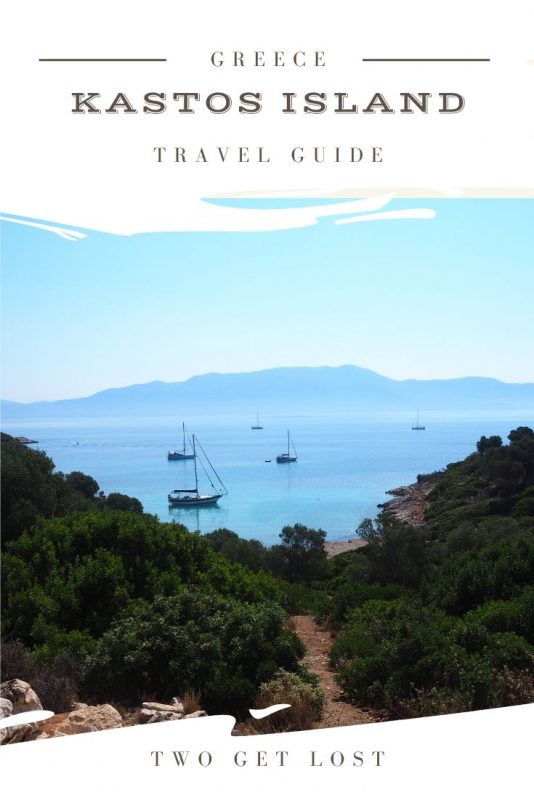
The Best Of Kastos In Greece 2024: The Ultimate Guide
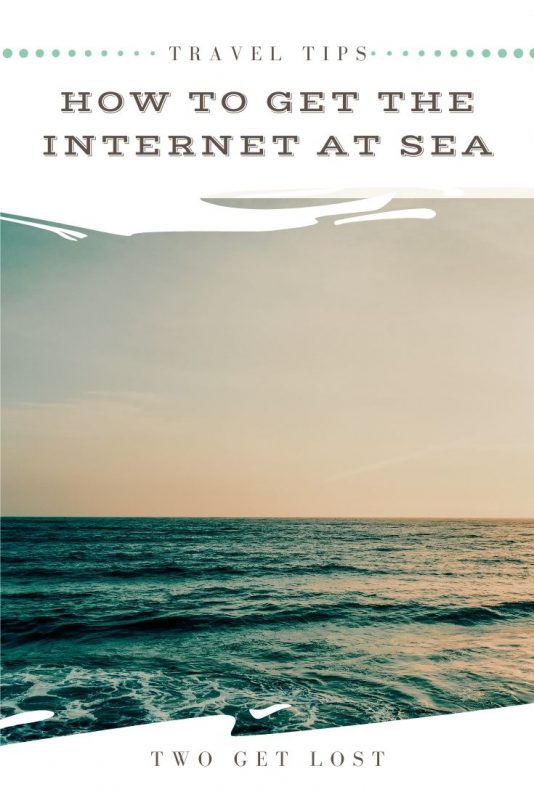
How To Get The Internet At Sea When Sailing 2024

Sailing The Dodecanese

Are Catamarans Good in Rough Seas?- Expert Insights!
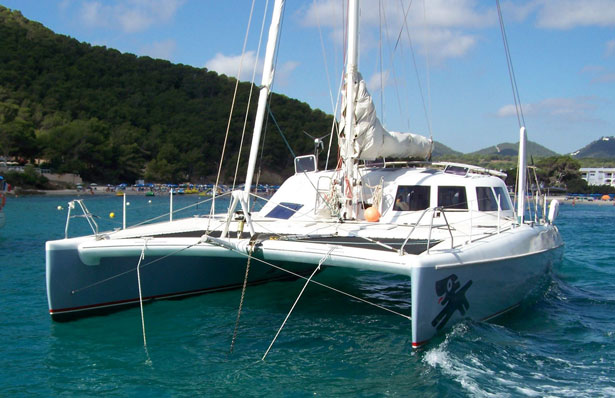
When it comes to sailing, the stability and performance of your vessel in various sea conditions are paramount. Now, if you’re curious about multihulled vessels, specifically catamarans, you might be asking yourself, are catamarans good in rough seas?
It’s a valid question, especially considering that the open waters can be unpredictable and challenging.
Catamarans, with their two hulls, offer a distinctive design that can influence how they handle when the waves get choppy and the wind picks up.
Let’s delve into the features that make catamarans a subject of interest for many sailors and explore how they measure up when the sea decides to show its wild side.
Table of Contents
Are Cats Good In Rough Sea Conditions?
Yes, catamarans are generally considered good in rough waters. They are known for their stability, which is due to their wide beam and the fact that they have two hulls. This design allows them to remain more level than monohulls, which can heel over significantly. Catamarans also have two rudders, providing additional control and maneuverability in rough seas, which means you can steer the boat more easily and avoid waves better. However, it’s important to note that while catamarans have these advantages, the safety and performance in rough waters also greatly depend on the skill and experience of the crew, as well as the specific design of the catamaran.
Are Catamarans Safer Than Monohulls In Rough Conditions?
Catamarans designed for cruising are considered safe in turbulent waters, yet they pose unique challenges compared to traditional single-hulled sailboats. Let’s see their differences and how each boat performs in rough seas.

Single-hulled vessels incorporate ballast either within or attached to the lower part of the hull. For instance, a 30-foot single-hulled sailboat may carry over a ton of lead as ballast. This significant weight at the base ensures that the vessel sways with the wind and waves but largely stays upright, similar to a pendulum that keeps the vessel balanced.
However, even the most well-crafted single-hulled boats can be tipped onto their sides in severe weather conditions. If the vessel is secured with all openings sealed and doesn’t take on water, it should right itself after rolling.
Yet, if struck by strong winds from the side, a single-hulled boat can capsize. Another risk is when a boat speeds over large waves, potentially causing the bow to plunge into the water on the other side, resulting in a pitch hole—a somersault motion of the vessel. While such incidents are uncommon, they can occur in both sailboats and motorboats.
If a boat is well-prepared for such events, with all ports and hatches sealed, it should be able to recover from capsizing, though not without potential damage to the mast, rigging, and interior. Surviving such an ordeal is possible, albeit distressing.
In the most extreme conditions, no vessel is entirely unsinkable. Yet, both large and small single-hulled sailboats have weathered severe storms, such as typhoons and hurricanes, thanks to their ballast and robust construction.
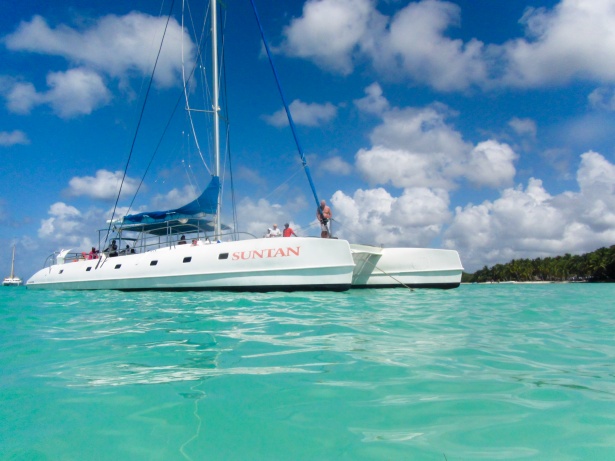
The dynamics are different with catamarans, which typically lack ballast. Instead, they rely on their broader beam for stability to stay upright. Nevertheless, in sufficiently strong winds, even the broadest catamarans can capsize, an event often understatedly referred to as “turtling.”
Racing catamarans frequently experience capsizing as part of their sailing experience. They use the crew’s weight for stability and are often sailed at steep angles. If a racing Cat capsizes, the crew can manually right the vessel by exerting considerable effort.
In contrast, large cruising catamarans cannot be easily righted once capsized, and they are not designed to sail with their hulls significantly elevated out of the water. Therefore, it’s crucial to reduce sail area early when winds intensify.
Despite being infrequent, accidents do occur, and even the largest catamarans can capsize in extremely strong winds. Additionally, catamarans tend to be faster than monohulls , which increases the risk of pitch-poling.
It is accurate that catamarans typically do not sink because they lack ballast. This implies that in the event of capsizing, your large catamaran essentially turns into a vast, albeit costly, raft, which is ironically more stable when it is upside down.
Nevertheless, the likelihood of a large catamaran capsizing is quite low, and many cruising catamarans have successfully navigated oceans under various weather conditions. With skilled handling and attentive weather monitoring, cruising catamarans can be considered just as secure as their monohull counterparts for cruising purposes.
Often Asked Questions
Q: Is it rare for a catamaran to capsize?
The stability of a catamaran varies with its size. Smaller catamarans, which often lack cabins, can capsize with relative ease, but this isn’t typically a serious issue as they can be righted without too much trouble. Larger catamarans are less prone to capsizing due to more cautious handling, as righting them once overturned is a significant challenge.
The stability of catamarans is largely due to their broad beam or the width between their dual hulls. This design feature contributes to their upright stability.
However, in the event of a capsize, this same feature ensures that they remain stable, even when flipped over. The wide beam, combined with the submerged rigging, keeps the overturned vessel steady in the water.
Q: Why Do Catamarans Capsize?
Catamarans can capsize due to a couple of main reasons:
- Pitchpoling : This is when a catamaran flips end over end, which can occur if the bows of the boat dig into the water, causing the stern to lift and flip over the bows. This is often the result of excessive speed or surfing down a wave that leads to the bows ‘burying’ into the next wave.
- Lateral Capsize : This happens due to wind action, especially when the wind hits the catamaran beam-on, and can be the biggest contributor to catamaran capsizes. It occurs if the windward force overcomes the boat’s stability, which can happen if there’s too much sail for the wind conditions or if a sudden gust hits the boat.
In both cases, managing the sail area and understanding the limits of the catamaran’s stability in varying conditions is crucial to prevent a capsize. Reducing sail in strong winds and being cautious with boat speed can help avoid your catamaran from capsizing.
Q: How do catamarans handle large waves?
Catamarans are stable but can be a bit bouncy in choppy seas because they’re usually lighter and can skip over the tops of waves rather than cut through them. This can make the ride a bit uncomfortable if the waves are coming from all directions, which is known as a confused sea state.
Another thing is that because catamarans have a wider beam, which is the width of the boat, including the space between the hulls, they can be more affected by strong winds. The wind can push on that wide area and make the catamaran harder to control.
Despite these challenges, catamarans are generally considered safe and capable in rough seas, especially if they are designed for ocean crossing. They have a lot of buoyancy , and the two hulls provide a good amount of redundancy – if one hull gets damaged, the other can help keep the boat afloat. Plus, their shallow draft, which is how deep the boat goes below the waterline, means they can avoid some underwater hazards that deeper boats might hit.
In the hands of an experienced skipper who knows how to adjust the sails and speed for the conditions, a catamaran can be a good choice for navigating through rough waters. But like any boat, it’s important to respect the sea and understand the limits of your vessel.
Final Words!
In conclusion, catamarans can be good in rough seas due to their stability, comfort, and design features that can handle challenging conditions. But like any boat, they have their limits and require a knowledgeable and attentive crew to navigate safely through rough waters. It’s always essential to respect the power of the sea and ensure that your vessel is well-maintained and your sailing skills are up to the task, no matter what type of boat you’re on.
Want More Tips?
Subscribe to Cruising Sea newsletter to receive every two weeks the latest posts straight to your inbox!

Daniella has been passionate about travel, the sea, and nature for many years. As a child, she frequently traveled throughout the Mediterranean and continued with her journeys throughout her adult life.
Her experiences have created the desire within her to share her love for traveling with other passionate and adventurers who want to discover beautiful horizons and new cultures.
Leave a Comment Cancel reply
By using this form you agree with the storage and handling of your data by this website. *
- Catamaran vs. Monohull: What Type of Boat is Right for You?
- Sailing Hub
- Sailing Dilemmas
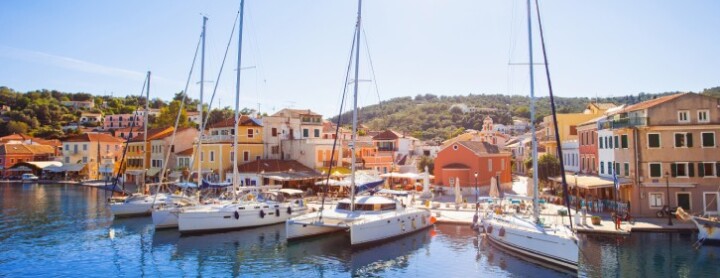
- Catamaran vs. Monohull - which one should you choose?
When you are planning a sailing holiday, you’ll be faced with a choice; catamaran vs. monohull. Each type has many benefits, but it’s important to think about what your needs are because that will tell you just which one to pick!
Let's dive right in!
Ease of sailing
Maneuverability, space/layout, holiday vibe.
You may also like: Sailing holiday destinations for your next boat trip
One of the top considerations you should have is what type of sailor you are because catamaran vs monohulls offer a distinctly different sailing experience. If you are a first time sailor and just want something incredibly easy to handle, then a catamaran will probably win out.
Catamarans have great control when it comes to maneuvering in tight places. Since they have twin engines and rudders, you get a lot of control and can turn pretty much 360 degrees with ease.
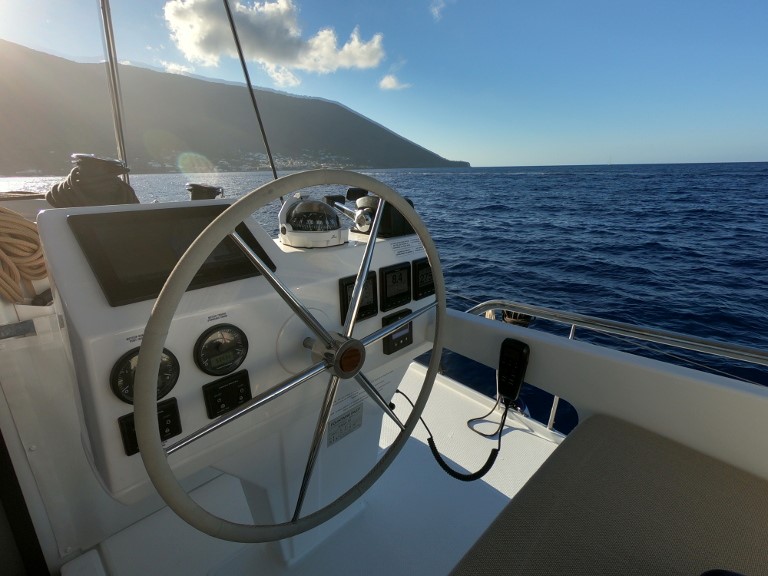
Catamarans also have a shallow draft, which will allow you to explore much closer to the shoreline than a monohull would be able to venture.
In the catamaran vs monohull speed debate, it might be more of a draw. Catamarans are typically 25-30% faster than a comparable monohull, but some argue that it comes at a price. When catamarans are sailing full speed you might experience a lot of slapping from the waves. Monohulls are designed to cut through the water. Also note that catamarans can be inefficient upwind and tack slowly.
When considering sailing conditions , a catamaran vs monohull in rough seas will perform very differently.
During rough sailing, you must be more vigilant when on a catamaran. The feedback from the wheel of a cat is not as obvious as that from a monohull. In high winds, you’ll need to know when to reduce sail.
However, monohulls tend to roll more in stormy weather, while catamarans stay pretty level even in rough seas.
When thinking about catamaran vs monohull stability, the stability that catamarans offer is a huge draw for many. Since cats bounce with the waves less, it is easier to walk around and enjoy the yacht while in motion. The increased stability is also great for children, or seniors, or anyone who might be prone to seasickness. When it comes to catamaran vs monohull seasickness, catamarans come out on top.
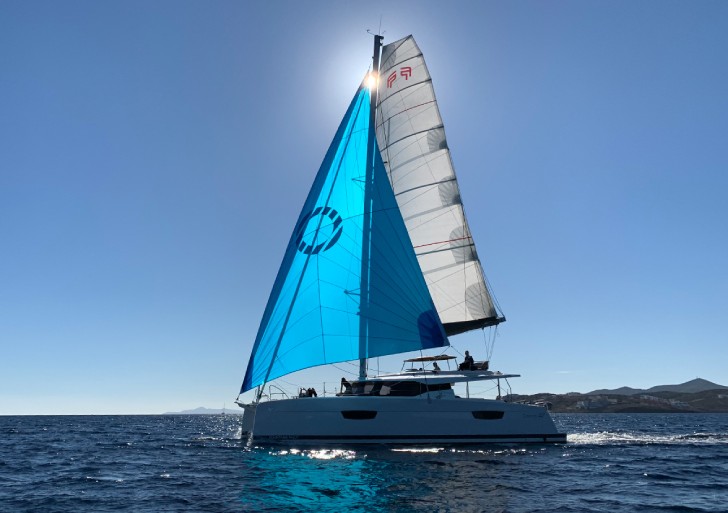
Although it is worth noting that monohulls swing less than catamarans if placed side by side in an anchorage.
If you’re deciding on a catamaran vs. monohull, you’ll have to think about what type of group you have. For family sailing holidays , maybe a catamaran is the best choice. Catamarans are very spacious, offering a large living space, and many cabin/head options. This makes them optimal for parties that want to spread out. Whether you’re a family, a big group of friends, or even couples looking for a 5 star, luxury experience who appreciate the extra space and comfort even if it’s not needed, a catamaran can fit your needs.
If thinking about catamaran vs monohull liveaboard readiness, the catamaran is a top contender. With far more living space and a much more spacious kitchen, Catamarans are great for people and groups that want to focus on entertainment and lounging.
Catamarans also typically have more spacious cabins and more privacy due to the layout with the cabins separate from the living area. This way you can send the kids to bed, and still enjoy the kitchen, dining, and living area.
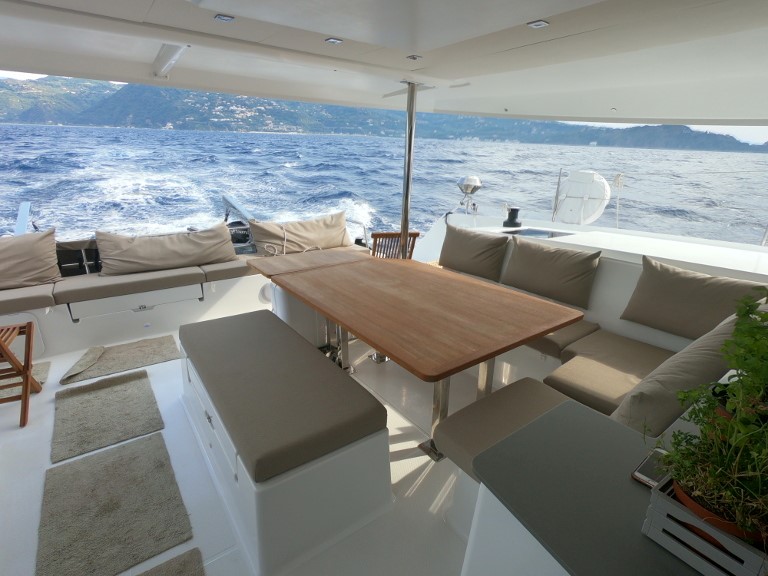
While catamarans are often touted for being roomy and luxurious, it’s worth nothing that monohull yachts can also be large and luxe. The Oceanis 62 and the Jeanneau 64 are top choices for those who want to live in the lap of luxury during their sailing holidays , while still getting that real sailing yacht experience.
In terms of catamarans vs monohull price , a monohull will definitely win. Charter prices for a catamaran can be 50-100% higher than that of a comparable sailing yacht. But that can be boiled down to the fact that you’re getting more space and more equipment with a catamaran!
A monohull, will only have one of everything - like it’s name suggests. It has one hull, one engine, one rudder, whereas a catamaran has twice the equipment and twice the living space of a monohull of the same length.
Another catamaran vs monohull cost to consider is the mooring costs. A catamaran, due to its twin hulls, might use two spots. Monohulls take less space to moor, and will be less expensive in that regard.
The cost of fuel should also be a consideration and in the question of catamaran vs monohull fuel efficiency, catamarans are the winner. With easy to drive hulls, and super light weight, they have great fuel efficiency.
Lastly, there is an abundant supply of monohull charters yachts, so the charter costs tend to be less to match the demand.
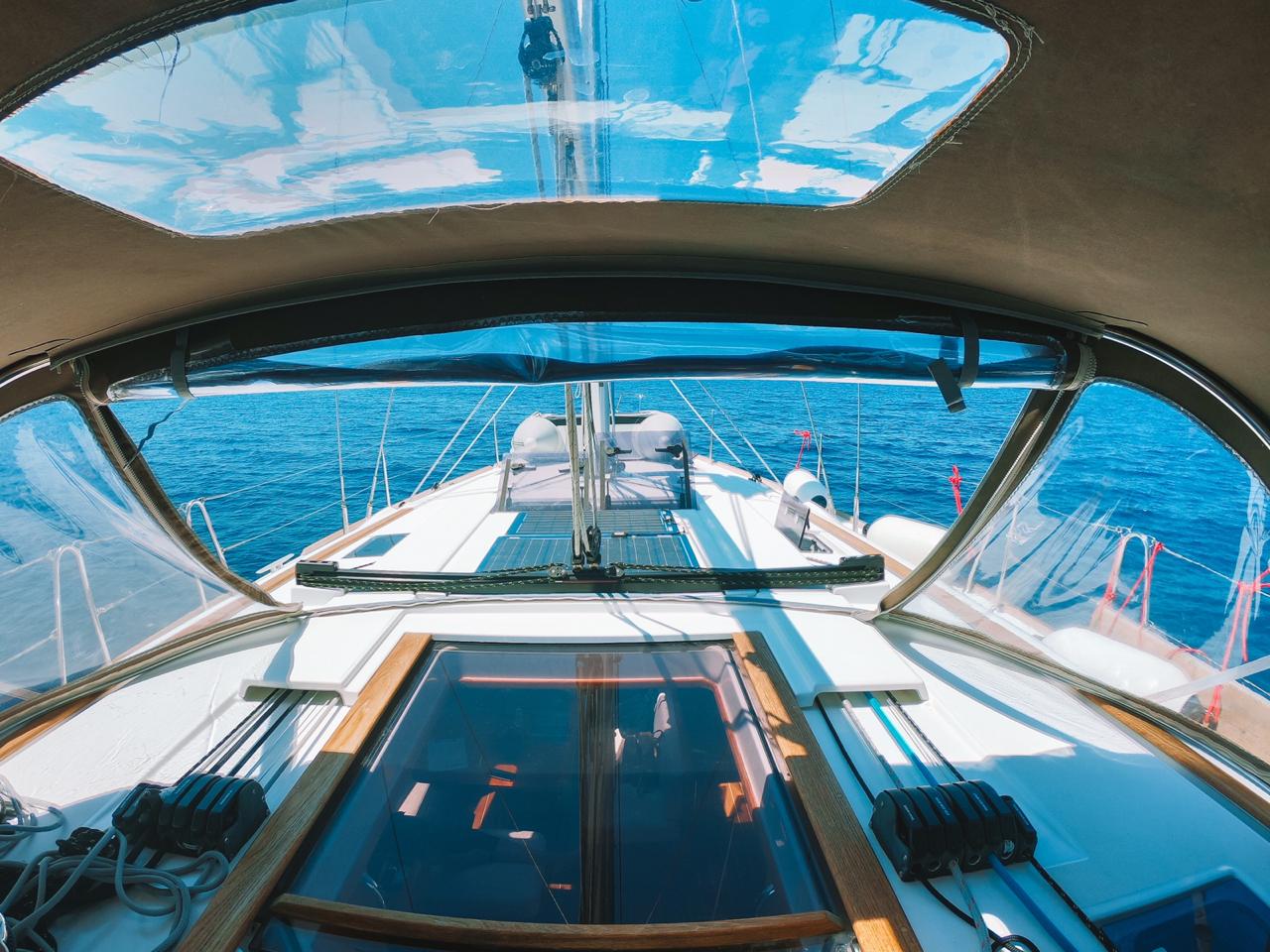
In the end, what it all comes down to is preference. In terms of performance, price, and comfort, catamarans and monohulls both have a lot going for them. You just need to decide what kind of holiday vibe you’re looking for, and Yacht4Less can help you with the rest!
At Yacht4Less we recommend fully crewed catamaran charters if you’re looking for top-of-the-line luxury and a super relaxing holiday where you don’t have to lift a finger. These boats will offer the space and comfort you’d expect from a 5-star hotel.
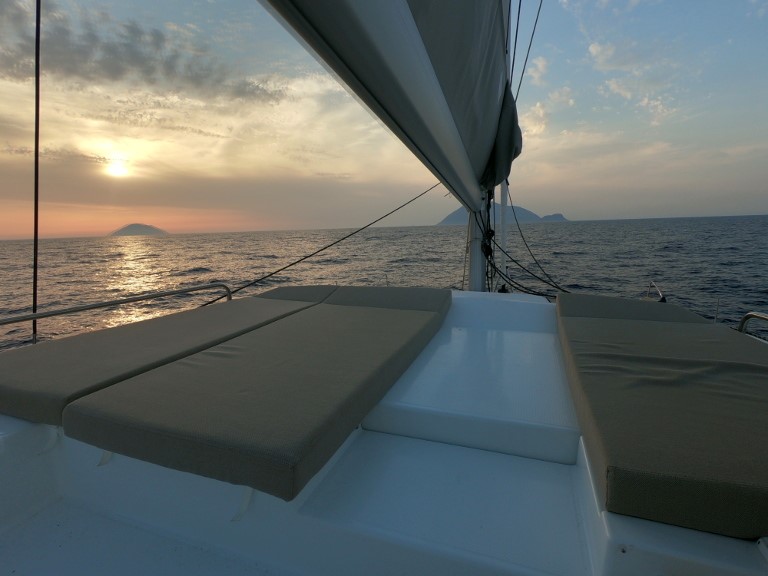
If you’re looking for a hands-on sailing adventure holiday, you might want to do a skippered charter with a monohull.. Your captain can show the ropes and help you learn how to sail. Or if you’re already an experienced sailor, go for a bareboat monohull charter . The exhilarating feeling of sailing a monohull is unmatched. It’s the classic romantic sailing experience, and makes for a thrilling holiday.
For those looking for a sailing experience somewhere in between extravagant luxury and exciting escapades, Yacht4Less is here to help you find the perfect boat for your needs. More sailing holiday dilemmas? We got you covered! Sailing Holidays vs. Land-Based Holidays » Party Sailing vs. Natural Wonders »
Get a free & non-binding quote

My Cruiser Life Magazine
Monohulls or Catamarans – Which is Best for the Cruising Sailor?
The debate between catamarans vs monohulls still rages, and most boaters are firmly on one side or the other. The truth is, either a catamaran or a monohull can provide a wonderful way to enjoy sailing, traveling, and being on the water.
Both have advantages and disadvantages, and both have large and loud fan clubs. The choice between a catamaran and a monohull depends on your budget, lifestyle, and personal preferences.
My wife and I have owned both types of vessels over the years. After five years of cruising on a Lagoon catamaran, we decided to go old school and bought our current boat—a heavy, full-keel monohull. The catamaran was fun, for sure—but it wasn’t for us in the end. Here’s a look at all of the differences we learned about during our journey.
Table of Contents
Life at anchor, life at a dock, life underway, living space, storage space, ride comfort and motion at sea, maintenance time and costs, docking and maneuvering, capsize risk, hull breach scenarios.
- Rigging Safety
Rigging Strength and Configuration
Monohull vs catamaran speed, thoughts on catamaran vs monohull for circumnavigation, deciding monohull vs catamaran, faqs – catamarans vs monohulls.
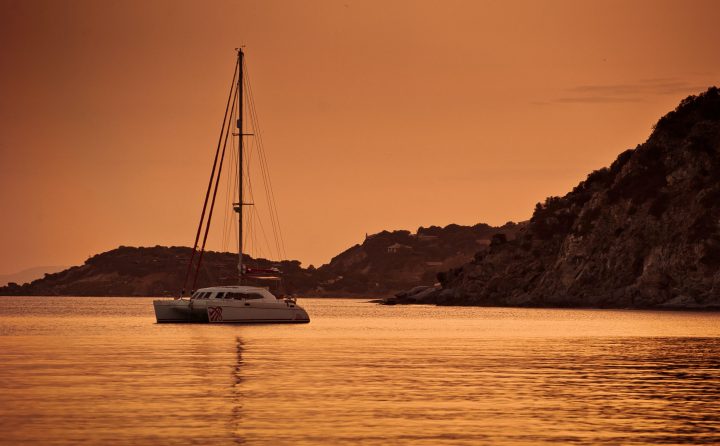
Life on Sailing Catamarans vs Life on a Monohull Vessel
At anchor, a catamaran provides superb comfort and living space. The “upstairs” cockpit and salon mean that boaters can enjoy non-stop wrap-around views. Monohull boaters are stuck in their caves and must peek out of their small portlights or climb into their cockpits to view the world.
A modern catamaran will also have swim steps that make it easy to get on and off the boat and provide easy access to dinghies and water toys.
If there’s an uncomfortable roll or swell in the anchorage, the catamaran’s stability will make the roll a bit less noticeable. Monohull boaters are more likely to be adversely impacted in a rolly anchorage. This does not mean that the cat owners are getting a perfect night’s sleep every evening, however. Catamarans just have a different motion in rocky anchorages, not a lack of motion.
Life at a dock gets a little more tricky for catamarans. Most marinas were built long before the catamaran trend and feature traditional slip sizes meant for monohulls. Marinas have to put catamarans on t-heads or make other accommodations. Therefore, it can be harder and more expensive to find a catamaran-friendly dock.
Once at a dock, the massive space of a catamaran can be harder to heat and cool efficiently. Catamarans usually need several air conditioners or heaters installed, whereas a monohull can get by with only one or two. That also means that cats might need more power (50 or 100 amp service instead of 30 amp) than some marinas can provide.
Monohulls will have fewer issues finding marinas that can accommodate them, and they pay standard rates.
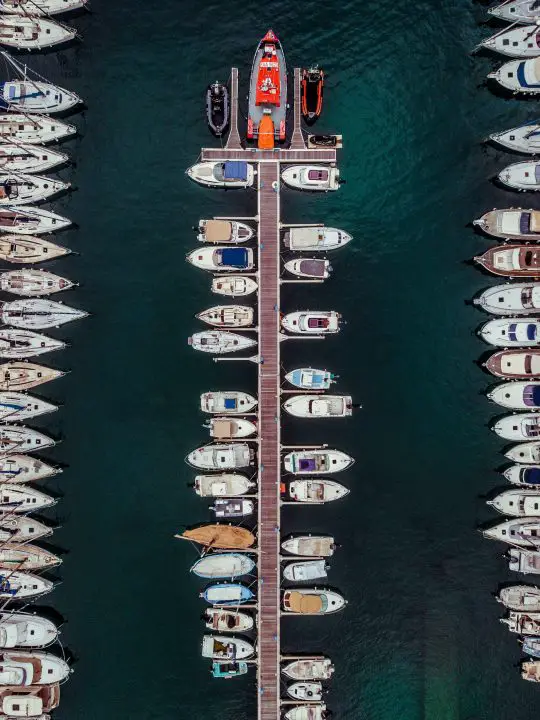
When sailing in protected waters, catamarans usually speed past their monohull friends. A catamaran provides a flat ride and sailors can move around their boats easily to make sail changes as needed. Walking on a catamaran’s deck is undemanding.
Catamaran sailors also have many options to rest comfortably underway. Because catamarans don’t heel over, catamaran sailors can sleep in their usual cabins. They can move about the interior of the boat with ease. Cooking in the galley doesn’t usually look any different underway.
In similar conditions, a monohull will heel over. Some sailors love the feeling of being heeled over and feeling the wind in their hair. Some don’t. It can be more challenging to walk the decks and work sails on a monohull vs a catamaran. While in the cockpit, monohull sailors will want to sit on one side and may even need to brace themselves to stay comfortable. For long trips, there is no doubt that living while heeled over for days at a time is exhausting.
Moving around the interior of a monohull boat at sea is also more challenging. Monohull sailors usually sleep in sea-berths with lee cloths instead of their usual quarters. It would be very uncomfortable to sleep in a v-berth underway, as the bow may be continuously pitching in seas. The lee-cloth in the sea-berth helps keep a resting sailor in their berth instead of falling onto the floor.
Monohull boats have gimbaled stoves. Even while the boat is heeled over, the galley stove will remain level. However, cooking in a monohull while underway is still more challenging than cooking in a catamaran since the cook needs to constantly brace themselves against the heel and rolling motion.
At the same time, none of this is to say that catamaran sailors have it easier at sea. In reality, catamarans may be more level, but they feel every wave in the ocean twice. The result is a choppy, bumpy ride with no rhythm. It can be just as tiring as being heeled over in a monohull.
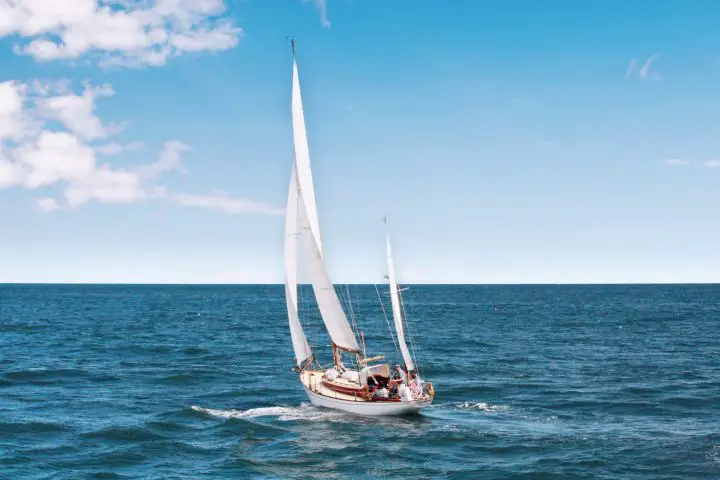
Catamaran vs Monohull Sailing Compared
Here are just a few ways that catamarans differentiate themselves from monohulls as platforms for living aboard.
- Living space—quantity and quality
- Storage space and weight
- Budget—purchase and routine maintenance
- Maintenance
- Catamaran vs Monohull for Circumnavigation
- Docking and close-quarters maneuvering
Catamarans have significantly larger and often more attractive living spaces. On the other hand, the living space on a monohull is usually small and can be dark due to small windows.
A monohull’s cockpit tends to be small and focused on safety. Families are more likely to feel in each other’s way, and moving around while others are seated can be awkward. On a catamaran, the cockpit is likely to be large and social. Catamaran cockpits have large tables and lots of lounging space in the cockpit.
Catamarans have large trampolines forward, which provides another comfortable, social lounging space that monohulls lack. Many catamarans also feature additional lounge space via the large cockpit roof.
The salon on a monohull is located in the main cabin. A monohull’s salon will be smaller than a similarly-sized catamaran. Often there is a small table, room for several people to sit, and a single sleeping berth.
Catamarans feature a wide bridge deck that crosses both hulls. This large living area features great visibility, ventilation, and natural light. On some catamarans, the galley is located on the bridge deck (called “galley up”), and on others, the galley is located in one of the hulls (called “galley down”).
Monohulls have sleeping quarters in the bow and stern of the boat. On smaller monohulls, the main sleeping area is usually a v-berth. Older, smaller monohulls usually have just one head.
On a catamaran, the sleeping quarters are located in each hull. These cabins often feature regular-sized boat beds and large en-suite heads. Cabins on a catamaran usually offer more privacy than monohulls.
Catamarans are popular with charter companies because large families or groups of friends can enjoy living on a boat together in style and comfort. Each will have a private cabin and a private head. In addition, if you want to find space to exercise, do yoga, or watersports, you’ll find these activities much easier and more comfortable on a catamaran.
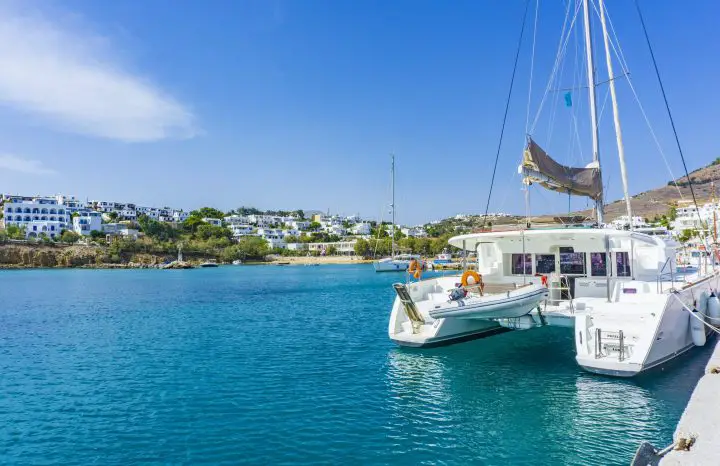
Catamarans have more space in general and certainly have more storage space. The additional deck space catamaran designs offer lends to easy storage for larger items, such as paddleboards and kayaks. Catamarans can often hoist and store larger dinghies than monohulls can. Large compartments make storage easy.
However, many catamaran owners are very cautious about storing too much. Additional weight can slow down a catamaran’s performance speeds. With so much space to put things in, it’s remarkably easy to overload a cruising catamaran. Many owners complain about the performance of smaller cats, when in reality they are often just badly overloaded.
Monohulls have less space and less storage. Finding space for big items like water toys can be challenging. But monohullers worry less about weight and freely carry around their cast iron skillet collections—because weight doesn’t impact performance on a monohull nearly as much.
This is a consideration when cruisers consider adding additional equipment. For example, a catamaran owner will have to consider the added weight of a generator and its detriment to sailing speed. In contrast, a monohull owner will have to consider finding space for the new generator.
Some prefer the motion of a monohull while sailing. Monohulls heel over but are steady, and sailors usually get used to the heeling motion. On a catamaran, if conditions are good, the boat won’t heel and will provide a comfortable ride.
When sailing upwind, some catamarans experience bridge deck slamming. Waves get caught between the two hulls and create a slamming motion and sound. It’s hard to predict the timing and strength of each slamming motion, so some catamaran sailors can find it tiresome.
The amount of bridge deck slam varies from boat to boat. Catamarans with higher bridge decks will experience less slamming, while boats with bridge decks closer to the water experience more.
Beyond that often-discussed issue, there is also the issue of the boat’s motion. It’s very difficult to imagine how different the motions are when compared to one another. The monohulls slice through the waves, usually with a predictable rhythm. A catamaran, built lightly to sail fast, feels more like it bounces over the tops of waves. The crew will feel each impact as each hull hits each wave. The result is a choppy, unpredictable motion—but it’s generally flat and level.
Monohulls have been around for ages. Therefore, sailors just starting out can find inexpensive, older monohulls. If you have a tight budget, you’ll probably start looking for a monohull.
Catamarans are newer to the market. Therefore, the initial purchase price of a catamaran is likely to be higher. Monohull buyers can often find a used, well-equipped, comfortable monohull for less than $100,000. Catamaran buyers usually spend upwards of $250,000 for a used cruising catamaran.
Because monohulls have been produced for so long, there is much more supply. The catamaran’s more modern pedigree means that there are always fewer catamarans on the market than monohulls. As more and more customers are drawn to the attractive living space and stable sailing offered by catamarans, demand keeps going up, while supply remains low.
Besides the higher up-front costs, catamarans are more expensive to keep and maintain. A monohull usually just has one engine. A monohull might have one head (bathroom) and will generally have less equipment. Monohulls have less space and storage, after all. Catamarans have twin engines, multiple heads, more hatches—more everything.
With more equipment, catamarans have higher maintenance costs. When a monohull owner services their engine, they have just one engine. A catamaran owner will need to service twin engines. Furthermore, each hull on a catamaran usually has separate and independent systems like bilge pumps, plumbing, fuel, water tanks, holding tanks…the list goes on.
A monohull owner will paint one hull bottom and wax only one hull. A catamaran owner will do everything twice. Therefore, the effort and cost of maintenance are often doubled on a catamaran.
Not only does it cost more money, it can also be harder to accomplish maintenance on a catamaran. You see, catamaran owners have fewer options to haul out. Most older boatyards have travel lifts that only accommodate boats up to 18 or 20 feet wide. Therefore, catamarans need to find a boatyard that has a large enough travel lift or a trailer to haul them. Because there is less supply and more demand for these larger travel lifts, the cost of hauling out a catamaran is often higher.
While some monohulls have lifting or swing keels and can reduce their draft, most catamarans have a shallow draft. This allows them greater flexibility while choosing anchorages. Even if a catamaran and monohull boat choose the same anchorage, the catamaran can get closer to shore and get better wind protection.
One final big difference between these two types of vessels is their ability to maneuver in tight spaces. Monohull sailboats are notoriously difficult to maneuver around docks and marinas. They often have poor visibility from the helm and difficult handling, especially in reverse. The single-engine design often requires a bow thruster, even on smaller boats.
The contrast that catamarans offer is pretty stunning. Even though they appear massive and ungainly in comparison, their twin engines mounted far outboard enable them to spin in their own length. Catamarans can be maneuvered in pretty much any direction using only differential thrust from the engines–all without a bow thruster.
Safety Considerations — Are Cruising Catamarans Safe?
Since most people have only limited experience with these vessels, many people wonder are catamarans safe. Even though they have been making large cruising cats for decades now, most of us have only really played on Hobie cats at the beach. And if there’s one thing we know about Hobie cats, it’s that they’re a lot of fun until you flip it over!
Here’s a look at a few safety considerations and how catamarans stack up against monohulls.
- Catamaran stability — capsize potential
- Hull breaches and sinking risk
- Rigging failures
- Designing for speed
- Redundancy on board
So, can you capsize a cruising catamaran? The answer is yes, no matter what the fanboys and girls say. It is technically possible but highly unlikely. Cruising cats are massive, and in all likelihood, you’re more likely to break the rigging than flip the boat. But in rough seas and extreme conditions, it does happen even on modern catamarans.
If a monohull encounters strong winds and rough weather, it will heel and roll significantly—but it will keep righting itself. In dire conditions, the vessel could suffer a knockdown. But a monohull will always right itself after a roll—it has tens of thousands of pounds of heavy keel to ensure that it does. Of course, the rig and anything on deck will sustain serious damage in the process, but the boat will be upright in the end.
In the same scenario, while unlikely, a catamaran can capsize. And the catamaran will then remain capsized, with no possibility of righting itself.
One of the scariest risks at sea is that of a serious hull breach, one that a bilge pump couldn’t keep up with. For example, a boat could be holed by an errant floating object or suffer a stuffing box or through-hull failure.
If a monohull sailboat is holed, it could sink straight to the bottom of the ocean. The crew would be left with only a liferaft and whatever they were able to recover before the sinking.
But a catamaran is filled with foam and is (more or less) unsinkable. If a catamaran experienced a hull breach or capsizes, it would take on water and may become less habitable. However, it will still float. In many cases, not much of the boat is left above the water—but it’s still at the top of the water.
Boaters may be able to perform emergency repairs and get the boat to port themselves. Or, they may have to stay with their vessel until help arrives. In either scenario, the crew maintains access to supplies and can stay with a much larger vessel, increasing the likelihood of being found and rescued.
Some catamaran sailors are so certain of their vessels floating in all scenarios that they don’t even carry a liferaft aboard. This is fool-hearty, to say the least, given the crazy and unpredictable things that can happen to any boat on the ocean. But one scenario is equally scary for the monohull or the catamaran sailor and should convince everyone that any offshore vessel should have a liferaft—the possibility of an uncontrollable fire.
Rigging Safety
When wind speed increases, a monohull will heel over. This heeling motion sheds the excess power of the wind. Monohull boaters should pay attention to the weather and reduce sail to ensure they aren’t overpowering the boat. This is why knowing how to reef a sail is so important for all sailors.
However, on a catamaran, the sails and rigging take the increased load when wind speed increases. Catamarans don’t heel, and therefore, don’t shed excess power. If the weather becomes gusty and a catamaran has too much sail up, all that extra power is transferred to the sails and rigging.
This can cause a dangerous situation. For example, there have been reports of catamarans being de-masted in sudden gusts of wind. In a worst-case scenario, a catamaran could capsize if they are over-canvassed when experiencing extreme wind conditions.
Most monohulls have strong standing rigging. The forestay is connected to a solid structure, the hull. This means that the forestay has a strong, stable platform and gives a monohull better upwind performance. Monohulls also usually have backstays, which provide rigging redundancy.
On a catamaran, the forestay is attached to a crossbeam. Because the platform is not as rigid as a monohull’s hull, the forestay is not as strong. In addition, catamarans usually don’t have backstays, and therefore have less rigging redundancy.
The configuration of the rigging is another rigging consideration. On a monohull, the spreaders and shrouds are perpendicular to the mast. Most catamarans come with fractional rigs that don’t have backstays, and their shrouds are set far back. Because of this configuration, catamaran sailors can’t let their mainsails out all the way on a downwind run because the shrouds are in the way. This leads to less efficient sail shapes when sailing downwind.
However, catamaran sailors can rig their sails to sail wing-on-wing. While monohull sailors can also use this configuration with the help of a whisker pole, catamaran sailors have a nice, wide, stable platform to fly large downwind sails.
There’s no doubt about it–catamarans sail faster. Most articles and comparisons state that catamarans are about 20% faster than a similarly sized monohull. Catamarans have a lower wetted surface area and less drag than monohulls. They’re especially nice to sail in light winds, conditions that heavy cruising monohulls tend to not do well in.
While most cruising cats can’t sail upwind as high as monohulls can, they still win the race. However, if a catamaran has daggerboards and a good sail inventory, it can point as well as a monohull.
Many boat owners believe that speed equals safety, as you might be able to outrun an impending storm. That’s a debatable strategy since weather systems often move faster than any cruising boat can move. It has a lot more to do with planning and the decisions made by the skipper, in the end.
Furthermore, more speed means a rougher ride. A heavy, full-keeled monohull might not move very fast, but the sea-kindly and forgiving ride means a more comfortable and better-rested crew. This only goes to illustrate that the “more speed” argument is far more of a personal preference than many sailors admit—especially when it comes to long-distance cruising.
A faster boat provides a skipper with more options, but it does not ultimately equal inherent safety. That will always come down to the skipper and the crew, and the choices they make. A slow boat in the hands of an experienced and careful crew will always be safer than a fast racer under the command of an inexperienced and green crew. In other words, there is no replacement for seamanship and careful planning.
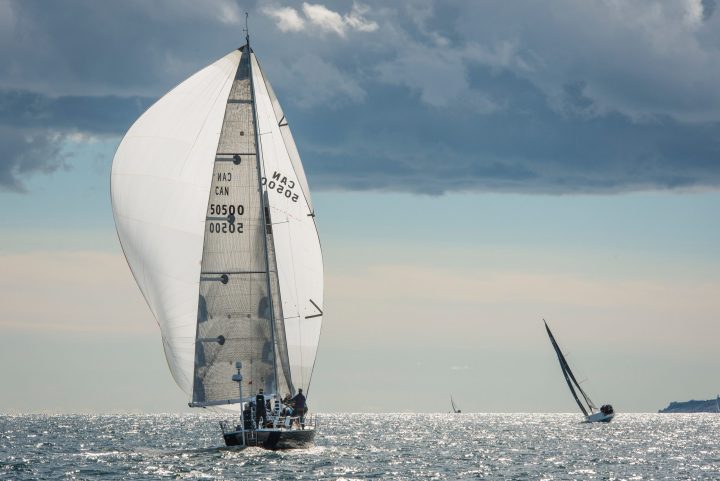
Catamarans have two of everything. While this does equal double the cost and maintenance, it also provides redundancy. If a monohull’s single engine dies and there is no wind, they may have to call for a tow or wait for wind. If a catamaran’s left engine dies, sailors can just continue on the right engine.
Twenty years ago, the majority of boats completing circumnavigations were classic bluewater monohulls. Monohulls are considered safe and capable circumnavigators.
But today, catamarans are establishing themselves as the more desirable choice for many circumnavigators. Catamarans are fast, stable, and capable of crossing oceans. In addition, catamarans can carry significant supplies and offer redundancies. Plus, the extra space that catamarans provide also means that the crew will enjoy watersports like diving, paddle boarding, and surfing.
Since nearly all traditional routes are downwind “milk runs,” catamarans naturally excel along the way. If you take a look at the competing boats for the World ARC rally for the last few years, a definite trend is growing. More catamarans compete every year. Common entrants include Lagoon 450s and Antares 44s.
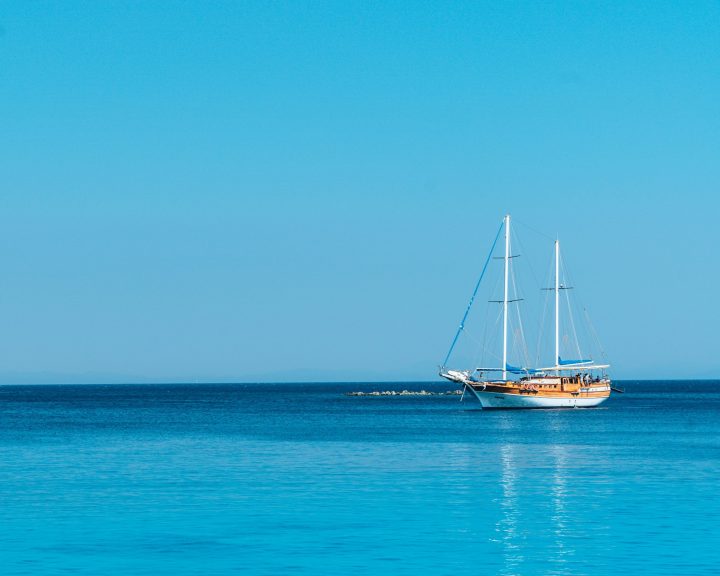
One of the most significant decision points when thinking about catamarans versus monohulls is your budget. If your budget is under $100,000, a monohull will be your best bet. If your budget is between $100,000 and $250,000, you can consider a smaller, older catamaran. Catamarans such as PDQs, Prouts, and Geminis will be in your budget. If you have a budget of over $250,000 and can afford higher dockage and maintenance costs, you can consider a catamaran.
Next, consider your comfort level. To try it out, you might want to charter both a monohull and a catamaran. Check out a sailing vacation in the BVI or with a company like Cruise Abaco. Taking classes at our local sailing school might also be helpful. https://cruiseabaco.com
Many folks are attracted to the larger, more comfortable spaces of a catamaran. However, some people feel more seasick on a catamaran and can’t get used to the motion. So a lot of your decision will come down to personal preference.
If you can’t imagine squeezing into a darker, smaller cabin in a monohull, then a catamaran might be calling your name. On the other hand, if you are a traditionalist who loves heeling and boats with a lot of teak, a monohull might be your dream boat. It’s just impossible to know how a boat will make you feel until you’ve experienced both.
Boaters often discuss the compromises involved in boat choices. Whether you choose a monohull or a catamaran, there will be some compromises involved. However, no matter which boat you choose, you can enjoy smooth sailing, beautiful anchorages, and some adventure along the way.
Worried about getting caught in severe storm conditions in your boat ? Visit our guide!
Which is better monohull or catamaran?
Both monohulls and catamarans are popular choices for cruising sailors. Which one is better depends entirely on your personal preferences and which boat is more comfortable and appealing to you. If you are on a tight budget, a monohull is your best choice. On the other hand, if you love large open living spaces, a catamaran will be the better option.
Which is safer catamaran or monohull?
When wondering are catamarans safe, always remember that the primary determinant of the safety of a vessel is its captain, not the vessel itself. Both monohull sailboats and cruising cats have important limitations that their skippers must know and abide by.
Some consider catamarans safer because they are virtually unsinkable. If it has a hull breach or capsizes, it will still float.
Others see the sea-kindly monohull to be the safer bet, as they are better designed to protect their crews from the elements in severe weather. They also cannot capsize, as their ballast provides a righting moment in all conditions. But on the other hand, if a monohull experiences a hull breach, it can sink.
Can catamarans handle rough seas?
Modern cruising catamarans are built strong enough to cross oceans and survive in all kinds of conditions. It might be an uncomfortable ride, but not an unsafe ride. In the end, it is the skipper of the boat who ensures its safety at sea. Good seamanship makes a far bigger difference in how a boat handles rough seas than the design of the boat does.
In extreme conditions, such as hurricanes or sudden gusty winds, catamarans can capsize. Once a catamaran has capsized, it won’t right itself. However, it will still float, although upside down. Heavy seas are more likely to cause maintenance and chafing issues on both catamarans and monohulls.
Matt has been boating around Florida for over 25 years in everything from small powerboats to large cruising catamarans. He currently lives aboard a 38-foot Cabo Rico sailboat with his wife Lucy and adventure dog Chelsea. Together, they cruise between winters in The Bahamas and summers in the Chesapeake Bay.

Catamaran Or Monohull? 27 Important Facts (Explained)
Catamarans and monohull boats are two very different kinds of vessels. Each craft offers distinct advantages and disadvantages that you’ll want to consider before choosing between the two.
In this post, we’ll go over some of the important things to consider when choosing between catamarans and monohull boats:
Table of Contents
Cost & Availability
Both catamarans and monohull boats come in small recreational sailing versions, larger motorboat versions, and larger sailing models. In all cases, the catamarans will cost more and will be harder to find.
The reason catamarans are harder to find because there are not as many of them, and they’re mostly made overseas.
Also, there aren’t as many catamaran manufacturers, so sailors have fewer options when buying them.
On top of this, catamarans have only recently become popular in the United States and other areas of the developed world. This means the used market for boats doesn’t have as many catamarans on it. You might find that you have fewer options when making a used catamaran purchase, which could bring costs up to a premium.
Two Times The Fun with Catamarans

Another reason that catamarans are more expensive than monohulls is the fact that catamaran buyers have to purchase two hulls, two engines, and two of all of the components that help make an engine work.
Traditional sailboats and large powerboats with one engine don’t have this cost issue.
On top of this, a catamaran is much wider than a monohull, and thus you have more space to build and equip.
On the other hand, once you’ve purchased the boat, you do get to enjoy the benefits of having two of everything. We’ll talk about the advantages of this further down in this post.
Maintenance Cost Makes A Difference
The maintenance on a catamaran is also more expensive than the maintenance on a monohull boat. This goes back to the fact that there is twice as much of everything to maintain.
Catamaran owners will need to do preventative maintenance on two different engines, and they’ll have two hulls and a large deck area to clean and maintain as well. If they’re getting the bottom of the boat treated, they’ll have to do this twice (once for each hull).
Even the interior components can usually be found twice.
Each cabin will usually have a head in it, so you’ll have at least two toilets and sinks to maintain, which obviously has its plusses and minuses.
One positive aspect of this is that catamaran owners do have the option of deferring some of their maintenance. For example, if one head is no longer functioning properly, you always have the second one that you can use.
It also adds a bit of safety as well.
This is because while the catamaran does have two engines to maintain, the owner does have power even if one of the engines happens to go down.
Some catamaran owners also like to point out that maintenance may not have to be done as frequently. This is because the engines don’t have to work quite as hard, and other items like additional bathrooms and sinks might only be used half as much.
How Much Space Do You Need?

A catamaran has more space than a monohull. This is because the boat is wider, and it has a much larger deck area. It also has twice as many hulls, so you have more overall space between the two of them.
The additional space is great for people looking to throw parties on their boats.
Most boat owners would agree that the catamaran is usually the party boat of choice at the docks.
Even if you aren’t into throwing parties, the extra space can still be nice for relaxing on the deck or getting a suntan. The wide-open space also makes it easy to use the boat as a fishing platform.
Additionally, you have more space for stuff like surfboards, rafts, and other items that can easily clutter up the deck of a monohull. Even fishing can be easier from a catamaran as the deck provides plenty of space between different anglers.
Catamaran owners also have additional space for carrying fresh water and adding generators and solar panels.
Interior space is generally more plentiful on a catamaran, and luxury catamarans have an easier time fitting large items like washers and dryers inside of them. You can have these on larger monohulls as well, but it will be harder to make them fit than it is in a catamaran.
On the other hand, all of the additional space means the catamaran owner has more space to maintain and clean. Also, all of the additional items that can be brought onto the boat will make it heavier. A heavier boat will use more fuel, and it will travel more slowly.
Living Quarters Vary Between The Two
The living quarters on a catamaran are much different than they are on a monohull. Most people would agree that the berths in a monohull are much more spacious than in a catamaran.
A monohull offers people the opportunity to have a large bed with space on either side to walk around it. This is great for couples who want to get out of bed without waking up their partner.
Catamarans, on the other hand, have the advantage of being able to offer large above-deck salon areas. The galleys, the dining areas, and the living areas can all be above-deck, while the two hulls can provide heads and berths.
Some boat owners say that living in a monohull is akin to living in a basement apartment . Other boat owners prefer the monohull because it brings them closer to the water and gives them the feeling of being at sea.
Privacy Can Be Prioritized On Catamarans
A catamaran offers up many different living areas that people can take advantage of. For example, each hull will typically have its own bathroom and bedroom.
This gives each sleeping area complete privacy from the other.
The living quarters are usually up on the deck, so early risers can wake up and move to these quarters without waking up the others.
The same holds for night owls. A night owl can stay up late without bothering the people who want to retire to their beds earlier.
With two hulls, large catamaran owners can hire a crew and give them their own hull to live in so that there is separation between the cruisers and the crew. This is a wonderful advantage for honeymooners looking to have their own space.
The downside to all of this, of course, is that sometimes a family may not want the additional privacy. For example, a family with small children might not want their children in a different hull than they are.
Additionally, the extra privacy can make it hard for people on the boat to communicate. This could become a big problem in the event of an emergency.
For this reason, it is often recommended that each hull have a radio in it so that the occupants can quickly communicate with each other. Remember, even in inland areas, cell phone reception may not be very good inside the boat hulls.
Recreation In a Monohull vs. a Catamaran
Most sailors agree that sailing a monohull boat is much more exhilarating than sailing a catamaran. Traditional sailboats heel, and sailors get instant feedback while they’re sailing. For the most part, catamarans stay stable, and you don’t get the same feeling with the movement of the wind and the water.
When it comes to monohull powerboats, you have the advantage of being able to pull water skiers, kneeboarders, and tubers with ease, as long as the boat has the power and a planing hull. A power catamaran usually doesn’t have the speed or maneuverability to pull off these recreational opportunities because they are displacement hull designs.
Catamarans excel in more leisurely recreational activities. A catamaran makes a great party deck as well as a great cruising deck. Catamaran owners can comfortably walk around a catamaran without having to worry that the boat might knock them over the next time it decides to heel. This allows boaters to sit and talk with one another comfortably.
A catamaran can also be used as a beaching vessel. This makes it a great platform for people looking to go swimming or fishing around sand bars and other shallow water areas. It also makes it a great boat for sailors looking to sail a larger boat on a river or lake known for having shallow areas.
Swimming and Diving
Swimming and diving off of a catamaran are usually much easier than doing the same from a monohull. The wide stance of the two hulls offers boat designers the option to put in staircases at the back of both hulls.
In between these staircases, some boats will have an additional diving platform and/or a dedicated frame for pieces of equipment and dinghy storage. This makes catamarans great for swimmers, snorkelers, and divers.
On the other hand, modern monohull sailboats can also have good transom stairs for easy access to the dinghy and swimming. Both types of boats can easily travel far out to sea, giving boaters the option of diving in areas that can’t be accessed from beaches and developed areas.
Boat Draft In Shallow Waters
For the uninitiated, the boat’s draft refers to how deep the boat’s hull sits within the water.
A monohull typically sits deep within the water, while a catamaran sits much higher on the water. This is why we stated that a catamaran is good for shallow waters.
The advantage of having a boat that can go into shallow waters isn’t restricted to just recreational activities like swimming and fishing. A boat that can go into shallow water is safer to operate in areas where a boat with a deeper draft might become damaged.
Additionally, a catamaran has more stability on calm waters. This helps make a catamaran more comfortable to relax or sleep on while at anchor or the dock.
The deeper draft of a monohull boat has its advantages as well. A deeper draft provides more stability in rough waters and allows a boat to go further into the sea.
For this reason, many coastal cruisers will prefer catamarans, while many ocean voyagers will prefer monohull boats. In fact, some areas of the Caribbean and the Florida Keys can be off-limits to boats with deep drafts as it simply isn’t safe for the boat to navigate these waters.
This isn’t to say that you can’t navigate these waters in a monohull boat, but you will have to be cautious depending on how deep your monohull’s boat draft is. You wouldn’t have this issue in a catamaran.
Stability On The Sea

A catamaran offers a lot more stability in shallow waters, in calm waters, at the dock, and anchorage. This makes the boat great for cruising and for relaxing in port.
A monohull offers a lot more stability in rough waters.
This makes this boat great for heading out to sea and for navigating vast distances.
Safety Issues To Consider
Both catamarans and monohulls can be built to navigate the waters they were made for safely. This will be determined more by the boat’s category designation rather than the type of boat.
However, each boat deals with unsafe situations in different ways. For instance, a monohull boat is likely to right itself if it is capsized.
This means that even in rough seas, you’re unlikely to find yourself permanently capsized.
The downside to this is that should you become completely swamped from a capsize in a monohull boat, you are much more likely to sink. In fact, if there is a hull breach on a monohull boat, your boat could sink.
Catamarans are said to be unsinkable. This isn’t completely true, but it is very unlikely that a catamaran will sink. Even if a hull is breached, you still have a second hull to keep the catamaran afloat.
However, a catamaran can’t right itself. If you capsize your catamaran, it will stay capsized.
One other safety concern to consider is that a monohull sailboat will heel while a catamaran will not. This increases the chances that someone could fall off the boat or onto the deck in a monohull boat.
Catamarans Are Faster Than Monohull Boats
A catamaran is faster than the average monohull boat.
This is because they face less water resistance, and their narrow hulls don’t have to deal with their own bow waves as a monohull does.
Of course, catamarans aren’t always faster. Old cruising catamarans may not go faster than 8 knots, and modern monohulls can exceed 10 knots.
Monohull boats tend to sail downwind and in choppy seas better than catamarans. This gives them a speed advantage during ocean voyages.
We have a separate post with complete average speeds per type of catemaran . It’s a must read if you are at all concerned about speed!
Fuel Consumption Considerations
Catamarans have two engines to burn fuel, which can drive up fuel costs.
However, a catamaran is lighter on the water, so it usually takes less energy to move a catamaran. This means you’ll end up using less fuel in a catamaran than you would in a monohull.
On top of this, catamarans can decide to use just one engine in low wind areas. This further decreases the amount of fuel that a catamaran consumes.
These rules only apply to calm waters.
A monohull navigates waters with high waves and strong winds much more efficiently than a catamaran. In this case, you’ll use less fuel in a monohull than you would in a catamaran.
Sailing Differences To Notice
Sailing a monohull boat can be exhilarating. These boats can glide through choppy waters, and you get to feel the motion of the boat as the sea rushes by the cockpit and the wind causes you to heel.
This type of sailing also provides instant feedback as you’ll know what you need to do with the sails as you’ll feel what is going on through the boat’s motion.
Sailors all over the world have been using monohull sailboats for years, and you’ll find plenty of outlets for recreational sailing with a monohull sailboat.
Sailing catamarans do not heel like a monohull sailboat.
These boats, therefore, do not provide the sailor with instant feedback. Also, if you incorrectly sail a catamaran, you do risk capsizing the boat more easily.
Training Can Be Quite Hard
Sailing a catamaran and sailing a monohull boat are two different experiences. People looking to sail either should probably get professional training.
Obtaining this training will always be easier with a monohull boat.
This is because monohulls are more popular, so you’ll have more instructors available to you.
Do You (Or Your Friends) Get Seasick?
People who are prone to getting seasick easily might want to consider a catamaran. A catamaran provides much more stability in calm waters, and you get a lot less movement.
On the other hand, people who are not prone to getting seasick might prefer a monohull in choppy waters.
This is because a monohull will deal with deep and choppy waters with high waves much better than a catamaran will.
As a result, a catamarans movement can seem extreme under these types of conditions. People who have never gotten seasick before can end up sick under these conditions.
Here’s a separate article we wrote with everything you should know about seasickness on Catamarans . There are some things you can do and some things you should know!
Docking Is (Usually) Easier With A Monohull Boat
Docking a catamaran can be a difficult endeavor.
This is because catamarans are often too wide to be docked within the slips located in central areas of a marina.
Because of this, they need to be docked at the end of the dock. This leaves them with fewer spots to dock. It also makes docking more expensive.
Catamaran owners traveling through areas that are unlikely to have many catamarans in them may find it difficult to find a dock at all. This is true in areas of the northern Atlantic where monohulls are much more popular than catamarans.
Storage Issues To Consider
Even storing a catamaran can be more difficult. This is because storage facilities often do not have the equipment to get a catamaran out of the water.
The wide width of these boats requires special lifts, and not all boat marinas will have them.
Storage facilities that do get the catamaran out of the water will often charge more money for it. They’ll charge additional fees for taking the catamaran out of the water, and they’ll charge additional fees for the actual storage of the boat as well.
Redundancy And Backup Equipment
We touched upon this earlier, but it is worth repeating that catamarans have many redundancy built into them. This can be a big advantage when it comes to safety.
For example, if one rudder becomes inoperable, the boat can still be steered with the other one. If one engine becomes inoperable, the boat can still be driven with the other one.
In extreme cases, a hull could become damaged, and you could still stay afloat because the other hull will keep the boat safely above water. These safety advantages can save lives and keep people from becoming stranded out at sea.
The primary downside is the maintenance issue that we mentioned earlier. All of these redundant components will need to be maintained. As a result, maintenance costs will be close to twice as expensive in a catamaran.
Cooking Is Easier On Catamarans

Cooking on a catamaran is usually easier than it is on a monohull. The main reason for this is that a catamaran doesn’t heel like a monohull, so you don’t have to worry as much about things falling over.
This not only makes cooking easier, but it makes cooking safer as well.
Additionally, catamaran galleys tend to have more space in them to move around. Also, they are often up on the deck, so you don’t have to climb in and out of the hull with your dinner in hand.
Dinghy Storage
Monohulls and catamarans can both hold dinghies. The larger the boat, the larger the dinghy can be.
However, catamarans have a wide area at the rear of the boat that is perfect for holding dinghies.
This makes getting in and out of the dinghy easier. Also, people can often have larger dinghies on their catamarans because the boat’s stern is so accommodating.
Power Generation Is Easy On A Catamaran
A catamaran has a lot of space for solar panels and wind turbines. Rigid panels can be placed in areas that won’t be walked on, like overtop of the bimini, and flexible panels can be placed in areas where the panels might end up getting stepped on.
The width of a catamaran even gives them more opportunities to put hydro generators into the water.
This means catamarans can generate more power than the average monohull boat can generate.
On the other hand, a monohull usually has less powered items to worry about. Monohulls need less power to operate at full capacity, so you may not need all of the additional space for generating power.
Ventilation Issues To Think About
Some people feel that monohull boats don’t offer enough ventilation. This is especially true in warmer areas of the world.
Catamarans also lack ventilation within their hulls, but fortunately for them, much of the living space is located up on deck. This gives catamarans an edge when it comes to cruising in warm weather.
On the other hand, monohull owners aren’t exposed to the cold winds that you might find up on deck in harsher climates.
This lack of airflow may actually be of benefit in this instance.
Some people find monohulls to be better looking than catamarans and vice versa.
This all comes down to personal preference, so you’ll have to decide for yourself which type of boat has the advantage in this case.
Some people think catamarans are the most elegant thing in the world while others prefer monohull boats as they look more classic.
Resale Value Is An Important Factor
If you read our extensive guide to boat depreciation per boat type , you know that no matter what boat you buy, it will always go down in value. This is just a sad fact of boat ownership that people need to consider before buying a boat.
Many factors go into how much you’ll be able to get for your boat when you resell it. These factors are the condition of the boat, the age of the boat, and the economy in general. For example, people are less likely to want to buy boats during a recession. This is especially true when it comes to smaller boats.
However, one additional factor that catamaran owners need to consider when thinking about resale value is the value of the dollar.
People from the United States don’t have many American catamarans to choose from and will usually need to buy these overseas.
This means that a catamaran will be less expensive to buy when the dollar is strong compared to the Euro and more expensive to buy when the dollar is weaker in comparison. This will affect the used market as well because higher values on new catamarans can help to bring up the value on the used market.
With a monohull boat, you may not have to consider situations like this as there are makers of monohull boats all over the world.
Don’t Let The Length Trick You!
One thought to keep in mind when comparing monohull boats and catamarans is that their different shapes account for different space advantages.
For example, a 40-foot long catamaran will have much more cubic space than a 40-foot long monohull.
Because of this, when comparing boats, you should look at the cubic space rather than the length. In this case, you may be comparing a 48-foot long monohull with a 40-foot long catamaran.
When you compare the two types of boats in this manner, the price differences aren’t quite as large, and the comparison is fairer. It also may make the operating and maintenance costs more similar.
This is an important distinction to make because the length of the boats can trick you!
Consider Trying Both (Before Buying)
Boats can be an expensive purchase, so it makes sense to try them out before you decide to make your purchase.
Rent each type of boat and use it on the types of waters that you intend to cruise on the most.
Try the boat out in different weather conditions as well, and don’t be afraid to do multiple rentals before you make your final choice. The time and money invested into making sure you get the boat you really want will be more than worth it in the end.
Click to share...

Catamaran vs. Monohull: We Changed, Should You?

There are two schools of thought when it comes to monohull versus catamaran . We have done extensive cruising and lived aboard two monohulls and four catamarans over the past 25+ years . We experienced the good and the bad for both single hull and multihulls first hand. Quite honestly, the pluses for catamarans far outweigh the minuses. There are multiple benefits of catamarans. They are faster, more stable and spacious, and have shallower drafts allowing safer anchorage closer to shore. Being on a stable platform with no heeling cuts down on crew fatigue and seasickness leaving the crew more alert and in control of the vessel. Even novice sailors feel more confident on catamarans.
When we built our monohull Royal Salute in the early 90s, catamarans were not established and were looked upon with extreme suspicion by most cruisers, including ourselves. “Safety and the capsize” issue were always the first things to come up against sailing catamarans. It is a fact that monohulls can get rolled in heavy seas but will right themselves because of the heavy lead keel, and while crew and vessel will be battered, the roll is survivable.

However a catamaran once capsized, will remain upside down (jokingly referring to this state of the catamaran as “reaching its most stable position when upside down”). The inability of a catamaran to self-right was and still is a major bone of contention. However, what is not often discussed is that a monohull has about a 5,000 pound keel of lead that is constantly trying to drag the boat to the bottom of the ocean versus a catamaran that has no ballast and is in most cases with modern catamarans, unsinkable.
So the options are to either sail the world on a boat that, if it springs a leak, will sink like a stone or a vessel that cannot self-right in the event of a capsize but will not sink no matter what. So from a practical point of view, here are our observations over the last 25+ years of living aboard, on the advantages and disadvantages of a catamaran.
ADVANTAGES OF A CATAMARAN
1. speed equals safety.
The speed of a catamaran makes it possible to outrun bad weather. While catamarans do not point as high into the wind as a monohull (or if it does, it makes more leeway or slides sideways), it is about 20% faster than a monohull. This means that even if you sail upwind at a slightly wider angle to the wind than a monohull and have to cover more distance, you will still arrive at your destination long before a monohull.
A modern performance catamaran with daggerboards and good quality sails will point as high as a similar sized monohull. It will point the same as a comparable monohull and sail much faster and therefore arrive at an upwind position much sooner than a the monohull. It is important to note that most of the production catamarans on the market are under-powered and are equipped with standard smaller sails. In lighter breezes many of these designs perform poorly unless fitted with bigger headsails, a Code Zero and a square-top mainsail.
While we believe that more comfortable and safer in rough weather , we have to concede that when the weather gets really bad (60 knots of wind or more) we would personally prefer to be on a monohull from the standpoint of surviving. I would say that a monohull is preferable for serious offshore single-handed sailing because you can more easily hove-to in a monohull. We have been in some extreme weather on a number of catamarans and never really felt that we were in danger, although it takes some nifty seamanship.
A monohull could capsize in extreme weather or even roll in a storm, but they generally come back upright. A catamaran on the other hand, will not right itself. But the cat will generally stay afloat, offering a good place to survive while you wait out the storm or until help comes along. Well-designed modern catamarans are very hard to capsize though.
Having said all that, most catamarans can do 200 to 250 miles a day and with modern technology allowing one to pull down weather at will, there is no good reason why you should get caught in extreme weather. A faster boat is a safer boat as it will in many cases be able to outrun bad weather. With good weather routing information a catamaran can avoid most serious weather and, at worst, place itself in the most favorable position to avoid the brunt of a storm.
2. A Catamaran is a Stable, Safe Platform Underway
Catamarans have no ballast in the keels like monohulls do and therefor it relies on beam and buoyancy for stability. Typically cruising catamarans will have a beam to length ratio of roughly 50%, although many designs nowadays exceed the 50% rule of thumb. So, a 45-ft long catamaran will be about 22-ft wide, providing a very stable platform when sailing. Unlike catamarans, monohulls cannot overcome the rolling and pitching with their narrow beam and the lead ballast for stability.
This rolling and pitching makes the deck on a monohull very unsafe whereas on walking around on the deck of a catamaran while underway is far easier since the boat is much more stable, and it doesn’t heel. This makes sail changes and reefing much easier and a lot safer for the crew. Without the rolling and pitching motion, the danger of falling overboard on a catamaran is considerably less than on a monohull.
3. Crew Fatigue Reduces on a Catamaran
Because a catamaran does not heel over like a monohull, it offers far more comfort underway because the motion is mostly fore and aft pitching and very little beam-to-beam rolling. On all points of sail, a catamaran tracks upright and significantly reduces crew fatigue and seasickness. Seasickness is usually caused by things like anxiety, fatigue, hunger and cold, which all add to a sense of disorientation. This leads the crew to making bad decisions and seamanship errors that could be fatal to the crew and vessel. The more stable platform of the catamaran will hugely keep those issues at bay, making the crew more alert and energized.
Every action and chore including cooking is much easier on a catamaran when underway. It is much more pleasant to be on the deck level looking out rather than being stuck “down below.” It is also much nicer to sleep on a boat that doesn’t heel. I remember nights at sea in our monohull when I was rolling around in my bunk unless I was properly wedge in a little corner. That is simply not the case on catamarans.
All these factors ensure that your crew will not expend unnecessary energy to simply try and stay upright, onboard and safe on a long passage. Your crew on a catamaran will be well rested and alert and will be able to function well if a stressful situation arises.
4. Comfort at Anchor
Catamarans provide a wide platform and therefore offer lovely spaces to relax at anchor without the rolling motion that monohulls have a tendency to do in a swell. During our 15 years of cruising on a monohull, we have often had to leave anchorages that we really were not finished exploring because of a rolly, uncomfortable anchorage. Big rollers or swells coming into an anchorage can make conditions in an anchorage very uncomfortable and unsafe.
We were anchored off Funchal on the island of Madeira in our monohull Royal Salute once, when we were forced to leave our anchorage. The rolling became so bad, we were rolling from gunnel to gunnel. The anchorage became untenable to remain anchored, forcing us to go out to sea in foul weather in the middle of the night. This is an extreme case but believe me, we have left many an idyllic anchorage because of a rolling swell into the anchorage. Catamarans, on the other hand, do not roll from like monohulls have a tendency to do and are far more comfortable at anchor.
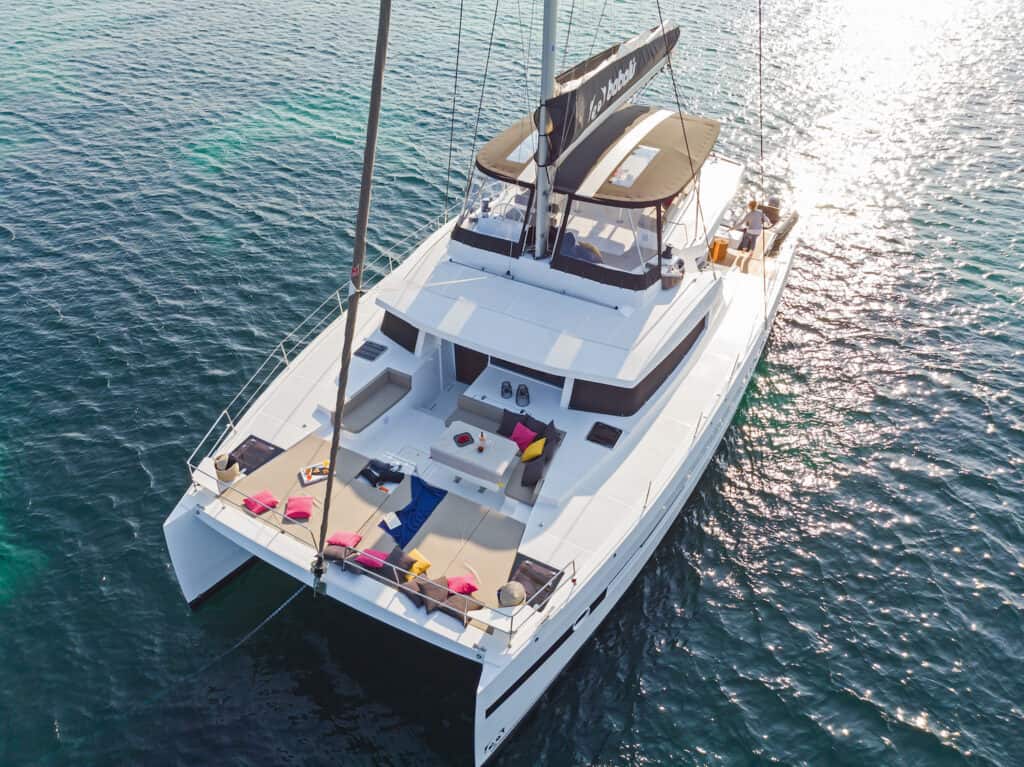
5. Anchor Bridal Setup

Catamarans are fitted with a bridle, attached to both bows and down to the anchor chain, resulting in a very stable position at anchor. What we found with our monohull was that because the bow acts as a sail (because of the high freeboard), the boat tended to sail at anchor in high winds. It sailed in one direction until the chain snatched and tacked over and sailed in the other direction, feeling like it might dislodge the anchor altogether. The catamaran on the other hand sits at anchor a lot more stable and doesn’t sail around as much.
6. Ease of Boarding on a Catamaran
Thank goodness we were much younger and more agile during our monohull days. Royal Salute and most monohulls of her generation or older, have high free-boards, making it quite a feat to get onto the boat from the dinghy. It was one of the most challenging things to do because unlike the more modern monohulls that have a scoop at the back, we had to climb up on the side of the boat to get on and off. We, of course rigged steps, etc. but it was always a hassle compared to the ease of getting on and off a catamaran from a dingy or from the water.
7. Shallow Draft Equals Better Anchorages
Catamarans have significantly shallower drafts than monohulls, allowing for safer anchorages closer to shore. Most catamarans in the 40-ft to 50-ft range draw between 3-ft to 4.5-ft, so they can anchor in places that a monohulls can not even consider. In the shallow waters of the Bahamas for example, the catamarans have a big advantage. We often anchor our own catamaran just a few feet away from a beach. It definitely allows one to be able to explore areas where the water is shallow without the fear of running aground.
The shallow draft also allows for emergency repairs in shallow water and even doing the bottom job when the tide goes out as we have done in places like Mtwapa Creek in Kenya, East Africa. The catamaran easily rests on her keels on the sand without help making it a breeze to do the “annual haul out” even in remote locations.
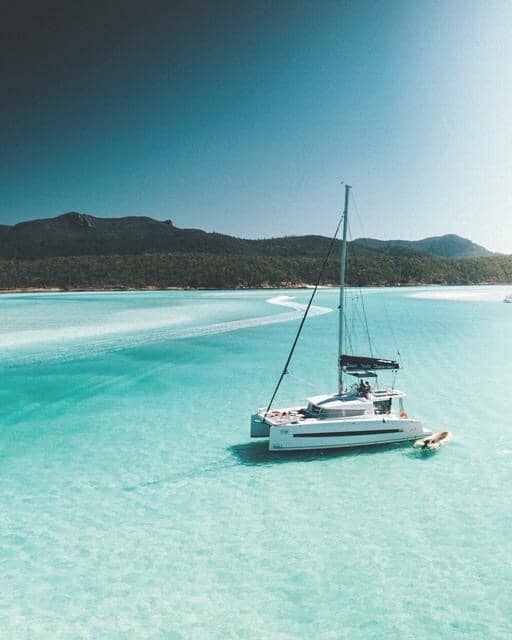
8. Dinghy Davits & Dinghy Size
All catamarans have a set of davits that make it very easy to raise and lower the dingy. Our monohull and most cruising monohulls do not have an efficient or easily accessible set of davits. This makes raising and lowering the dingy an elaborate production. Catamarans on the other hand, has davits systems easily accessible and some even have platforms to rest the dinghy on.
The lack of beam and difficulty of lifting the dinghy also limits the size and type of dingy that one can reasonably carry on a monohull. As we all know, the dingy is your transport to and from shore and diving or fishing spots, so the bigger and faster the dingy, the better off you are. A catamaran can carry both a heavier and bigger dinghy which makes the popular center consul dinghy so much more possible.

9. Interior Space and Comfort on a Catamaran
We sailed 32,000 NM on our 45-ft monohull, happy as clams, not realizing that sailing does not have to be done lying on your ear 24/7 while on passage or sitting knee-to-knee in the cockpit at anchor with your two other guests at the dinner table! One can liken sitting in a monohull cockpit to sitting in an empty Jacuzzi, you are always nice and close to the other folks.
Now that we are on our fourth catamaran, there are a few things that have become more evident to us than the incredible space and comfort of a catamaran, not only at anchor but also underway. The cockpit and living space in general are huge compared to a monohull, making for very comfortable and spacious living conditions. It feels more like you are at home, rather than just on a camping trip.
Knowing that one spends at least 90% of one’s cruising life at anchor, it’s important to have good open living space, which most modern cats nowadays offer. A lot of cats have walk around beds, lots of storage, every modern appliance including washer/dryer, etc. However, one has to fight the urge to fill the space if you want to keep the cat light and fast.

Sailing with guests onboard for extended periods of time, in close quarters can become claustrophobic but on a catamaran people are spread out and separated. With guests sleeping in one hull and the owners in another, catamarans offer much more privacy and separation. Some cats even have privacy doors that will close off the entire hull and has a separate entrance onto the deck, which really separates you from the guests completely.
There is very little heeling on a catamaran, so there is no need for hand grips and safety harnesses inside the boat. There is nothing better (and safer) than being able to walk from the cockpit into the living room (saloon) on one level or one step down at most. In a monohull, when heeling at a severe angle, you would have to claw your way from the companionway steps down to the living area, while fighting to stay upright, significantly tapping your energy.
Unless you hit extreme conditions, everything stays put on a catamaran reducing the anxiety before doing passages of having to stow and secure everything. This very issue makes a lot of cruisers reluctant to weigh anchor and explore more often. It is just too much effort to pack away all your stuff once comfortable in an anchorage!
One thing you will notice is that the stove on catamarans are not gimbaled like it is on monohulls and this should tell the story in itself. The stability and comfort on a catamaran is far superior. Cooking is easy and safer. I often open a nice cold beer, put it down to do something and forget about it only to find a warm beer later in the same place I left it. This is not something that happens on a monohull.
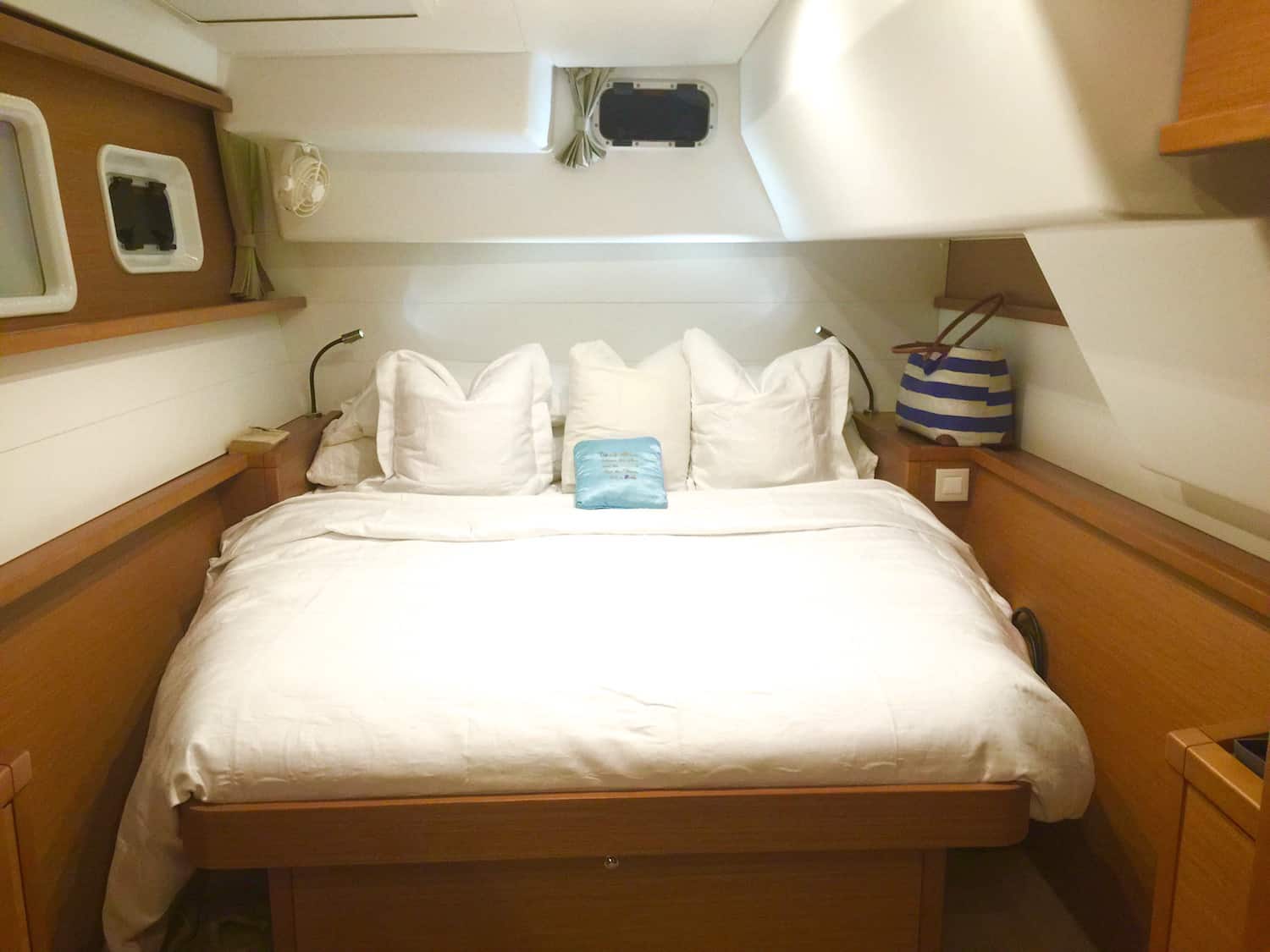
10. Redundancy on a Catamaran
Unlike monohulls, catamarans have a lot of critical redundancies. That of course means two hulls to clean and anti-foul, double the engine maintenance, etc. but having two of the critical equipment like engines for instance, outweighs the downside.
With two engines, if one fails you still have adequate propulsion to go anywhere. If by some fluke the second engine also fails, you have a full set of spares to fix at least one of them. Our friends once hit a sleeping whale off Tanzania, and when it dove, it hit the prop, bending it. They limped into the narrow channel on the one engine but at least they could make it to a safe harbor where we surveyed and repaired their damage.
We often only use one engine when motoring while making passage in order to conserve our fuel. The one engine is totally capable of moving the boat along at a good speed unless you are in heavy seas and you may need more power. Other than that we only use two engines to dock or maneuver the boat in close quarters.
Because there are two engines there are also two independent charging systems via the alternator on each engine. If one alternator goes out, there is still another complete charging system. There are two rudders and if one fails or falls off (as has happened to our friends on a monohull off Columbia, where they almost lost their boat) you have a second rudder that is completely capable of steering the boat by itself indefinitely. That holds true for several things on a catamaran!
11. Maneuverability
The engines are spaced far apart on a catamaran and it makes maneuvering much easier and more precise than monohulls, unless the monohull has a bow thruster. We did not have a bow thruster (not many monohulls do) and had to rely on prop-walk and using prop wash on the rudder. A modern catamaran can do a 360 turn on her own axis. A monohull cannot do this and have a bigger turning circle. However, a monohull under sail is much more maneuverable and certainly will tack a lot faster than a catamaran. The ease in maneuverability under engine on a catamaran in close quarters specifically, is vastly superior comparatively.
12. Rigging
Because of the beam on a catamaran the spinnaker pole has become unnecessary equipment. Hallelujah, I say. That pole on our monohull was a pain the behind and I always hated having to use it. On a catamaran, one can fly an asymmetrical cruising chute or spinnaker, using the bows to tack the clew or run a guy through a block so it is very much simplified, easier and safer.We also sail wing-on-wing with twin headsails when we sail downwind. We use our furling jib and furling Code Zero. It is as easy as one, two, three.
DISADVANTAGES OF A CATAMARAN
1. bridgedeck slamming.
One advantage most monohulls do have when underway is that they don’t slam. Catamarans with a low bridgedeck clearance can experience significant slamming in confused seas sailing upwind. This slamming can be quite disconcerting when you first experience it as we did on a Shuttleworth 44 design, our first ever catamaran experience, 20+ years ago. At times, it felt as though the boat was falling apart. Of course the boat was fine but nevertheless, the stress on the crew from the constant noise and discomfort was significant.
Monohulls don’t have a bridgedeck which means no slamming and are therefore a bit more comfortable than l ow bridgedeck catamarans when beating into severe confused conditions or “washing machine” conditions as we call it. Modern catamarans mostly have better bridgedeck clearance and the slamming is significantly less. However, not all cats have a good clear tunnel under the bridgedeck. Some manufacturers build beds into the bridge deck in order to make more space in the chest of the catamaran where the slamming occurs. These protuberances into the bridgedeck tunnel will likely increase slamming. So be mindful of that when selecting a catamaran. We currently own a Bali 5.4 and the bridgedeck clearance on this boat is more than adequate and the tunnel is clear. We therefor experience very little slamming compared to our Prout 45 that we previously owned (picture of sister ship below) with a much lower bridgedeck.
We Explain Bridgedeck Clearance
In the pictures below, the Bali 5.4 has very good clearance from the water to the bridgedeck and has a nice clean tunnel versus the very low bridgedeck of the Sunreef 50.

2. Sailing Downwind
Monohull spreaders are set at 90 degrees to the mast whereas a catamaran has to have backswept spreaders. The reason is that, on a monohull, there is a backstay and using this, plus the intermediates you can get a nice pre-bend in the mast (the pre-bend is to flatten out the main sail and allow for better performance).
On a catamaran with no back stay, you need to use the back swept spreaders and the diamonds to pre-bend the mast. The reason I point this out is because on a catamaran, if you want to broad reach or run, the mainsail cannot be let out all the way because the backswept spreader tips could punch holes in the fabric.
On a monohull, the spreaders are at 90 degrees so you can let the main and the boom out much further which is, of course, much more effective. This is one of the reasons it is better to broad reach and tack downwind on a catamaran.
Whether a monohull or multihull, sailing dead downwind doesn’t usually make great VMG. Therefor a regular cruising cat, much like a monohull, needs a lot of sail area and has to sail deep downwind if it is to achieve a decent speed made good (VMG). This video demonstrates how we achieve this by sailing wing-on-wing downwind.

It is more difficult to find a dock either as a transient or a permanent slip for a catamaran in general because of the wide beam. But this is changing fast and will soon not be too much of an issue. In the USA dockage is charged by the length of the boat in feet, so there is no disadvantage there but, in some places, (the Mediterranean for example), dockage is charged at length times one and a half because of the additional beam.
Since the catamaran is stable at anchor, we mostly anchor out. We have more privacy, a better breeze and usually a stunning view.We have a nice dinghy with a good outboard engine and is big and comfortable enough to get to shore fast and together with the modern conveniences like the generator, watermaker and washer/dryer, docking becomes a non-issue.
It is definitely more difficult to find a travel lift with enough beam for a catamaran for a haulout, while, for a monohull, there are absolutely no problems anywhere. The wide beam of cats also greatly limits the number of shipyards that can haul them out. Most catamarans over 40-ft must be hauled out with a 50-ton travel lift. This not only increases the cost of the haulout, but greatly limits the choice of the shipyards for repairs and maintenance. With limited choice, prices are high for shipyard services.
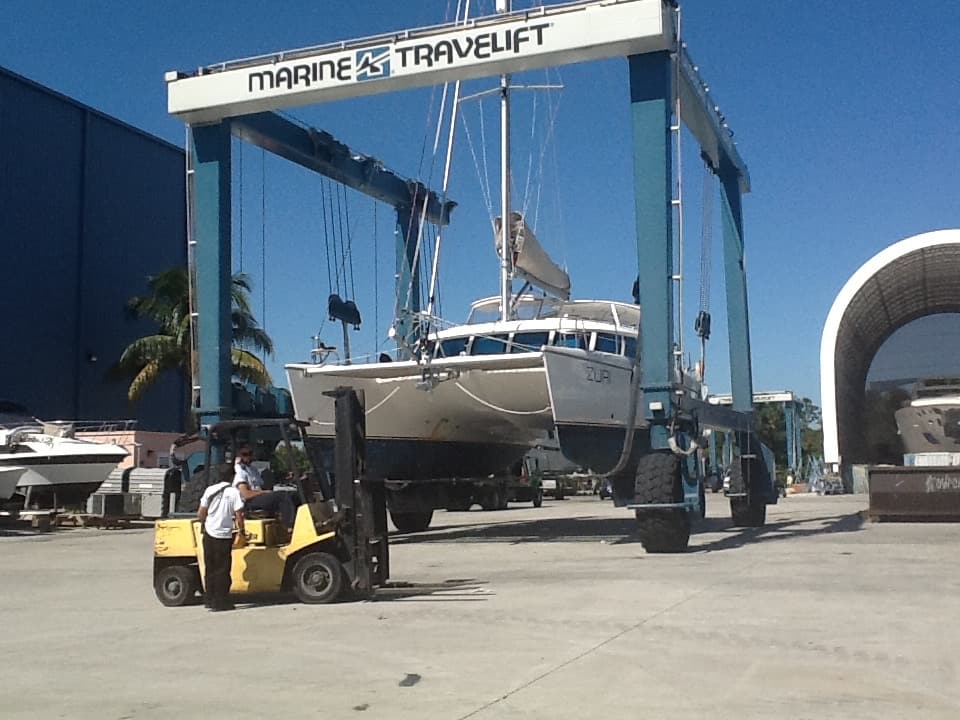
Catamarans do tend to have a lot more windage than monohulls. This can be an issue especially when maneuvering in close quarters with a strong wind. But I have found that, provided the engines are powerful enough for the size of catamaran, that twin engines negate this problem. Also, many modern large catamarans now have a bow thruster fitted. It is super easy to dock.
The cost of getting into a catamaran is much higher than that of monohulls. That could put a serious dent in your cruising kitty or require you to put your dream on hold a little longer. Pre-owned monohulls on the other hand are very cheap to buy comparatively, because the supply presently far outweighs the demand.
Catamarans are in high demand and they typically hold their value much better and longer and the trend is now heavily in favor of the catamaran market. When prospective buyers contact us for catamarans under $250,000 the choices are very limited and catamarans under $100,000 is near impossible to buy. In this case, your best bet is to go with a monohull unless you go with much older boats like the Prouts or the less expensive Geminis.
Our Own Catamarans & Monohulls
FYI: Royal Salute , a Bruce Roberts 45 monohull, was the first boat we owned and sailed approx. 30,000NM on. Mythral, a Seafarer 30, was our “toy boat” while we were waiting for our catamaran to be built. Even though this classic little monohull sailed around the world, it didn’t have much in modern conveniences like running water. Siyaya was an Island Spirit 40 catamaran that we sailed from Cape Town to Florida on and then taught live-aboard sailing classes for several years. Zuri I was a Prout 45, a beautifully crafted catamaran but by today’s standards is considered old technology. Our Lagoon 450 SporTop ( Zuri II ) is a fantastic live-aboard catamaran. We lived and taught aboard her for three years but sold her last year and we currently own a Bali 5.4 ( Zuri III or Z3 as we call her now). Read about our various boats .

CONCLUSION: CATAMARAN vs MONOHULL
We were dyed in the wool monohull sailors for 15+ years. We loved the pretty lines of monohulls, the sailing ability and what we believed at the time to be much safer vessels. However, now that we have been avid catamaran enthusiasts, we simply can never go back to monohulls. Catamarans have come of age and with modern technology have overcome most objections that sailors of old had against them. They are well designed and built, are safe, and we simply love that they sail fast and upright. There is not a whole lot to dislike about a catamaran when you live aboard. We have weighed all the pros and cons of catamarans and found that the pros far exceed the cons. We made the change to a catamaran and do not regret it one bit!
We hope that this article will clear things up for all the prospective catamaran owners out there.
Contact us if you have any questions regarding catamarans, Fractional Yacht Ownership or our Charter Management Programs .
Estelle Cockcroft
Join our community.
Get the latest on catamaran news, sailing events, buying and selling tips, community happenings, webinars & seminars, and much more!
4 thoughts on “Catamaran vs. Monohull: We Changed, Should You?”
I read that the engineering on the catamarans were improved over the years. Whats the oldest year would you recommend designwise?
Scott, my apologies for the late reply. We’ve been traveling in Africa. Anyway, catamarans have come a long way and improvements in technology is happening at lightning speed. I reckon that even the older model catamarans are good. It depends on what your needs are. If you want something a little better performance wise, I would go for something no older than 15 years.
After buying a catamaran what is the difference in expense of a catamaran vs a monohull. Many articles state that not only the initial cost of a catamaran is more it the operating cost as well.
Hi Todd, it is more expensive. The annual dockage and haul out as well as maintenance will be more expensive. You obviously have two engines to maintain and various other pieces of equipment to service in both hulls. While there is more equipment there is also more redundancy and of course you have the comfort factor. So, depending on your situation, it’s probably worth it.
Leave a Comment Cancel Reply
Your email address will not be published. Required fields are marked *
Save my name, email, and website in this browser for the next time I comment.
Recent Posts

Top 10 Reasons to Sell (and Sail) Your Catamaran in Annapolis, MD
We have a new home in Annapolis! The office is located in Annapolis, Maryland
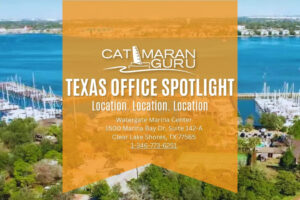
Top 10 Reasons to Sell (and Sail) Your Catamaran in Texas
Our Texas Office is located in the Watergate Marina Center in Clear Lake Shores,
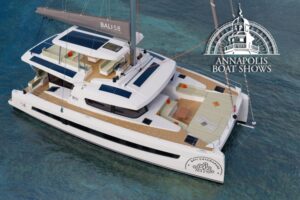
Annapolis Boat Show 2024
Meet with our team! Want to learn more about the Bali and Catana

Exploring the Catana OC 50 Catamaran: A Comprehensive Overview
The Catana OC 50 Catamaran, the latest addition to the Catana Ocean Class series,

For more than 30 years, we have been a part of the catamaran community and created Catamaran Guru™ to encourage and educate all the aspiring sailing out there. We understand the dream of traveling the world by catamaran and created a one-stop-shop to make that dream a reality for you.

- Stephen & Estelle
- Testimonials
Get Started
- Yacht Sales
- Used Yachts
- Charter Management
- Boat as Business Programs
- Seminars & Events
- 2024 BOAT BUYERS GUIDE
- SWS ADVENTURES
- Email Newsletters
- Fishing Boat Reviews
- Fly Fishing
- Marine Electronics
- Fishing Tackle
- Fishing Destinations
- The Bahamas Fishing Guide
- Boating Safety
- Ultimate Boat Giveaway

2023 Boat Buyers Guide: Catamarans
- By Karl Anderson
- December 27, 2022
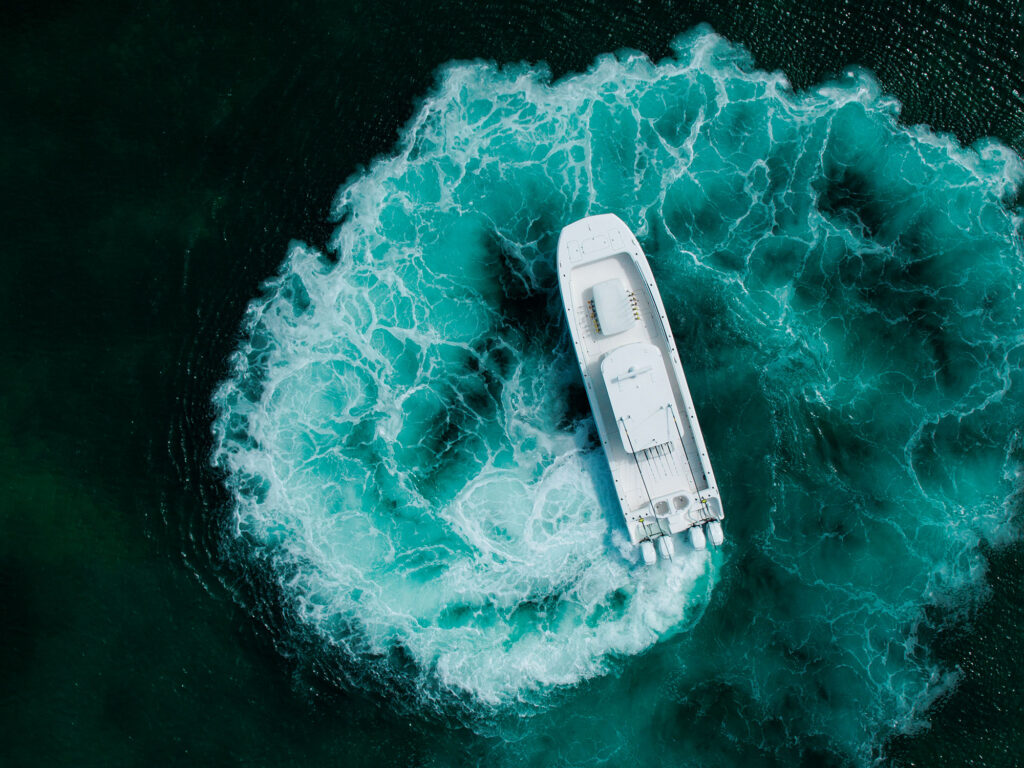
The popularity of the multihull (aka catamaran or cat) fishing boats has never been greater, as more and more boatbuilders enter this growing segment of the market. The inherent stability of the catamaran design rolls less with the seas, making fishing offshore less tiresome and more comfortable. Available from 20 to 48 feet, catamarans typically offer a large fishing platform with generous storage and fishing amenities. They are available in a wide variety of deck layouts, including center-consoles, dual-consoles, and even pilothouse and express variants.
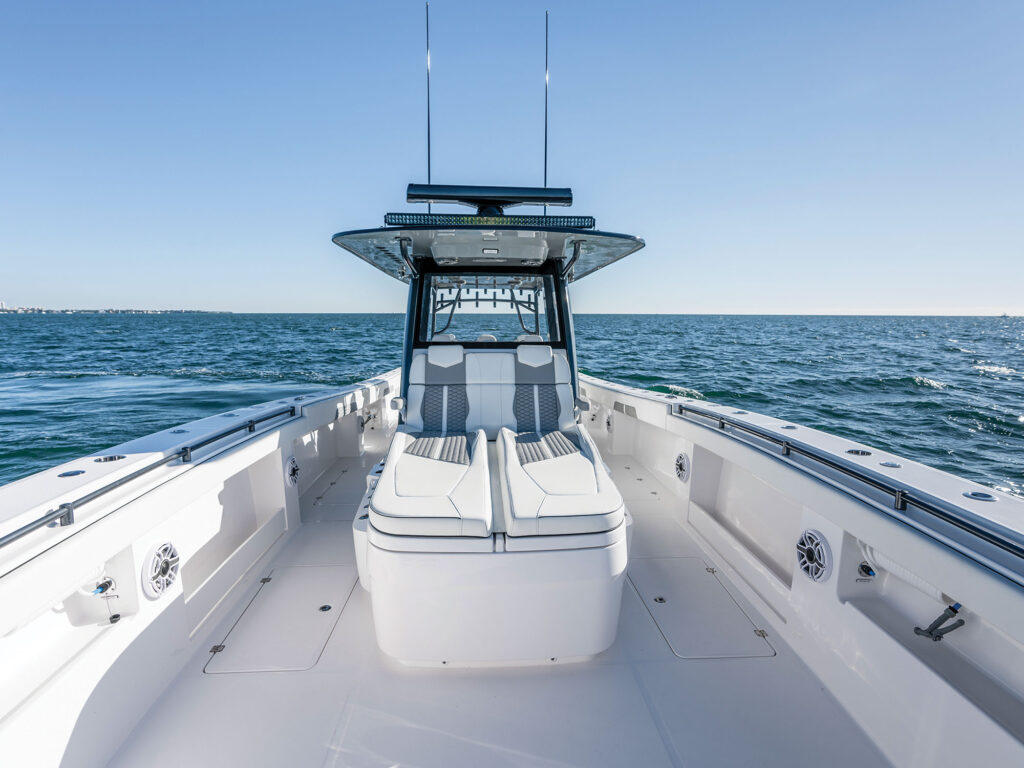
Big Picture
The large deck area of a catamaran enables many large underdeck storage lockers and insulated fish boxes in the sponsons. This gives anglers ample room for gear and the day’s catch. The catamaran’s stability, fishability, and smooth ride in rough seas make it attractive to anglers as well as day-cruisers. A center-console version adds 360 degrees of angler access to the rail. With the dual-console design, generous seating behind a beam-to-beam windshield makes for a great family fishing-friendly setup.
Live bait is one of the most popular types of fishing in virtually every coastal zone. To do it successfully requires optimal water capacity and proper flow. The minimum size of the outflow water plumbing should be twice the size of the inflow. The plumbing should have a drain at the bottom to shed scales at the end of the day, as well as a drain at the top of the well to adjust capacity and allow overflow. Above-deck transom-mounted wells should fully flood to the lids when running to keep baits from getting beat up.
Tip: A sump box with multiple pumps in case a pump fails is the best setup for first-rate livewells. Conveniently located inflow and outflow valves make it easy to optimize the flow without tiring your bait from swimming too much in the well.
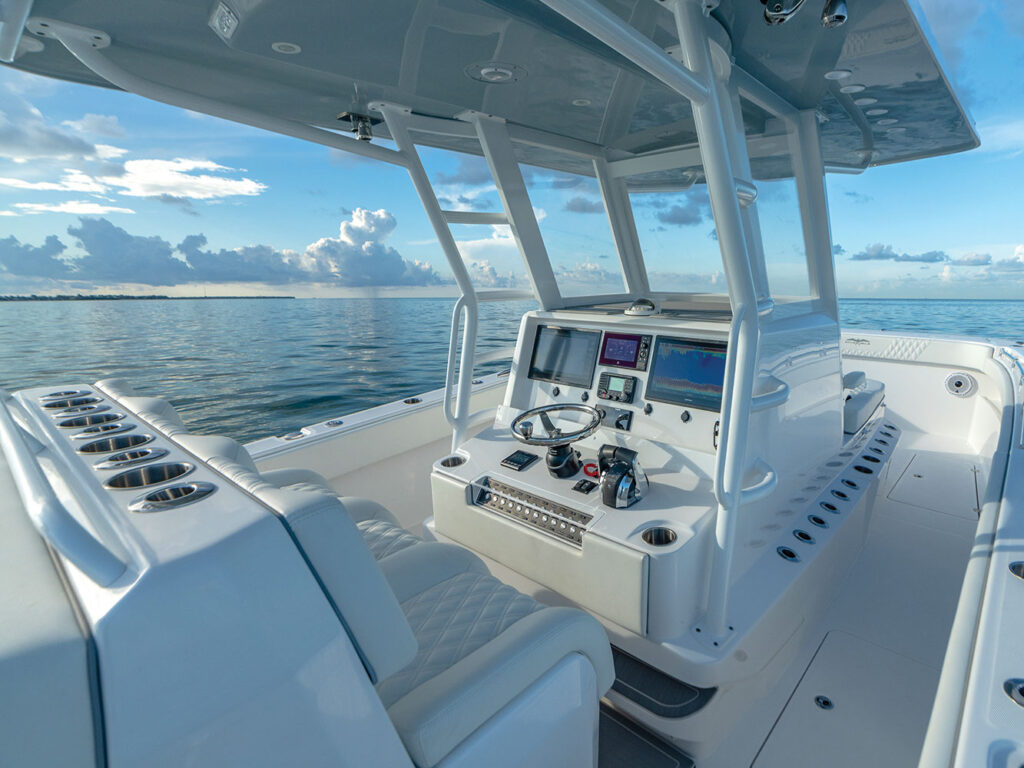
Rod Storage
Having enough rod holders is essential to be successful for opportunity fishing. Look for vertical rod storage along the console and across the back of the T-top. Many models also have rod holders along the outboard transom wall. Having plenty of gunwale rod holders for drift- and kite-fishing is helpful.
Tip: Placing adjustable swivel rod holders by Gemlux makes deep-dropping, lure-fishing and drifting even easier because they allow your rods to face the direction the baits are fishing, yet they can be swiveled back to keep rods from sticking out of the boat while running and docking.
Manufacturers often offer multiple choices for horsepower, but whatever the choice, the engines must come in pairs. For example, you might order twin outboards (one for each sponson) or four outboards (two for each sponson), but single- or triple-outboard configurations are not common on a cat. Optimal selection should be made based on user load, weight of the boat, ride comfort , performance desires, and best case for resale. It’s a rare day when you can run wide open, but having more horsepower gives better torque at slower speeds and thus better control. Running larger engines slower gives better fuel efficiency too.
Tip: When possible, choose the highest horsepower offered because it typically leads to a better resale value with a shorter sales cycle.
Power steering from engine manufacturer Optimus or SeaStar is essential with the higher horsepower required for larger boats, and it makes installing and operating the upper station in a tower far more practical and comfortable.
With the power demands of electronics, livewell pumps, stereo amps and more, it is wise to have at least two house batteries, and for larger boats, a third or fourth with a multibank charger for dockside. Each engine should have its own dedicated battery as well.
Electronics
Typically choosing the largest screen or multiple screens that will fit on the console is best-case scenario for ease of use, ergonomics, and visibility. VHF radios, stereo controller, and equipment switches for lighting, pumps, and accessories should all be integrated with greatest visibility and ease of operator reach.
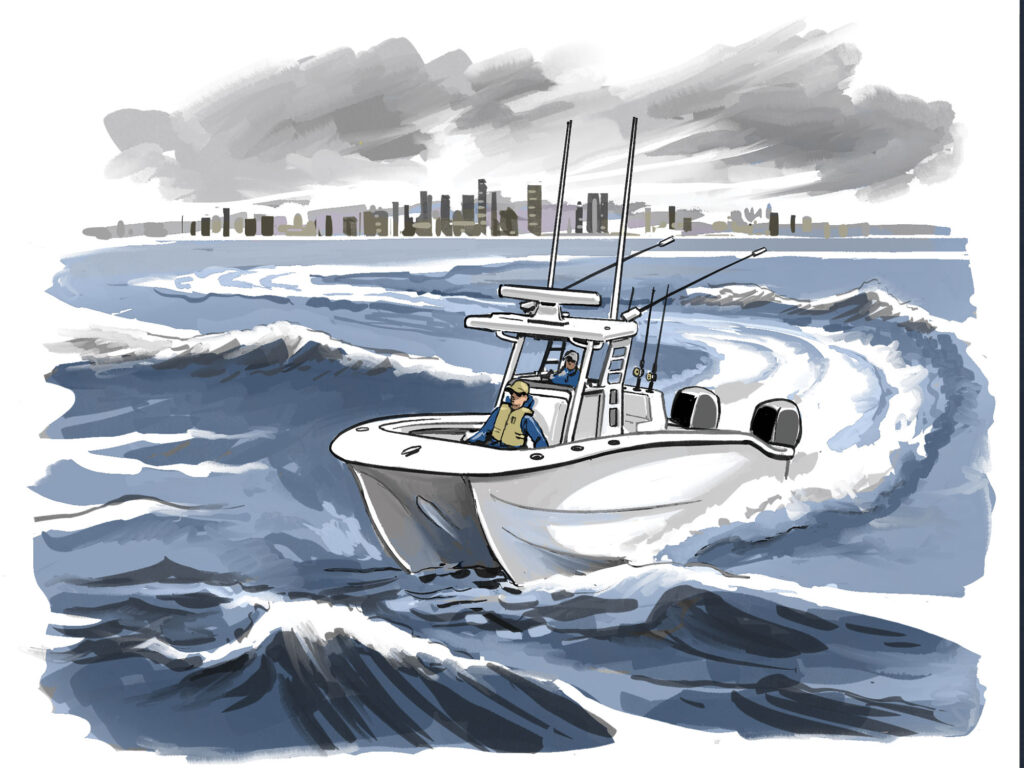
A Tale of Two Hulls
A catamaran rides on pair of hulls, or sponsons, each thinner and sharper than that of a similarly sized monohull boat. The narrow sponsons of the cat tend to slice easily through water to deliver a smooth ride, even in rough seas. At the same time, with the sponsons positioned out to the sides of the boat, cats tend to roll less, thus providing great stability to enhance crew comfort, security and safety. However, cats tend to corner more flatly than a monohull, and some hulls (but not all) tend to lean outward versus inward during a turn.
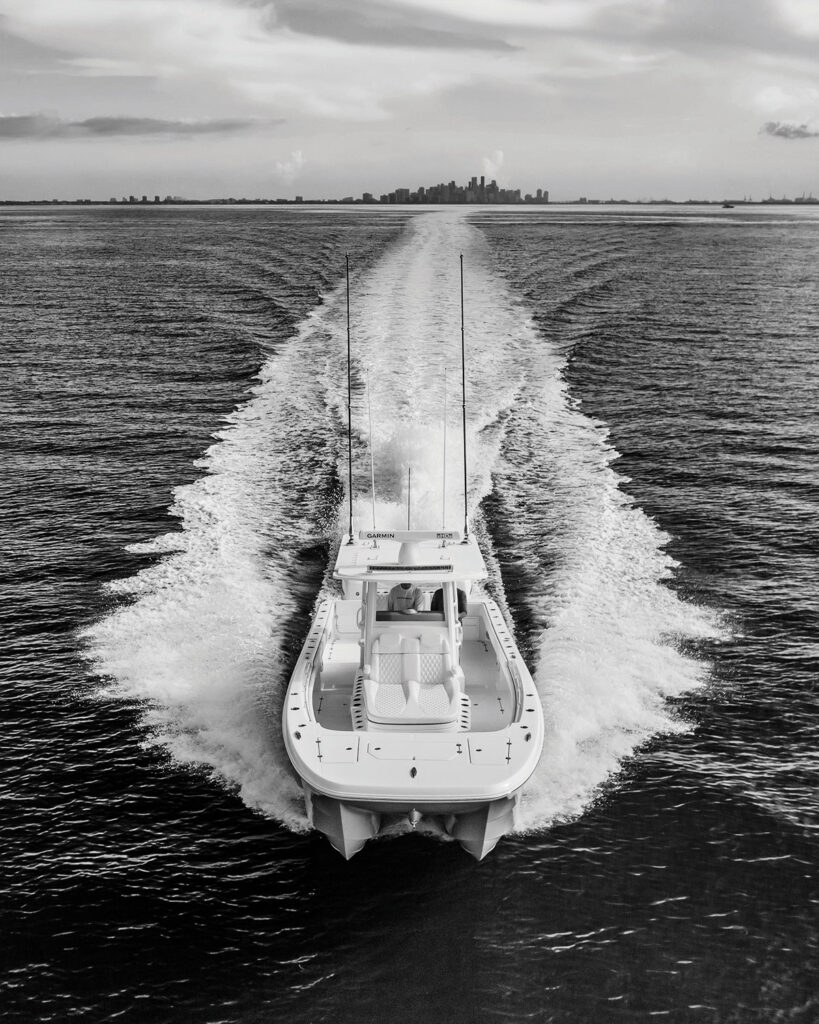
Experts Say
Newer designs such as Invincible’s Morelli and Melvin-designed semi-asymmetrical sponsons eliminate some of the negatives of the cat design, such as “sneezing,” where water sprays out the front of the boat when hitting a wave. They’ve also controlled the uncomfortable “outboard lean” sensation common in older designs when in a turn. Once transitioned to a catamaran, many become true believers and preach the benefits of the design.
Editor Says: Saltwater fishing cats not only offer superb stability and smooth ride, but some also display exceptional speed and range. I recall one trip out of Key West, Florida, aboard an Invincible 40 Cat with four 350 hp outboards to the Dry Tortugas. It was a 60-mile run, and we made it there in 70 minutes. We caught more fish than our arms could bear, and then dashed back to Key West, arriving in time for cocktail hour on the same day. -Jim Hendricks, Staff Editor, Boating and Fishing Group
- More: 2023 Boat Buyers Guide: More Resources , Boats

Scout 357 LXF

Electric Outboard Steering

Best Dredge Fishing Tips for Center Consoles

EdgeWater 208CC Watchman
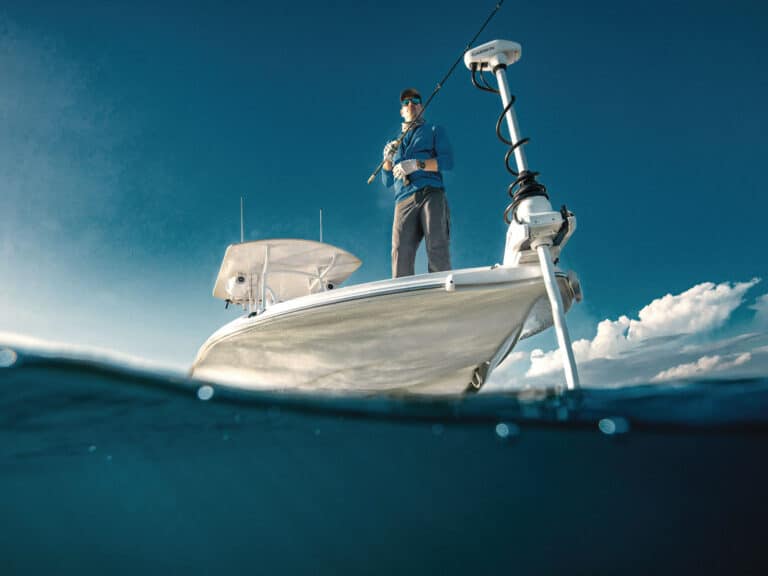
Best Boat Trolling Motor Features for Saltwater Fishing

Spotlight on Quantum
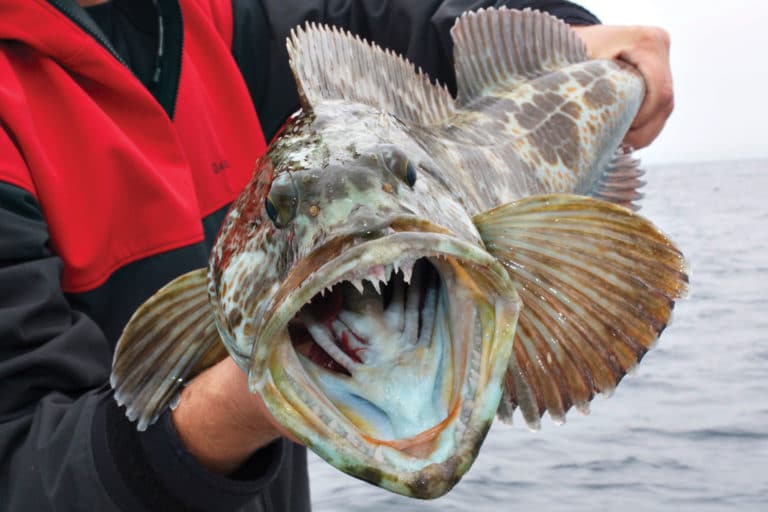
Fishing for Lingcod with Large Saltwater Swimbaits

ODYSSEY Battery: Ask the Internet

- Digital Edition
- Customer Service
- Privacy Policy
- Terms of Use
- Cruising World
- Sailing World
- Salt Water Sportsman
- Sport Fishing
- Wakeboarding
- Travel Resources
- Destination Inspiration
- Tips & Advice
- Did You Know?
- Conservation

- Action & Adventure
Are Catamarans Safe in Rough Seas?
- January 13, 2021

Trying to sail any boat in rough seas will take a lot of effort, even with these catamarans . Several factors work together to keep you safe should you encounter a gale or choppy waters. Fortunately, modern catamarans have seen significant improvements that make them safer than ever before in rough seas.
Modern Catamaran Improvements
Today, there are two main types of catamarans you might find yourself on, one being charter or cruising catamarans, and the other is high-performance.
As you can likely tell, the high-performance models are bound to be substantially better in rough seas and give you the ability to outrun poor weather. These days boat fitters are always improving the spec on all types of boats especially catamarans. However, they can also be challenging for beginners since they’re designed for higher speeds.
Charter or Cruising Catamarans
If you’ve recently been on vacation, you’ve likely seen a charter catamaran or hybrid catamarans . These boats are specifically designed for charter cruises and often feature low-aspect rudders, fixed keels, and high-wind flybridges. They also have significantly heavier displacement as well as shorter bows.
Charter catamarans can be challenging to use at high speeds, even if you’re navigating on flat water. When traveling windward, they’re ideal for close-hauled sailing at up to 60-degree angles.
If you were to encounter rough seas in these boats, there are two main concepts to remember: maintain control and speed. You won’t want to pick up too much speed because it can be more challenging to control. It could also endanger both the crew and the boat, which is why they’re not ideal for choppy conditions.
High-Performance Catamarans
These boats are designed with special techniques that make them ideal for traveling at higher speeds. They feature rudders deeper than charter models, which also creates less displacement and windage.
Another benefit is that they have highly efficient centerboards and daggerboards. When sailing, you’ll notice high-performance models can outsail nearly any keelboats while traveling windward.
In addition to their impressive speeds, they are also known to be more lightweight, making them easier to maneuver. If you’re caught in rough seas in a high-performance catamaran, you’re more likely to navigate through the storm successfully.
Not only will you be able to manage the storm conditions securely, but you could also outrun inclement weather. By maintaining your balance while using lower loads and traveling at higher speeds, you can be safe.
How To Handle Catamarans in Rough Seas
Let’s say you’re stuck in a situation where you have no choice but to sail through rough seas with your catamaran. Consider these tips because they could significantly improve your chances of a safe return to port.
Reading the Sea Room
Having a good idea of the sea room can give you the information you need to navigate the boat safely. You’ll be able to determine the appropriate speed to sail with the sea, allowing you to maintain the most control.
Depending on the conditions, you have to determine whether slowing down or speeding up is ideal. Remember, drogue slows the catamaran down while the sea anchor is best for mooring with minimal drift. The more effective you are at moving with the sea, the less stress the boat will experience.
Opting for Downwind Travel
When sailing in heavy seas, consider sailing at a slight angle because it improves the boat’s sufficient length. The catamaran will have access to diagonal distance, which is longer than the boat’s total length. The more length you have access to, the easier it will be to follow the sea.
Another important aspect of taking advantage of diagonal distance is that it keeps your hull stable. With the proper angle, pitchpoling is far less likely, and the bows won’t bury as much.

Using Minimal Sail
One of the most important factors to consider is the amount of sail you should be using when you encounter rough conditions. Sailors most often prefer to use minimal sail since it calms the catamaran and allows the boat to autopilot easier.
By encouraging non-yawing and vertical rudders and keels, the boat will find it easier to handle the brunt of navigation.
The Advantages of Catamarans in Rough Seas
There is an incredible number of myths about catamarans, especially among monohull owners. These boats are one of the superior options for tackling rough seas, especially with anglers. A few essential advantages to note are:
High-Speed Sailing
The higher speeds of performance catamarans have made them a popular topic of discussion among Naval scientists . Their hull energy allows sailors to travel extensive distances in a limited amount of time. With this amount of power, you can quickly navigate through heavy waters or avoid them entirely.
Added Stability
One of the primary reasons to consider a catamaran for rough seas is its inherent stability. They are often preferred for families and senior sailors who find it tough to find their sea legs. The boat’s size and design make it far less susceptible to wave action, especially compared to a monohull.
Reduced Seasickness
Becoming seasick can disrupt your entire trip on the water, which is another reason to consider catamarans. With their improved stability, you’ll feel far less motion aboard a catamaran than other boats. There’s far less rocking and rolling, which makes it a more comfortable experience for everyone.
Impressive Buoyancy
For as large as they are, catamarans are ideal for their buoyancy. Since they aren’t designed with a lead-filled keel, your boat will float even if it’s holed. Some of the more modern high-performance catamarans are so buoyant; they’re relatively impossible to sink.
Catamarans are safe to navigate in rough waters, as long as you can maintain control of the craft. They have remarkable buoyancy, inherent stability, and high speeds to outrun inclement weather.
Related Topics
- are catamarans safe in rough seas
- sailing holidays
Vacationing in Colorado

Qualities to Look For in a Trailer
- January 14, 2021
You May Also Like

How to Prepare for a Golf Vacation
- September 6, 2024

Experience the Charm of Skiing in Megève: Your Guide to Ski Lessons and More
- September 4, 2024

Golf Travel in Australia: Luxury on a Budget
- September 2, 2024

PureTravel Activity Guide: Whale Watching
- August 26, 2024

Take the Leap: Everything You Need to Know About Tandem Skydiving
- August 21, 2024

A Guide to Backpacking Holiday in Japan
- August 18, 2024

How to Plan Your Next Fishing Trip
- August 7, 2024

Dive into adventure with these 5 amazing spots for underwater scooters experience
- July 15, 2024
Input your search keywords and press Enter.

Are Catamarans Safe In Rough Seas?
The image of a sleek catamaran slicing through the azure waves is idyllic, often associated with luxury, relaxation, and calm seas. However, the sea is an unpredictable force, and even the most serene waters can turn treacherous. This leads many to wonder, are catamarans safe in rough seas ?
Understanding Catamaran Design
Dual-hull dynamics.
To understand the safety of catamarans, one must first grasp the basics of their design. Catamarans consist of two hulls connected by a bridge deck. This twin-hull structure provides greater lateral stability than traditional monohull vessels, which is a significant advantage in rough water conditions.
Stability and Comfort
Thanks to the wider stance provided by the two hulls, catamarans have a natural resistance to rolling, making them safer and more comfortable for passengers during choppy sea conditions.
Catamarans vs. Monohulls in Rough Weather
Behavior in high waves.
Catamarans are often believed to handle high waves better due to their increased buoyancy and pitching less than monohulls. This means they ride over waves more than through them, which can be less jarring for the crew and equipment.
The Risk of Capsizing
A significant concern for any sailor is capsizing. While monohulls can roll over more easily, catamarans have a wider base, making them less likely to capsize in rough seas, although it’s not impossible.
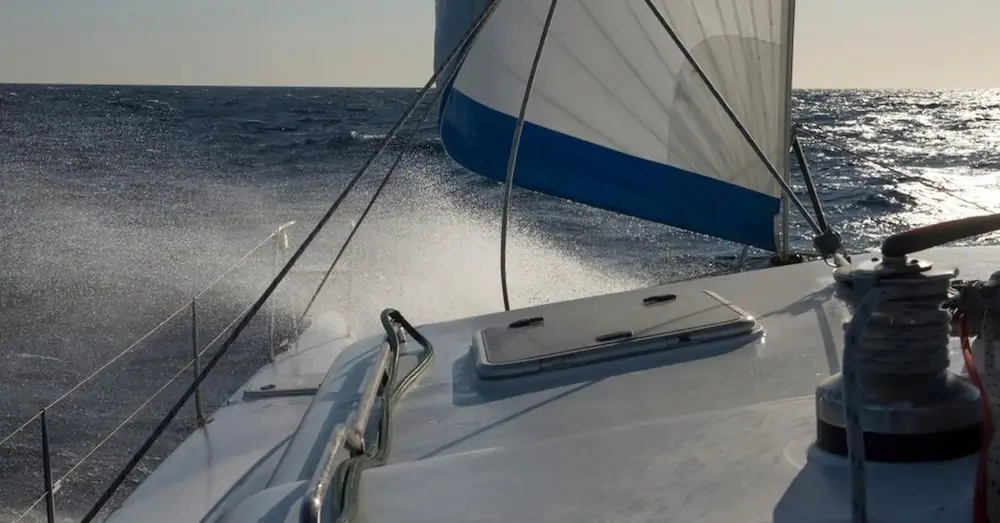
Are Catamarans Safe In Rough Seas 1
Advancements in Catamaran Safety
Modern design innovations.
Modern catamarans incorporate advanced design features to enhance safety . These include reinforced materials, escape hatches, and designs that allow for better wave deflection.
Safety Equipment as Standard
Most modern catamarans are equipped with up-to-date safety equipment. EPIRBs, life rafts, and man-overboard systems are standard, providing peace of mind for sailors venturing into rougher waters.
The Role of the Skipper in Ensuring Safety
Experience matters.
The safety of a catamaran in challenging conditions often comes down to the skill and experience of the skipper. A knowledgeable skipper can navigate rough seas more effectively, making informed decisions to keep the vessel and crew safe.
Importance of Weather Knowledge
A skipper’s ability to read and predict weather conditions is crucial. Understanding weather patterns and knowing when to seek shelter or alter course can prevent encounters with dangerous sea states.
Chartering a Catamaran in Rough Seas
Choosing the right charter company.
When considering a yacht charter Croatia , it’s vital to select a company that prioritizes safety and maintains their fleet to handle various sea conditions.
Crewed Catamaran Charters for Extra Safety
For an added level of safety, consider opting for a Croatia yacht charter . The presence of a professional crew can significantly mitigate risks when sailing in unpredictable weather.
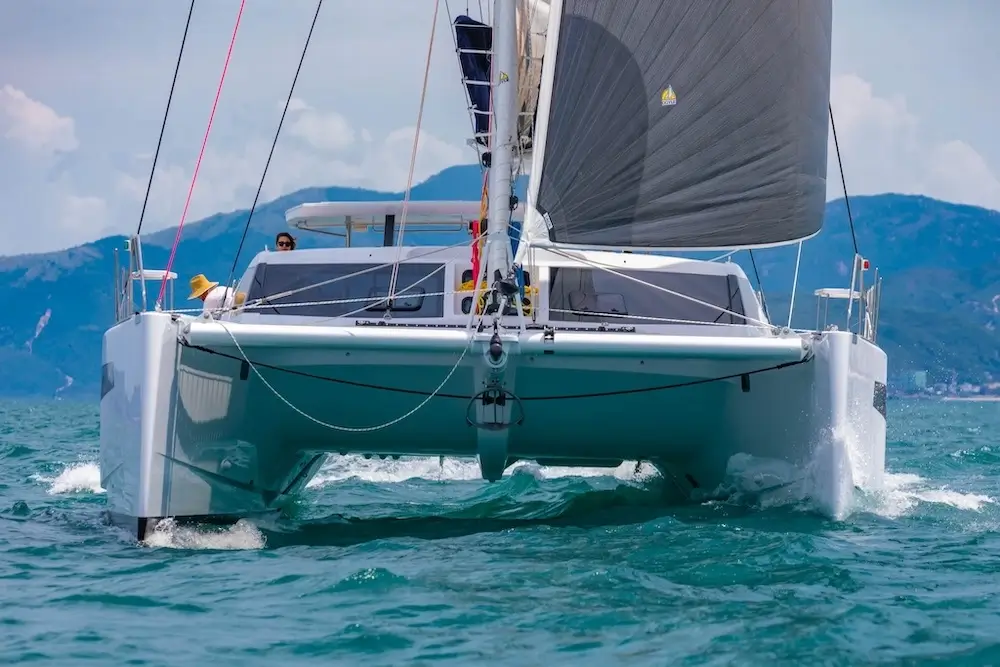
Are Catamarans Safe In Rough Seas 2
Preparation: The Key to Safe Sailing
Safety briefings and drills.
Before setting sail, especially if rough seas are expected, thorough safety briefings and drills are essential. These prepare everyone on board for emergency situations.
The Importance of a Good Briefing
A comprehensive briefing should cover all safety protocols and the location and use of safety equipment. It should be tailored to the specific catamaran and the expected sea conditions.
What Sailors Say: Testimonials on Catamaran Safety
Gathering insights from experienced sailors.
Those with extensive sailing experience often have valuable insights into the safety of catamarans in rough seas. Testimonials and stories can provide real-world examples of how catamarans have handled challenging conditions.
Learning from Others’ Experiences
By studying other sailors’ experiences, potential charterers can learn what to expect and how to prepare for their own voyages in varying sea states.
Preparing Your Catamaran for Rough Sea Conditions
Structural integrity checks.
Before heading into rough seas, it’s imperative to ensure the catamaran’s structural integrity. This means checking for any damage or weaknesses in the hulls, bridge deck, and rigging.
Essential Gear Inspections
Safety gear, such as life jackets, harnesses, and communication devices, must be inspected regularly. This gear can mean the difference between life and death if conditions worsen unexpectedly.
Best Practices for Sailing Catamarans in Rough Waters
Understanding the limits.
Every vessel has its limits, and it’s crucial for sailors to understand the capabilities and limitations of their catamaran when facing heavy seas.
Active Sailing Techniques
In rough waters, active sailing techniques such as adjusting speed and course to ride with the waves can help maintain control of the catamaran and keep the crew safe.
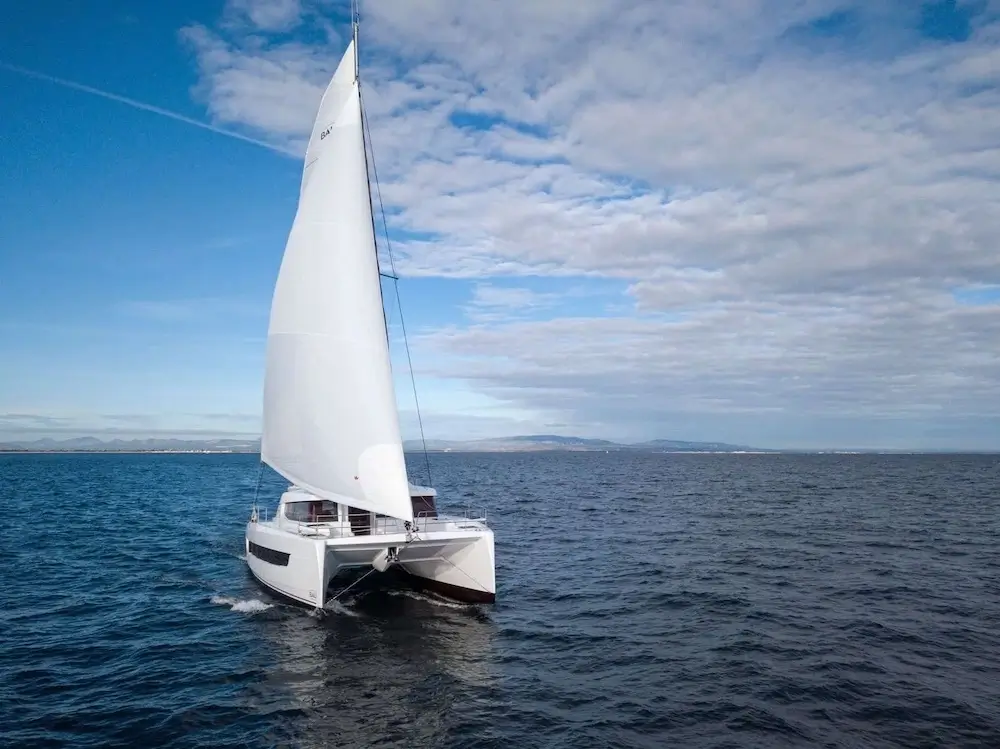
Are Catamarans Safe In Rough Seas 3
Handling Heavy Weather: Tips and Tricks
Reducing sail.
In high winds, reducing sail can help prevent overpowering the catamaran and losing control. Using storm jibs and smaller mainsails can be effective strategies.
The Importance of a Good Autopilot
A reliable autopilot can aid in maintaining a steady course in rough seas, allowing the crew to focus on other essential tasks.
The Psychological Aspect of Sailing in Rough Seas
Staying calm under pressure.
The mental state of the crew is as important as the physical state of the catamaran. Remaining calm and collected is vital for making rational decisions in harsh conditions.
Coping Mechanisms for Stress
Developing coping mechanisms for stress, such as deep breathing exercises or maintaining a routine, can help sailors maintain their composure when the seas get rough.
The Reality of Seasickness and Comfort Measures
Dealing with seasickness.
Rough seas often bring about seasickness. Having medication on hand and knowing how to mitigate the symptoms can improve comfort for everyone on board.
Creating a Comfortable Environment
Even in tough conditions, small comforts like dry clothes, warm food, and secure personal spaces can boost morale and endurance.
Technology and Weather Forecasting
The advantages of modern meteorology.
With advancements in technology, weather forecasting has become more accurate, allowing sailors to plan their routes around rough weather patterns or prepare for unavoidable conditions.
Utilizing Forecasting Tools
Making use of available forecasting tools and apps can provide real-time updates and warnings about approaching storms or changes in sea conditions.
Learning from Incidents at Sea
Analyzing close calls.
Learning from close calls and incidents at sea is a valuable way to improve safety practices. Reflecting on what went wrong and what could have been done differently is essential for growth and development.
Safety Innovations Post-Incidents
Often, safety innovations are the result of learning from past mistakes. New safety features on catamarans may emerge from the analysis of incidents in rough seas.
Real-Life Stories: Catamarans in the Heart of the Storm
The resilience of twin hulls.
Real-life accounts of catamarans weathering storms at sea often highlight their resilience. Twin hulls provide stability that can be crucial in a heavy swell, offering a platform that is less prone to capsizing compared to monohulls.
Lessons from Seasoned Sailors
Veteran sailors who have faced the wrath of the ocean in a catamaran often share valuable insights. Their experiences underline the importance of preparation, knowledge of the vessel, and respect for the sea.
The Evolution of Catamaran Design for Safety
Innovation driven by demand.
As the popularity of catamarans increases, so does the demand for designs that can handle a variety of sea conditions. This has led to innovations in catamaran design specifically aimed at enhancing safety and performance in rough waters.
Features That Make a Difference
Modern catamarans incorporate features like wave-piercing bows and reinforced hulls, which are designed to handle rough seas more efficiently. These design enhancements contribute to the safety and comfort of those on board.
Comparing Safety: Catamarans vs. Monohulls in Rough Seas
Stability vs. seaworthiness.
While catamarans offer stability due to their wide beam, monohulls are often considered more seaworthy in extreme conditions. The debate continues, but each has its own set of advantages that can be optimized for safety.
Design and Construction
The design and construction of a vessel play a significant role in its ability to handle rough seas. Catamarans built with rough sea conditions in mind can often rival monohulls in terms of safety.
Catamarans: The Future of Safe Sailing?
A growing trend.
With a growing trend towards multihulls, especially in the charter industry, catamarans are increasingly seen as a safe option for both novice and experienced sailors.
Continuous Improvement
The catamaran industry is continuously improving safety features, taking feedback from incidents and close calls to enhance future designs.
Conclusion: The Safe Embrace of the Ocean’s Might
Catamarans have proven themselves capable and often preferable for various sailing conditions, including rough seas. Their safety is a product of not only advanced design and technology but also the skill and preparedness of those who sail them. While no vessel can guarantee safety in all conditions, a well-maintained catamaran, captained by a knowledgeable crew, stands as a testament to the advancements in maritime safety.
Embracing Innovation and Knowledge for Safety
In the end, safety at sea is as much about the sailor’s wisdom and preparation as it is about the vessel’s capabilities. Catamarans are a sound choice for those who value stability and comfort but knowing how to handle these vessels in rough seas is paramount.
Whether chartering a catamaran for a serene vacation or embarking on a long-haul ocean voyage, understanding and respect for the vessel’s abilities and the sea’s power are the true cornerstones of safety.
Related Posts

Which Croatian islands are must-visits for sailors?
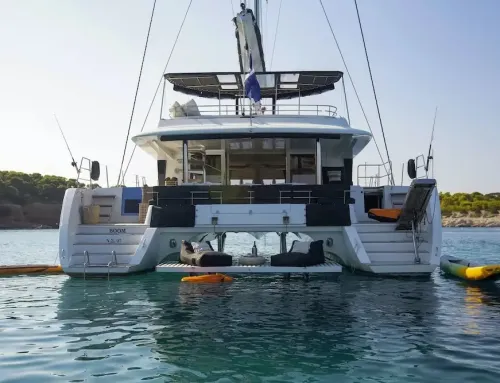
How do I select the perfect catamaran for my group?
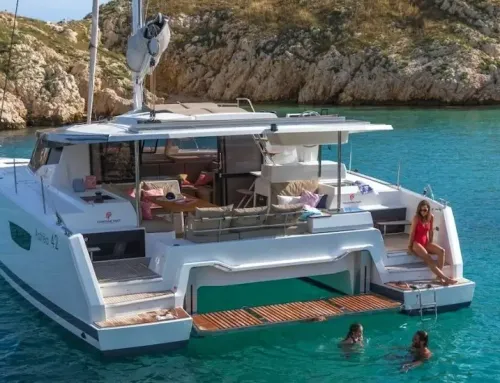
Is there a minimum duration for catamaran rentals?
Real Time Availability
Secure Booking Service
No Cost Reservation
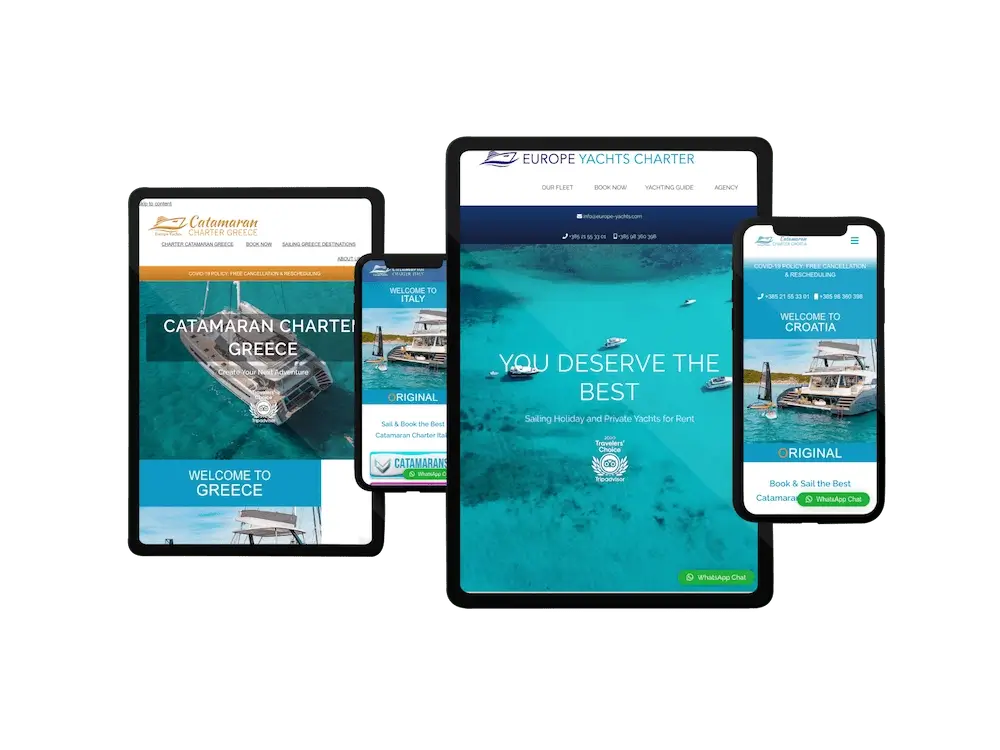
EUROPE YACHTS GROUP
Useful sailing links, secure payments handled by.

Verified Website
CONTACT CENTER
HEAD OFFICE Cusmanich LTD Vrboran 37 21000 Split, Croatia
FLEET OFFICE Grabova 21b 21000 Split, Croatia
+385 21 55 33 01 +385 91 3000 009 +385 98 360 398
USA: +1 646 661 2851 United Kingdom: +44 203 318 2329

HEAD OFFICE Cusmanich LTD Vrboran 37 21000 Split, Croatia FLEET OFFICE Grabova 21b 21000 Split, Croatia

about Catamaran Charter Croatia
We are professional charter company specialized in renting catamarans. Our story began in 2004, to address the need for specialized catamaran charter company in Croatia .
get in touch
+385 98 360 398.

9 Best Power Catamarans For Rough Seas and Coastal!
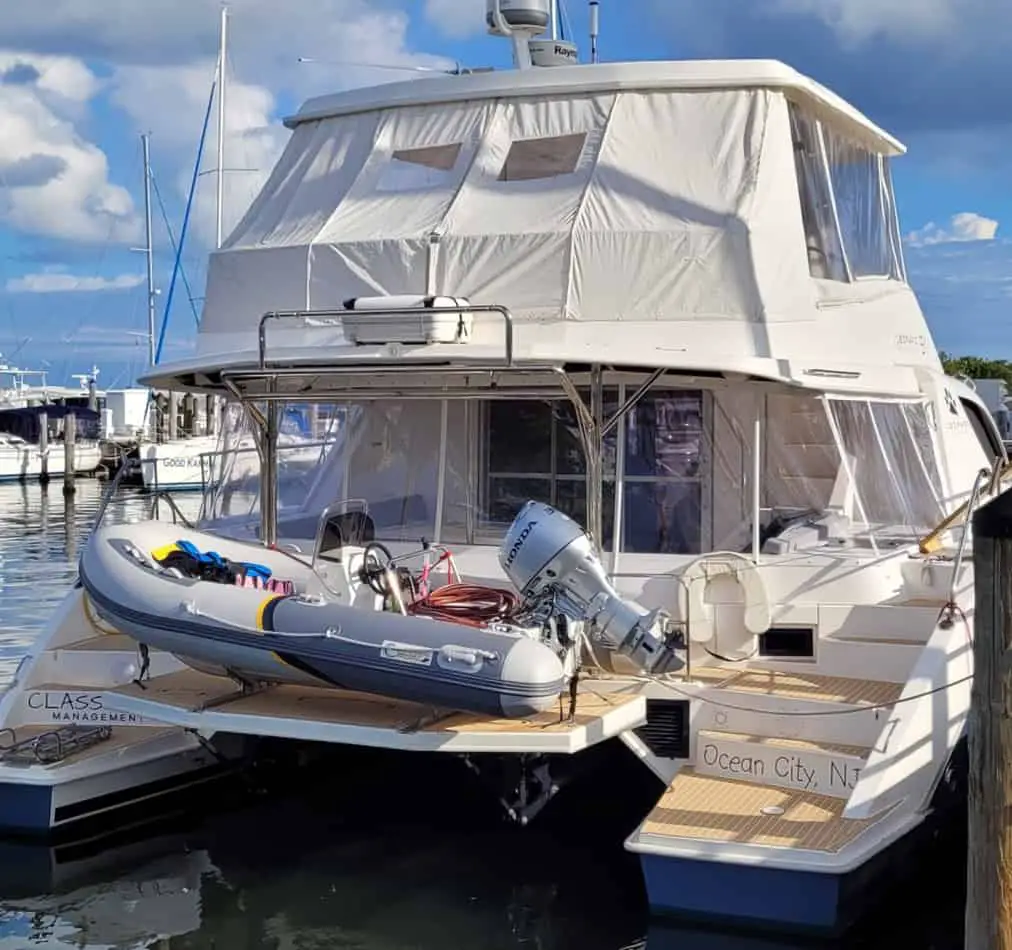
As an Amazon Associate, we earn from qualifying purchases. We may also earn commissions if you purchase products from other retailers after clicking on a link from our site.
Power catamarans are gaining popularity in the cruising world thanks to their enhanced stability and ease of operation. They’re ideal for coastal cruising but can also be used for ocean crossing thanks to their stability and speed.
Here are some of the best power catamarans on the market:
- Fountaine Pajot MY6
- Nautitech 47 Power
- Horizon PC74
- Lagoon Seventy 8
- ArrowCat 420
- Sunreef Supreme 68
In this article, I’ll review some of the best power catamarans out there. I’ll also go over the main features of different power cats and if they can handle rough weather.
But before we dive in, let’s get a better understanding of what power cats are.
Table of Contents
What Is a Power Cat?
A power catamaran (power cat) is a motor-powered boat that, unlike traditional boats, has two hulls connected by a bridge deck. These vessels are more stable than monohulls because of their wide base.
Power cats also don’t have a leaded keel to weigh them down, so they’re pretty lightweight and fast. The lack of a keel also means that power cats are more suitable for shallow waters.
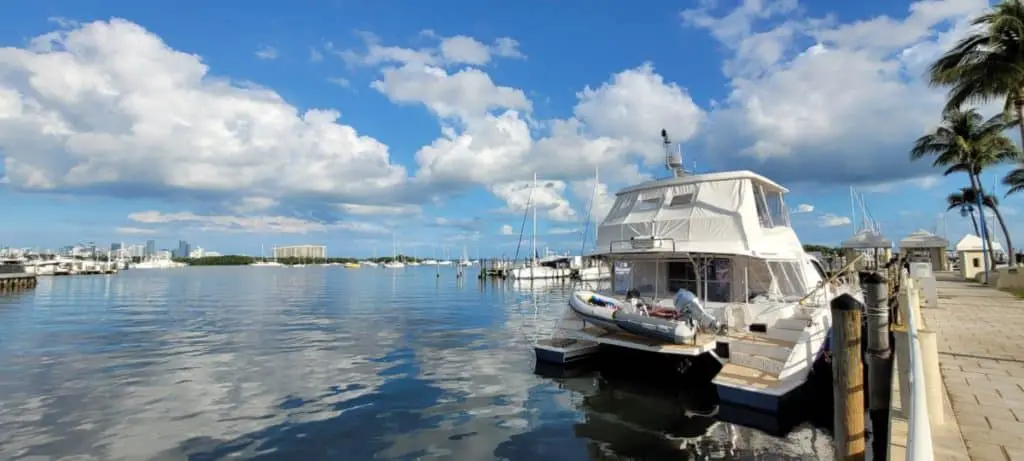
They feature large engines designed to handle their bigger bodies and weights, and serve different purposes, like fishing, cruising, or crossing rough seas. In addition, each hull has a separate engine which makes them more maneuverable, especially at turns and tight spaces.
Power catamarans don’t have sails or masts and get all of their power from the combustion engine (or electric motor), unlike their sailing cousins. In addition, these vehicles are much easier to steer because of their increased stability.
Power catamarans have more interior and exterior space thanks to their multihull design, making them perfect for cruising and liveaboard . They also have ample space for storing everything you need on a cruise without worrying about weighing it down. Catamarans offer increased privacy as well because each hull houses one sleeping area, separated by the living area between them.
Are Power Cats Good in Rough Water?
Power catamarans are good in rough waters particularly because of their multi-hull design. Their wide base makes them stable, and their high speed allows for outrunning bad weather.
Power cats that feature a high bridge clearance, will handle rough waters effortlessly. With the added height, you won’t experience pounding and slamming even in heavy waves, allowing the crew to easily control the vessel in challenging situations.
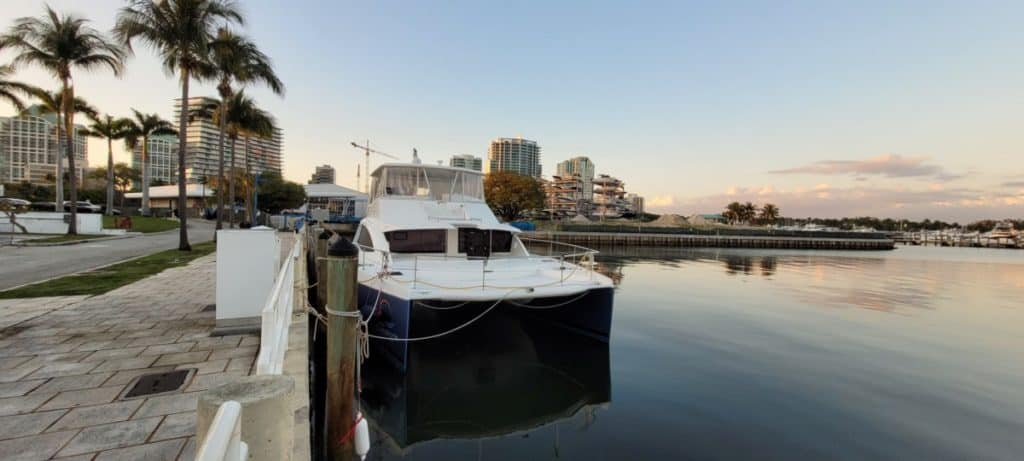
These boats are also faster than their sailing counterparts, which means they can get you out of rough waters quickly.
In addition, since catamarans are large and tall, maneuvering is easier because you have a better view of the surroundings. Additionally, you can steer from the interior cockpit (on certain models), making it easier to control the vessel in bad weather.
Finally, although a power cat doesn’t have a keel to help it right itself in case of capsizing, it will still float easily because of its positive buoyancy.
Are Power Catamarans More Efficient?
Power catamarans are more fuel-efficient than monohulls because they don’t have leaded keels. While keels are designed to offer stability by weighing down the vessel, they increase the wetted surface and thereby add drag.
Due to the catamarans’ narrow bow entry, there’s lower resistance, leading to smoother acceleration and greater fuel economy in catamarans. In addition, power cats show fewer spikes in fuel consumption in a single power band, especially because of their smooth acceleration and fuel consumption.
The figures reported by cat owners or manufacturers show that power cats have the best power-consumption-to-speed ratios.
That being said, you can improve fuel efficiency by maintaining lower speeds; studies have shown that speed can be the most important factor in fuel efficiency, regardless of the number of engines or hull types.
Now that you have a better understanding of power catamarans, let’s take a look at the ten best models on the market.
1. Leopard 53
This 53ft (16.19m) power cat is the fourth generation of the widely popular Leopard catamarans, and brings with it all the great features from her predecessor, the 51.
Although the 51 was the company’s best-selling cat, they added these features to the 53 along with new ones to repeat its success. For example, they have built an enormous saloon, flybridge, and galley by removing the foredeck cockpit in the 51 PC, making it 30 percent larger than the previous model.
This model comes with three or four stateroom layouts, with the 3-stateroom version featuring an owner’s stateroom, two sinks, a loveseat, and lots of storage space.
With two Yanmar 370 hp engines, a maximum speed of 22 knots, and a cruising speed of 17.5, you can enjoy a magnificent ride, whether it’s long-distance cruising or a fun night out with friends.
2. Fountaine Pajot MY6
This luxury power cat is 44ft (13.40m) long, making it super spacious and suitable for families and big parties. With its spacious flybridge, sunbathing lounge, and enormous galley, it’s nothing short of a second home on the water.
You can steer the cat from the saloon or the 21sqm (68 sq ft) flybridge which features a sunbathing lounge, a pool, and a galley.
This motor yacht continues to delight with its luxurious combination of privacy and pleasure, with views of the sea in almost every interior space. With three cabins, two bathrooms, six cabin beds, ample storage, and a kitchen that opens into the cockpit, you can enjoy practicality and luxury in one place.
The MY6 is exceptionally seaworthy and stable thanks to its wave-piercing hulls and Volvo IPS engines.
Like all power cats, it has straightforward steering, enabling you to control this beast even in the roughest circumstances.
3. Nautitech 47 Power
Powered by dual Volvo Penta D4 engines, this model can output 225-300hp, reaching a maximum of 22 knots and a cruising speed of 18-20 knots . This 46′ 8″ (14.23m) long power cat comes in three or four cabin versions, depending on the customer’s preference.
No matter which layout you choose, you’ll get a spacious, luxurious, and comfortable catamaran with panoramic views from the cabin. The sleek, streamlined exterior design ensures elegant sailing and seaworthiness.
It’s easy for passengers to navigate the deck thanks to its seamless design that connects the saloon to the cockpit and the rear deck. The stern features a big swimming platform that can also accommodate a tender. The cockpit is usable in different weather conditions thanks to the clear covers wrapping the whole area.
This efficient catamaran promises long cruising for big families and groups with two 300L water tanks and a pair of 645L fuel tanks.
4. Horizon PC74
The Horizon PC 74 is another luxury power cat that can give you the comfort of your home on water. This 73′ 9” (22.48m) long power cat with a 2,000gal (7570L) fuel tank is an enormous vessel that can accommodate more than 14 people.
The enormous hardtop on the three-piece windshield, the teak dining table, the U-shaped bar, the sun pad, and the swing-out stools all guarantee that you’ll have the luxury cruising experience of a lifetime.
This vast and wide catamaran allows you to access the aft deck from the flybridge via a curving staircase. The vast aft deck has a ten-person dining table, a wet bar, and storage space. You can separate the interior and exterior spaces through sliding glass doors and make the space appear bigger by opening them.
Reaching a top speed of 23 knots and a cruising speed of 19 knots, this enormous catamaran was built for efficiency and practicality.
5. Lagoon Seventy 8
This 78’1″ (23.80m) power cat with two 494 HP engines and a 2246gal (8500L) fuel capacity is one of the largest power cats on the market, offering both comfort and reliability. The enormous flybridge can feature a jacuzzi, a sunbathing area, a large foldable dining table, and a hardtop with a moveable roof. However, you can customize the flybridge based on your preferences.
The designers have compromised nothing in terms of elegance and high-quality materials with top-of-the-line finishes and interior paneling to create the kind of luxury you want.
The saloon is huge, well-ventilated, and separated from the exterior by glass doors and panoramic windows.
But what sets Lagoon Seventy 8 apart from other power cats, in addition to its enormous size, is the wide choice of layouts. You can choose between five different versions, all offering the same amount of storage space, living and sleeping area, and privacy.
Additionally, some versions are fully customizable, allowing you to pick every detail to your liking.
6. ArrowCat 420
This 41′ (12.73m) long express cruiser is a semi-custom catamaran with two-stateroom and three-stateroom layouts. The ArrowCat 420 is designed and built with comfort and strength in mind, and capable of handling rough waters safely.
The two Suzuki 350 hp engines give this model a maximum speed of 40 knots and a cruising speed of 20 knots.
The streamlined design and the angled hulls ensure the vessel cuts through the waves effortlessly, making it easy to maneuver.
The fully-equipped head features an electric toilet, a shower, sink, and mirrors, coupled with a dining table, floor storage locker, and teak-finished floors. This cat is built to combine luxury and comfort for both onshore and offshore cruising.
7. Bali 4.3
This 43′ (13.1m) power cat is made for ocean crossing in mind. With five different layouts featuring different combinations of cabins and heads, the company ensures you’ll get the kind of setup you want. Regardless of the layout, this cat offers a spacious master suite with a large double bed and other private sleeping quarters.
You can quickly add to the overall space by removing the adjustable glass doors to merge the cockpit with the saloon.
A feature that sets the 4.1 apart from its predecessor is the fixed aft deck between the hulls, which provides a passageway and eliminates the need to go from one hull to the other without entering the cockpit.
8. Sunreef Supreme 68
According to its designers, this model was built with a radical concept in mind while staying true to the company’s promise of building the most comfortable and spacious power cats in the world.
One of the greatest features of the Supreme 68 is its aft garage that houses a 5m (16 ft) tender and two jet skis in addition to other water toys.
You can also transform the aft to a large platform for water sports by lowering the garage door.
The four-stateroom layout features ample storage, ensuite guest cabins, queen-sized beds, and TVs to create a memorable stay. The white and beige furniture with chrome details and floor-to-ceiling glazing create a soothing atmosphere that blends with the practicality of the well-equipped galley.
However, if you’re looking for something different, you can opt for a customized model from three different layouts.
9. Hudson 48
The sleek, diamond-cut design of this 46.46’ (14.16m) long power cat is usually the first thing to catch your eye.
It’s a light displacement cat that ensures fast cruising with a top speed of 24 knots and cruising speed of 8 knots thanks to the two 370hp Yanmar V8 engines.
The three-cabin layout features a master stateroom with a spacious and well-ventilated design made possible via the three overhead windows and opening deck hatches.
The saloon’s enormous helm station allows for comfortable and safe accommodation, making it great for rough waters and bad weather conditions.
This model also offers a few entertainment options with its large TV systems and mood lighting. The storage areas and the full-sized walk-in wardrobe give this model a comfortable, homely setting.
Here are Some of My Favorite Catamaran Cruising Resources
Thank you for reading this article. I hope you found it helpful as you hopefully start your sailing adventures. Here are some resources that I use as a sailor that I hope you’ll also find helpful. These are affiliate links, so if you do decide to use any of them, I’ll earn a commission. But in all honesty, these are the exact things that I use and recommend to everyone, even my own family. Sailboats: If you’re looking for the best boat to suit your needs, I would recommend a catamaran. If you’re interested, I can show you the differences between catamarans and other types of sailboats .
Books: For getting started, I really like Cruising catamarans made easy . It is actually a textbook from the American sailing association; it is used to get a cruising catamaran certification. There are some other great books, and I have compiled a list of books about cruising catamarans that you will find useful.
Communication: Being out on adventures, whether it be sailing or climbing mountains, good communications are essential to being safe. I recommend two things Google fi (incredibly simple cellular data all over the world) and Garmin inreach mini (for text and voice in remote areas without cell coverage)
Sailing courses: Online sailing courses are great for beginners starting out their sailing career; it’s an efficient way of learning the basics of navigation, throttle controls, and maritime safety. I suggest starting with two free courses from NauticEd .
To see all my most up-to-date recommendations, check out this resource that I made for you!
Owner of CatamaranFreedom.com. A minimalist that has lived in a caravan in Sweden, 35ft Monohull in the Bahamas, and right now in his self-built Van. He just started the next adventure, to circumnavigate the world on a Catamaran!
Leave a Reply Cancel reply
Your email address will not be published. Required fields are marked *
Save my name and email in this browser for the next time I comment.
Recent Posts
Must-Have Boat Gear for Catamaran Sailors!
Sailing is probably the most gear-intensive activity I've ever done; there are so many decisions to be made about what gear to buy now, for tomorrow, and what to definitely never buy. The gear on...
6 Best Trailerable Trimarans For Bluewater and Coastal Sailing
Having a boat costs a lot of money, even when you are not using it, marina fees, etc. And once it is in the water most sailors never go very far from their "home marina" and sailing will be somewhat...
- 2024 BOAT BUYERS GUIDE
- Email Newsletters
- Boat of the Year
- 2024 Freshwater Boat and Gear Buyers Guide
- 2024 Boat Buyers Guide
- 2024 Water Sports Boat Buyers Guide
- 2024 Pontoon Boat Buyers Guide
- Cruising Boats
- Pontoon Boats
- Fishing Boats
- Personal Watercraft
- Water Sports
- Boat Walkthroughs
- What To Look For
- Watersports Favorites Spring 2022
- Boating Lab
- Boating Safety
- Ultimate Boating Giveaway

The Best-Riding Center Console Boats for Rough Water
- By Heather Steinberger
- Updated: April 7, 2020
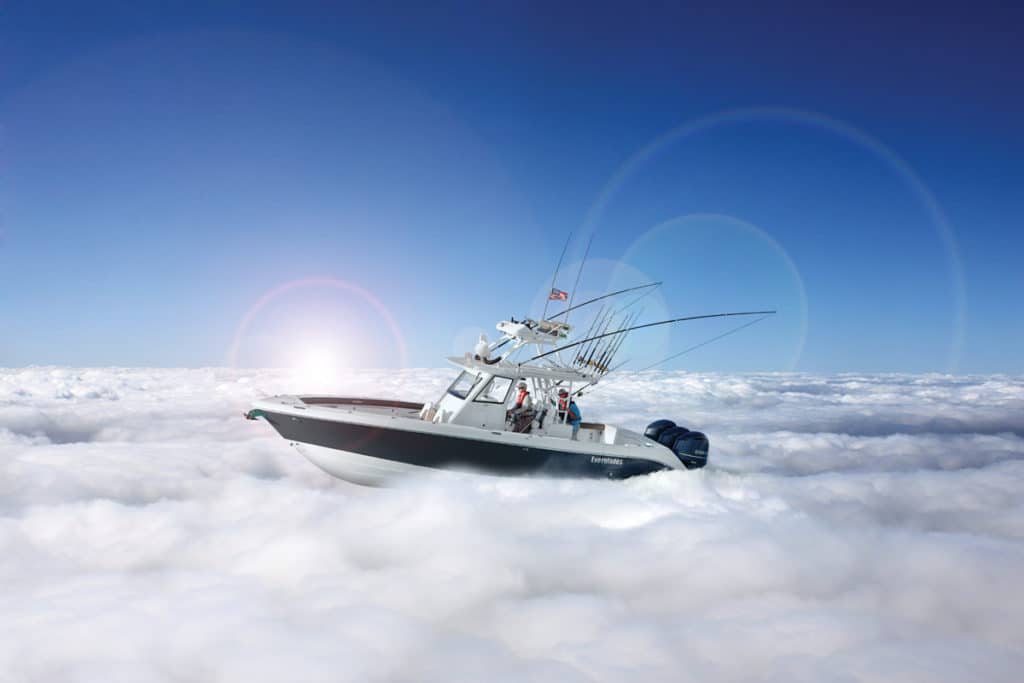
We’ve all been there. A headwind pipes up, and choppy, rough seas dance between you and your destination. You throttle up; you throttle back. You try to help your boat find its comfort zone, and you do your best to quarter the waves.
Inevitably, though, there are those stomach-dropping lurches and the slamming that clenches your muscles and rattles your dental work. Despite your best efforts, you can’t ignore the bangs down below, the ones that make the hull shudder. The ones that make you fervently hope that everyone involved with building this boat did a good job.
That’s a rough ride, even for a rough water boat. And it has happened to all of us, so let’s be honest. Not every boat can provide a soft, smooth ride in snotty conditions, no matter what the glossy brochures say.
We asked three prominent boat designers, and their answers provided much food for thought — regarding how to choose a vessel that’s going to provide a smooth ride, best boat for rough seas, the compromises and trade-offs inherent in your choice, and whether a smooth ride is even what you should be looking for in the first place.
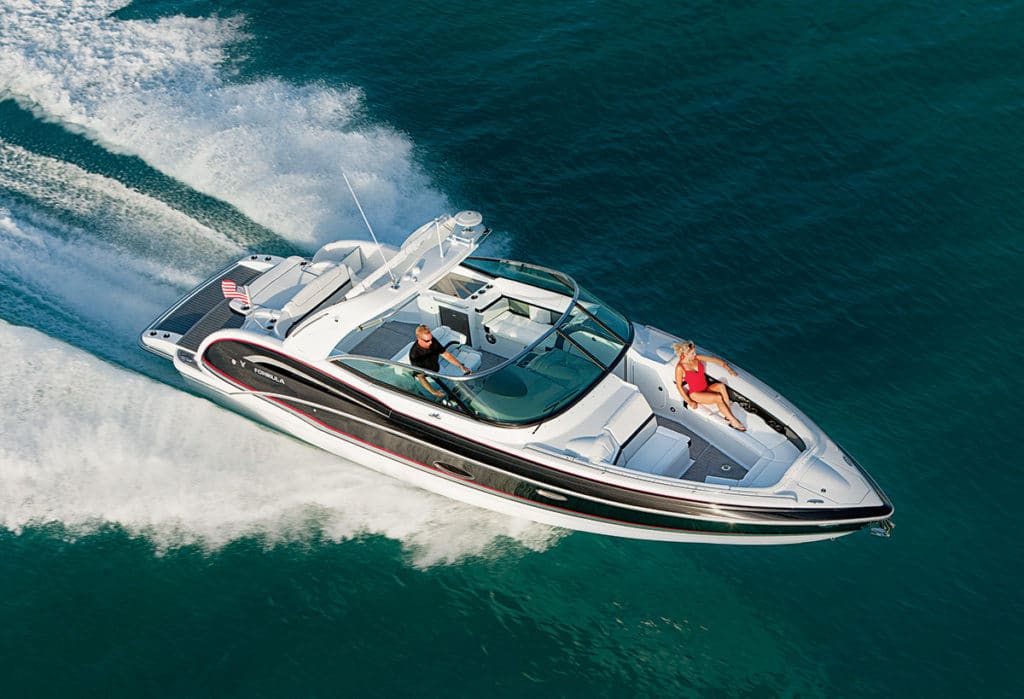
Comparing Displacement and Planing Boat Hulls
Dave Gerr founded New York City-based Gerr Marine Inc. in 1983. He’s designed a broad range of recreational boats and commercial vessels, both monohull and multihull. When it comes to designing a soft-riding hull, he immediately pointed out that there are different sets of criteria for displacement hulls and planing hulls.
Displacement hulls, he noted, don’t pound the way a planing hull will, so they automatically provide a softer ride. To maximize this, designers need to ensure three things: a good roll time, good heave characteristics and deadrise forward.
“For the roll time, we have a formula,” Gerr said. “Every boat has a natural roll period, which is 1 to 1.1 seconds times the boat’s beam in meters. If it’s slower than that, you’ll get that drunken motion. If it’s faster, it’s going to feel snappy and uncomfortable.”
For example, a boat with a 6.7-foot beam ideally should have an approximately two-second roll time. And, Gerr added, a reasonable deadrise forward will make the vessel even more comfortable.
The formula for heave, however, is more complicated. It involves the weight of the boat and the water plane area. The lighter the boat is, and the greater its water plane area, the greater the heave motion will be.
“A wide boat with a large water plane will bounce up and down violently,” Gerr said, “but if you have a small water plane compared to the boat’s weight, that heave will be slow. If it heaves too slowly, you’ve got a wet boat.
“You want to have your roll time and heave in the target region, and then add that deadrise forward,” he continued, “so you won’t have pounding in chop.”
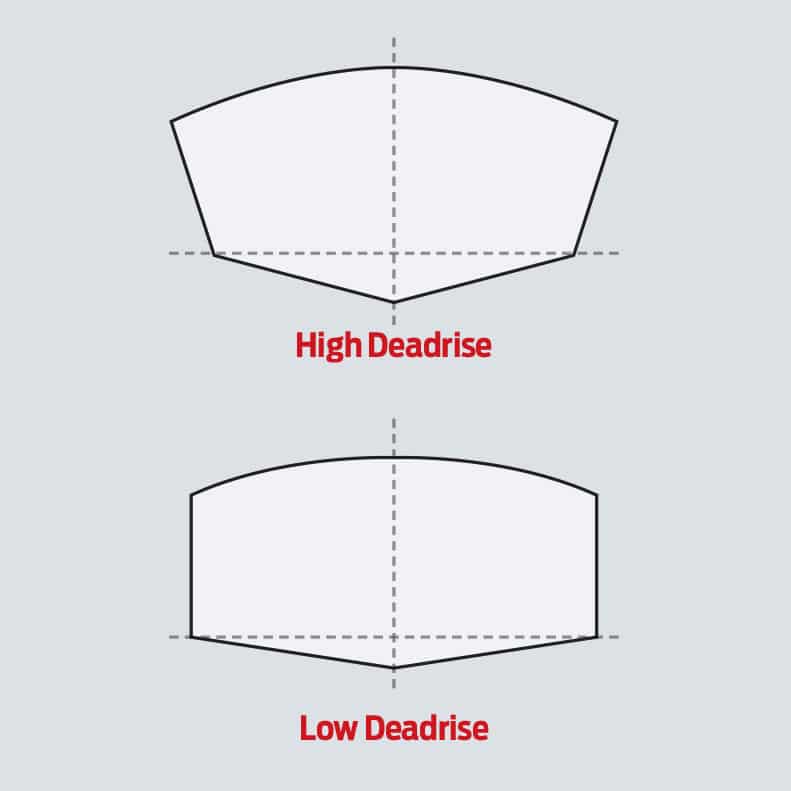
For a planing hull this is hard to achieve. By nature, these hulls are snappy and heave more while trolling or drifting; planing cancels that out, but you can still pound.
“What you really want is more deadrise,” Gerr said. “Just remember: The greater the deadrise, the slower the boat [for the same weight and engine]. That deep-V hull is going to need more power.”
A designer, he said, has to juggle power and what is good deadrise on a boat for optimum comfort.
“You put a deep, high deadrise at the forefoot to get the boat to lift its bow out of the water, or you’ll have steering problems,” he said. “You design it so it planes higher, and then you control it with trim tabs so you won’t trip over that forefoot.”
Deadrise is a difficult thing to visually assess at a boat show or in a dealer’s showroom, so how can a boater ascertain if a soft ride was a design priority? Gerr said the length-to-beam ratio is a dead giveaway.
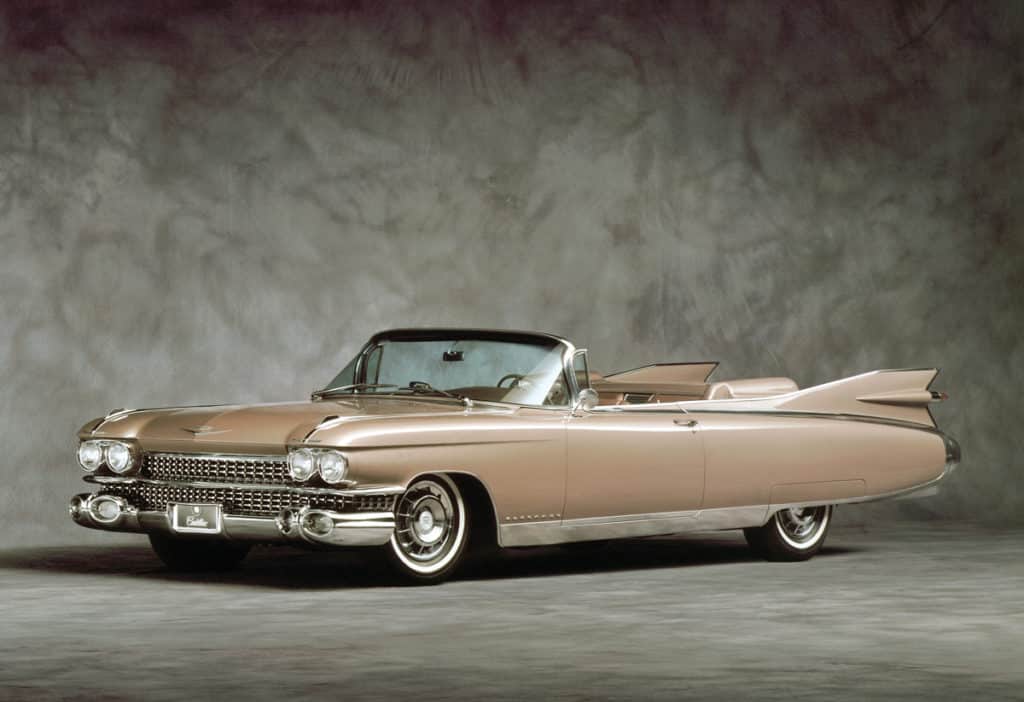
“A long, slender hull is going to have a softer ride, as long as the designer got the roll time right,” he stated. “A wide, shallow hull isn’t going to perform as well. And if you’ve got a high superstructure, you’re going to have increased roll and handling problems.”
Of course, less displacement means it’s a smaller boat inside. You’re going to have to go longer to get the same live-aboard space as that shorter, wider, taller boat next door, but the good news is that your boat is going to be faster and more fuel-efficient than the fat, high version of the same length.
If you are talking deadrise, Gerr said he likes to see a minimum of 17 degrees for offshore boats, although he observed that’s still a bit shallow. Deep-V hulls are considered to be 21 degrees or more. Consider this if you’re looking for the best deadrise for rough water.
“I’d say look for a deadrise of more than 20 degrees,” he advised, “and a length-to-beam ratio on the waterline that is greater than 3.5 to 1. Those two characteristics give you a pretty good idea that the design is intended for a soft ride.”
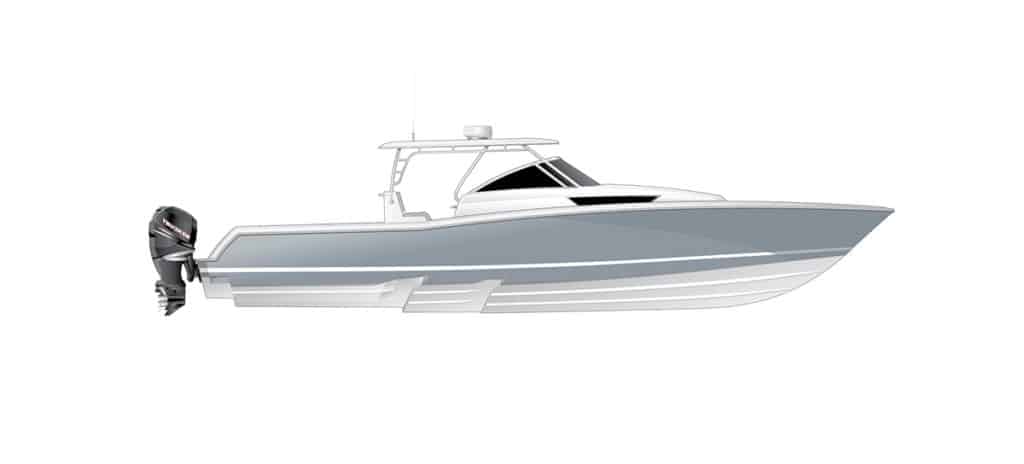
How Does a Boat Hull Handle in Following Seas?
Michael Peters founded Sarasota, Florida-based Michael Peters Yacht Design (MPYD) in 1981. Originally specializing in high-speed boats and offshore racing, MPYD now brings its fusion of performance and aesthetic standards to a wide variety of boat designs. When asked about the search for the perfect soft-riding boat, Peters laughed.
“Think of these ideals: soft-riding, dry and fast,” he said. “Now, pick two.”
The softer-riding a boat is, the wetter it is, because it doesn’t confront the wave. Rather, it splits it. If you want to knock the water down and push it away, then you’ll feel the impact. Boaters clearly need to consider these trade-offs when seeking a soft-riding vessel, but Peters has a more important cautionary tale to share. It’s natural to think of head seas and a soft-riding hull together in the same scenario — but what happens when the boat turns around?
“That’s a different story,” Peters said. “Following seas can pick up the stern, and the sharp angle and deadrise can cause the boat to bow-steer and broach. That’s a much more dangerous situation. It’s uncomfortable to hit the seas on the nose, but it won’t kill you. Boats go out of control in following seas, not head seas.”
Simply put, a hull that is too pointy forward and too flat aft will have an increased risk of broaching. Boaters should look for a hull with deadrise spread evenly — no extremes, such as a professional offshore racing boat’s sharp deadrise throughout the hull. The best boat hull for rough seas must be able to handle following seas.
“If you’re going to have fine forward sections, you’ll balance the hull by putting a lot of deadrise aft,” Peters explained. “You’re looking for recovery, a bow that doesn’t plunge and that can regain its buoyancy in a following sea.
“In our forward sections, we always run a convex section that’s puffed out,” he continued. “Some curvature helps dissipate wave energy and impact. Concave sections look like they’ll provide a softer ride, but they actually focus the energy.”
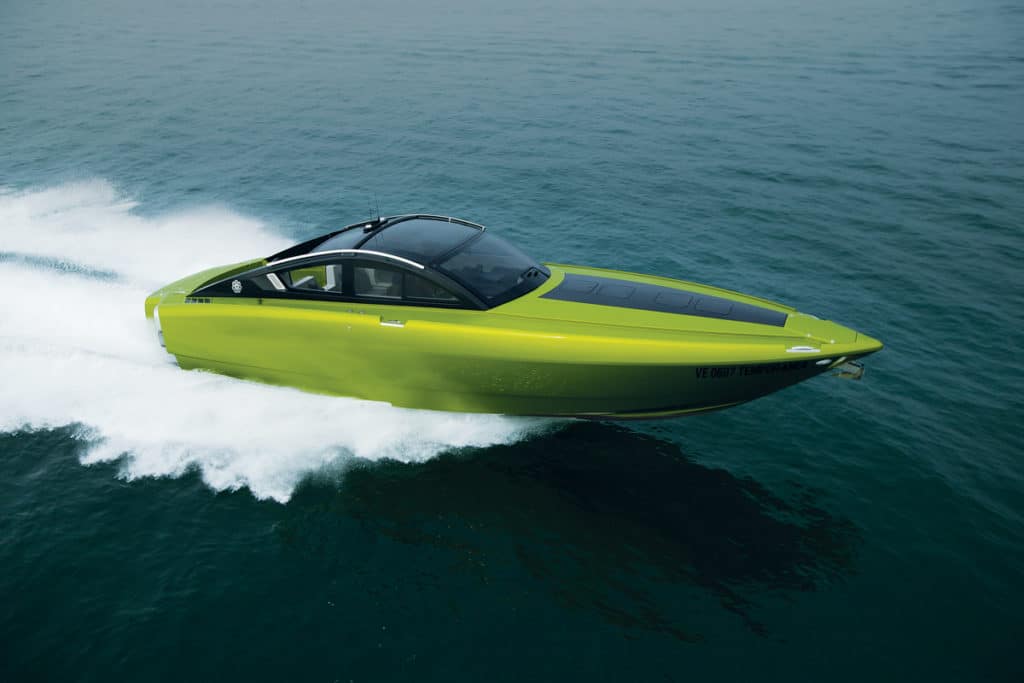
Peters’ advice to boaters is twofold. First, avoid those extremes. They’re not necessary for most recreational boaters. And second, make sure you have a good grasp of where and how you’re going to use the boat. An offshore cruising boat might not be the best choice for a river or inland lake.
“Lakes can be much harder for running a boat than the ocean, where you have long swells rather than steep, breaking seas,” Peters said. “Just make sure you’ve planned for the worst conditions you’ll run in, not the best, and never, ever sign a contract without running the boat in the intended conditions.”
Some boats, he said, are not designed to be the best boat . Sometimes the goal is to provide the best accommodations for the hull’s length and beam, which can mean creating a vessel that has a lot of windage, high freeboard, a high center of gravity and a very wide beam for its length.
“We don’t get to design the best boat in all cases,” Peters said. “No perfect boat? No kidding. But every boat appeals to somebody. One guy might love this particular boat, and he wants that 6-foot-4-inch headroom, while another guy is going to hate the compromises.”
“You always have to be aware that the more you emphasize space, the less boat it’s going to be,” he warned. “And it’s counterintuitive, but what looks good might not be good at all.”
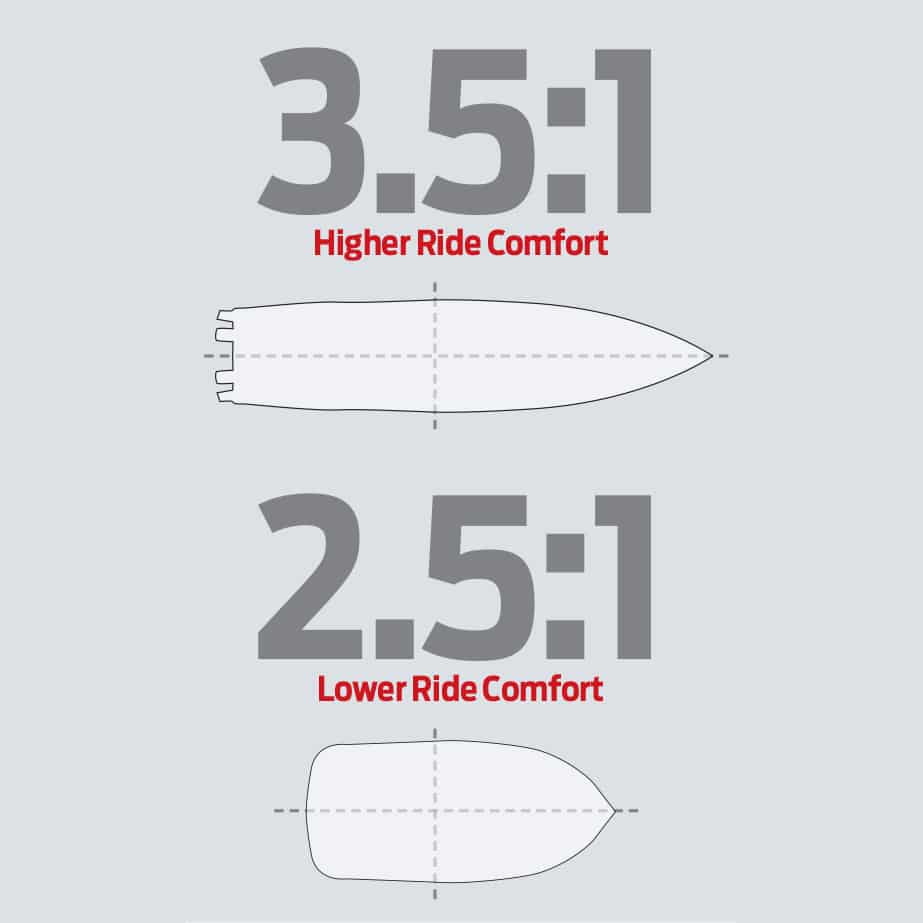
Peters also advised inquiring about a preferred design’s origins. Was it designed in-house at the boatbuilding facility? Was it designed by a naval architect? What are his or her credentials?
“Some people might not care, but it will help you better understand the design,” he said. “With a car, we accept that all the engineering is done correctly, and we can choose our favorite based on appeal alone. With a boat, you should think about engineering and stability calculations, not just styling.”
Finally, Peters noted that good hull designs stand the test of time. With most major advancements taking place in hybrids, like stepped hulls and multihulls, the average boat owner is going to be looking at hull designs that haven’t changed much in 20 or 30 years. And that’s OK.
“Most people just want a good family boat,” he said. “I’d say stay in the middle. The hull should look familiar. That hull from 30 years ago is still a good hull.”
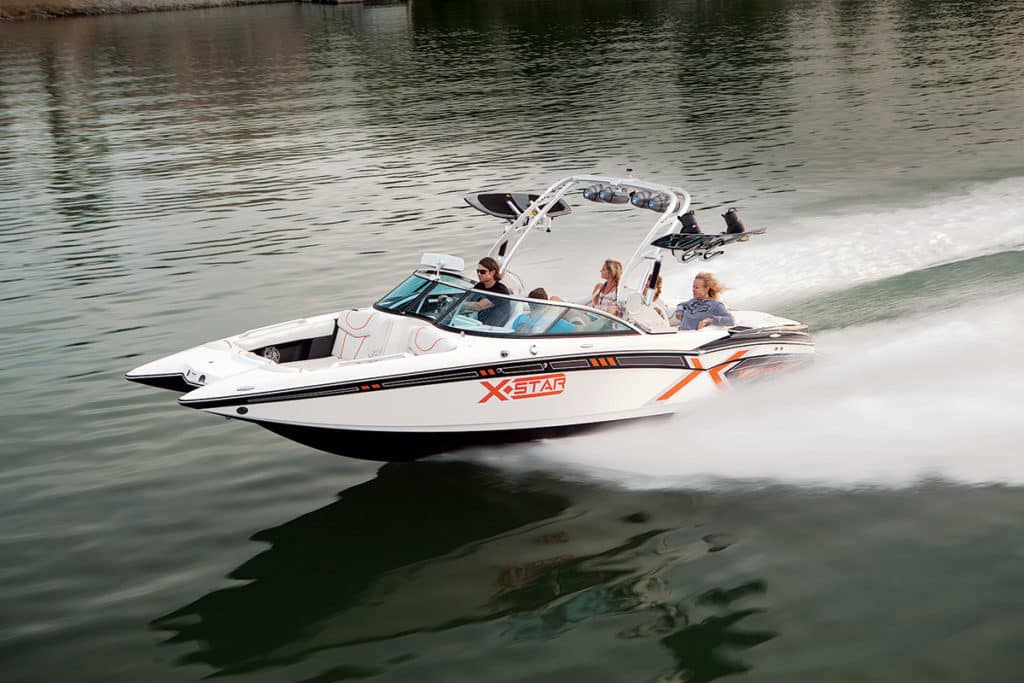
A Boat’s Soft Ride is Subjective
Peter Granata, owner of Palmetto Bluff, South Carolina-based Granata Design , has been designing boats since the early 1970s. With a number of award-winning designs and patented ideas under his belt, he’s firm in his conviction that the soft-ride discussion really shouldn’t be about the boat. It’s about the people involved.
“First of all, the hull ride is felt rather than measured,” he said. “And, it’s based very much on your own individual perception of what the boat looks like and what you expect it to deliver, plus your experience up to that point. It’s very subjective.”
Soft can be a relative term. A boater who is downsizing from a 60-foot yacht to a 30-foot pocket cruiser might find the smaller boat has the worst ride he’s experienced to date, whereas a boater jumping up from a 16-footer will say that 30-footer provides the best ride he’s ever had.
The most important questions a boater can ask, Granata said, are: How well does this design meet its intended purpose, and what can it do for me?
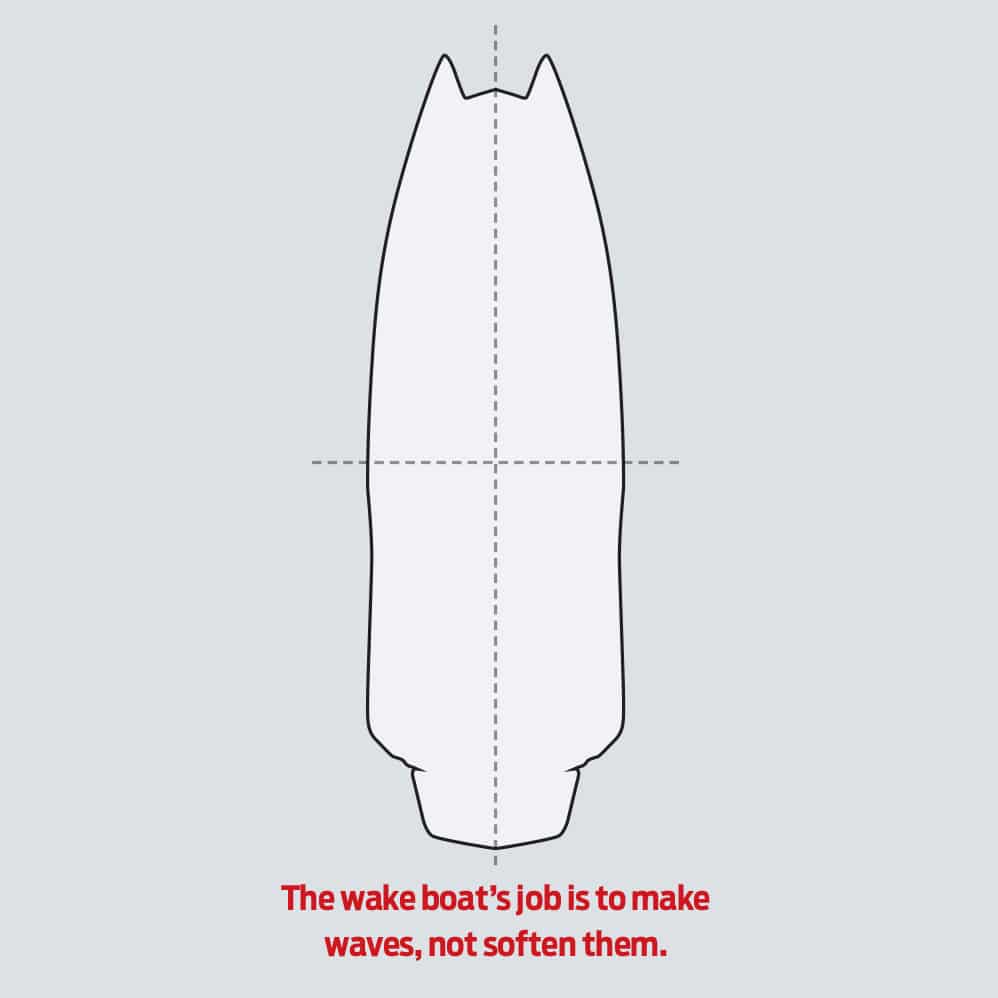
He provided a wakeboard boat as an example. The expectation is for thrills, not the softness of the ride.
“Soft ride is certainly a measurement when it comes to boat design, but it’s not the only one,” he said. “A designer should manage the ride aspect to meet the customer’s expectation. Does the boat do what it’s intended to do?”
The idea is that ride is less important than function, based on customer priorities. If you’re headed offshore and a dry ride is your No. 1 priority, you’ll want to make sure the hull has enough flare to ensure that the water follows the hull and travels outboard rather than over the deck. If you’re an angler, you might look for hull cutaways in the right spots to support the design’s self-bailing characteristics. Bass anglers seek extra buoyancy forward to support their weight.
With “dockominiums,” deep deadrise is unnecessary because owners place a higher priority on stability at rest, accommodations and space for entertaining. And with water-sports boats, the wake is all-important. Without that, the hull is worthless.
“We get so wrapped up in the specifics of hull generation that we forget someone has to buy it and spend time in it,” Granata said. “A designer has to know how the boat will be used, and you do as well. The boat is for you, not for the guy who made it.”
- More: boat building , Boats , Center Consoles
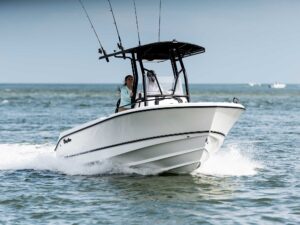
Boat Test: 2024 EdgeWater 208CC Watchman
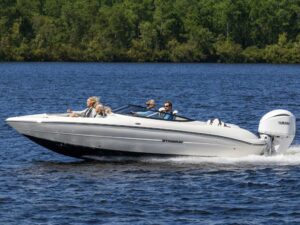
Boat Test: 2024 Stingray 23 OSX
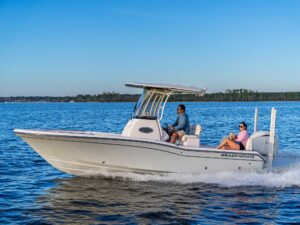
Boat Test: 2024 Grady-White 231 Coastal Explorer
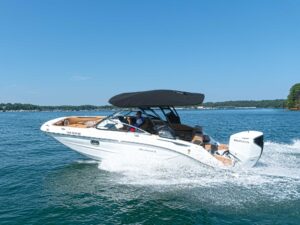
Boat Test: 2024 Hurricane SunDeck 2600 OB
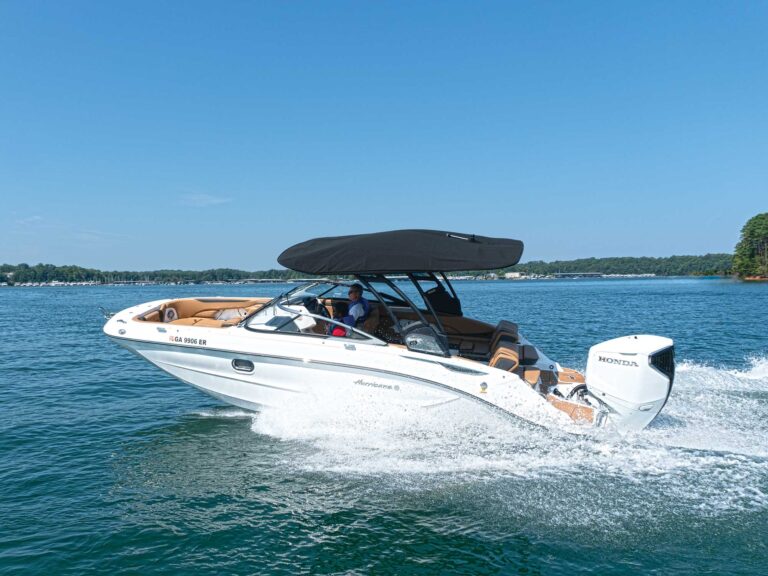
Boat Test: 2024 Brabus Shadow 1200 Sun-Top
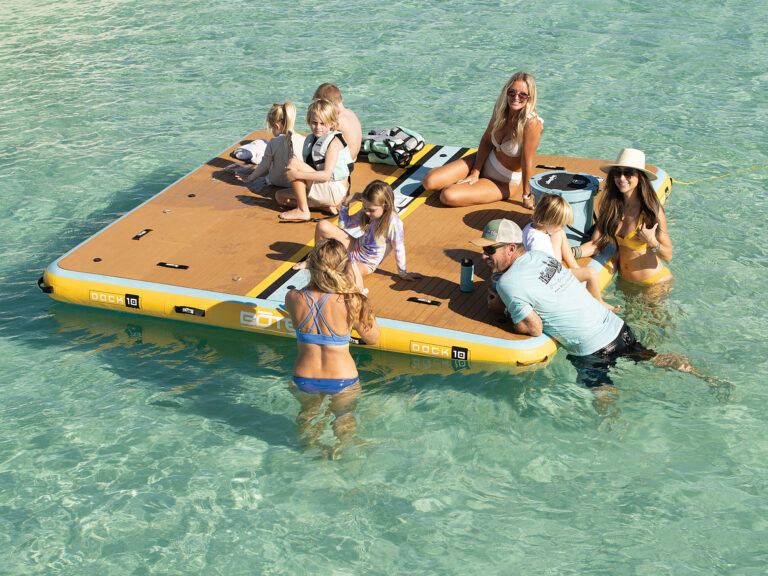
Inflatable Water Mats for Boaters
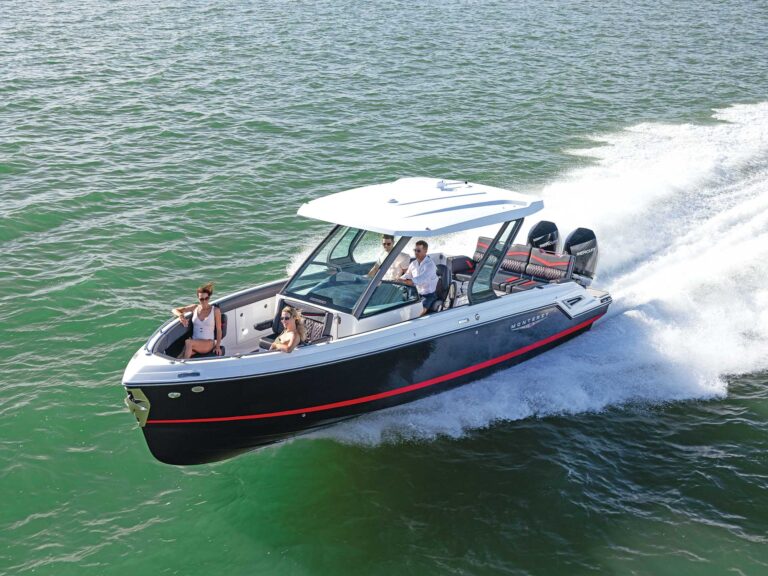
Boat Test: 2024 Monterey Elite 30

- Digital Edition
- Customer Service
- Privacy Policy
- Terms of Use
- Cruising World
- Sailing World
- Salt Water Sportsman
- Sport Fishing
- Wakeboarding
Many products featured on this site were editorially chosen. Boating may receive financial compensation for products purchased through this site.
Copyright © 2024 Boating Firecrown . All rights reserved. Reproduction in whole or in part without permission is prohibited.

Are Catamarans Safe In Rough Seas?
- Post Written By: Boater Jer
- Published: April 16, 2020
- Updated: July 8, 2022

Disclaimer: You might notice that we recommend products in some articles. We may earn a commission for referring you if you click the link and buy a product.
We only recommend products we’ve tried/tested/own (that’s why you won’t find thousands of affiliate links on my site). If you have experience with one of the products we’ve mentioned, please share your experiences in the comments at the end.
Catamarans are known to be reliable and fun to operate. From the personal watercraft sized cats to the massive superyacht class of catamaran, all are great ships of the seas. But are catamarans safe in rough seas?
Catamarans are very safe in rough seas compared to monohull vessels of equal size. Now, I don’t want to give you a false sense of security. You should never deliberately go out in rough seas. However, when comparing the safety of catamarans to monohulls, catamarans win every time.
Let’s dive into how much more safe the catamaran is than a monohull. We’ll look at what makes the catamaran safer, and we’ll also take a look at what we consider to be rough seas. Then maybe we’ll make a little comparison between the catamaran and a monohull. Moving right along, we’ll start with a quick look at rough seas, so we’re on the same page. That is before I discuss how safe these amazing watercraft are.
What Are Rough Seas?
If we’re going to have a chat about catamaran safety in rough seas, we need a baseline to compare levels of calm versus levels of choppy waters. By definition, the word rough is having an uneven or irregular surface. Well, that’s just about every ocean there is. If we’re talking about lakes, then any major lake will be rough most of the time only by size alone. But, what do I mean when I say rough? And what do you think when you think of rough seas?
I can tell you from experience that rough seas are conditions that are beyond the standard terms. By this, I mean that they are worse than usual, and one could even say a bit treacherous. I wouldn’t call rough seas the perfect storm, but losing a ship in rough seas is certainly not unheard of.
Now, depending upon what size of vessel you are thinking about, your definition of rough seas will change. For example, a sixty-foot sailing catamaran will waters that are too rough for a twenty-four-foot model. However, for the following convention, in this article, I will define rough by the same baseline as the United States Coast Guard. Here’s a chart I made of the water conditions as described in the 2018 Recreational Boating Statistics publication. 1
So, by definition:
Rough seas are defined by waves from two feet to six feet in height.
But, let’s take a look at why catamarans are so safe compared with many other boats when it comes to rough waters.
This Is Why Catamarans Are Safe (well, more reliable, that is)
Catamarans are safe in rough seas because of more stability, smaller draft, easier maneuverability, higher speed, and less floating so less seasickness in agitated waters. Of course, this is in comparison to a monohull vessel of equivalent length. The more excellent stability is due to a wide stance, double-hull design. The catamaran platform is, by its very nature, a safer and more reliable platform than a monohull ship design.
It comes down to simple physics. And it’s tough to argue with math.
“Math (and plants) don’t lie. People lie.” Farmer Jer, 2016
One might also say that catamarans are safer due to their decreased fuel requirements compared with monohull vessels. As this is the case, it is much less likely to run out of fuel. It may not be an actual point, comparing physical craft to craft as it has a lot to do with proper planning, and of course, filling up your tank.
The Argument: Capsizing
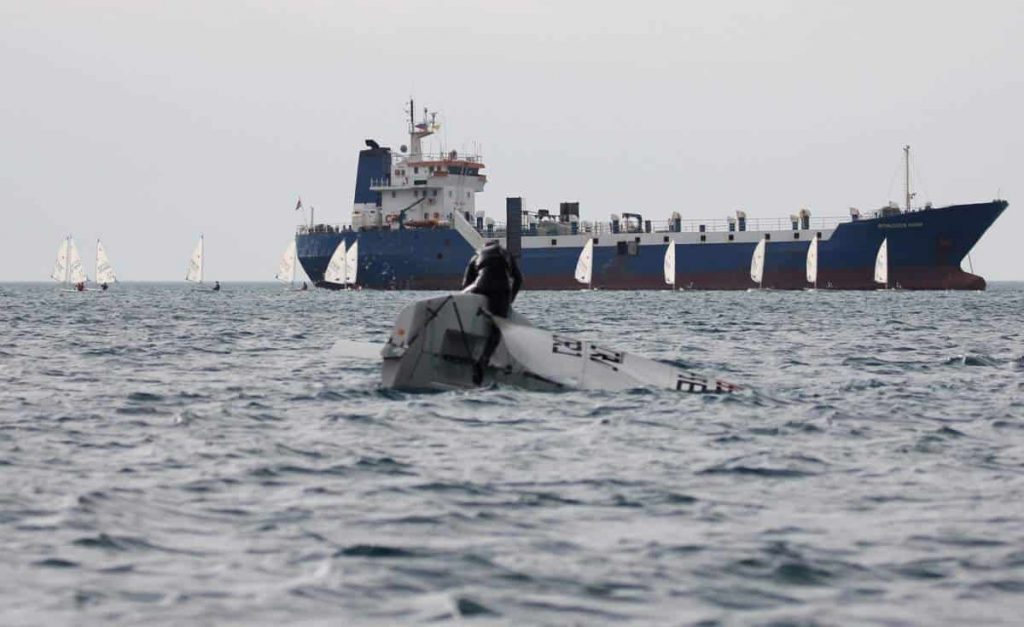
There is a big debate about the safety of a monohull versus catamaran when it comes to capsizing. The argument goes as follows. When you capsize a monohull, it is much easier to right the craft again. However, the flip side to this argument is the nearly unsinkable nature of the catamaran. Even if one flips over, due to the nature of having two hulls, it is almost impossible (well, highly unlikely anyway) to sink. So, it may be harder to flip back over once capsized, but I’d take having to wait for help on a flipped deck of a cat than to sink to Davy Jones Locker in my monohull.
Why Catamarans Are Safer Than Monohulls
There are several reasons why catamarans are safer than monohulls of equal length. The obvious is that they ride on two hulls instead of one. It would be like skating on two feet instead of just one foot. But, rather than get too deep into a skating analogy (it’s cold outside, so skating was the first thing that came to mind), let’s take a look at the top 6 reasons why I think catamarans are safer than monohull boats of the same length.
- Footprint. The larger platform of the catamaran means that it is more than twice as stable as a monohull. Think of a monohull like a bicycle or maybe a motorcycle. The catamaran is a car in this comparison. A car can stand on its own, having four wheels. A bike cannot, requiring a kick-stand to steady it unless it has the momentum to help hold it upright. A catamaran can sit in the waves and take a beating without breaking a sweat.
- Speed. The catamaran design is known to be faster than monohulls. IT helps cats to beat the storms and rough seas only by outrunning the storms. It may not always be possible, but it sure is more likely in a catamaran than a monohull.
- Space. The extra cabin space on a catamaran means that your gear can be adequately stowed and not squished up into every nook and cranny. Having gear stowed correctly in rough weather is vital to avoid injuries of those on board. The extra space a catamaran provides allows for more room to store your equipment safely.
- Maneuverability. Often enough, a catamaran will have dual engines, one on each hull. Now, this might cost a bit more in gas or maintenance, but it means that you can maneuver into and out of tight areas with ease compared to moving a monohull vessel.
- Less Draft. The weight dispersed onto two hulls on the water makes for less weight per hull. A monohull has all the pressure on one hull. That means that a monohull that has equal weight to a catamaran will sit lower in the water than the catamaran will. It is even more true when it comes to sailing catamarans compared to sailing monohull boats, which need to have a deep keel to stay upright in any kind of cross-wind.
Best Practises For Safely Operating A Catamaran In Rough Seas
There are several things you can do to be safe. The style, type, and size of the catamaran will dictate a lot of different safety practices. We’ll go over a few of the basics here. I’ve taken the liberty of creating a list of the top safety tips and best practices for going out on your catamaran. Safety is especially important in case you get inadvertently caught in rough seas.
1. Training and Education . According to the United States Coast Guard, statistical data1 shows that in 2018 the percentage of individuals killed in boating accidents, who did not have formal education relating to boating, made up 74.2% of deaths. Take a look at this chart I made based on those statistics:
2. Local Current Weather Tracking. One of the most important things you can do is educate yourself about the weather. Know what kind of weather is advised and keep on top of knowing as it changes. Knowledge is your best defense against being caught out in rough seas on your catamaran.
3. Personal Protective Equipment. Otherwise known as PPE for short, its mandatory equipment that boaters must have onboard or their person. Take a look at the article I wrote about the legal minimum requirements for North American boating. I included a link at the end of this article for your convenience. While you’re at it, read the article about life vests and life jackets, also linked at the end of this article.
Take a look at the Boating Guide Magazine’s
RECOMMENDED Boating Gear
You’ll find everything from Fish Trackers and GPS to anchors and tow ropes. We have either owned and tested or have a close friend who owns and has tested the products and services we recommend. There is no crap recommended on Boating Guide Magazine, we stand by that.
Bibliography
- U.S. Department of Homeland Security, U.S. Coast Guard, Office of Auxiliary and Boating Safely, 2018 Recreational Boating Statistics, COMMANDANT PUBLICATION P16754.32, August 19, 2019. https://uscgboating.org/statistics/accident_statistics.php accessed April 16, 2020.
- Yachts International. https://www.yachtsinternational.com/owners-lounge/sail-debate-monohull-vs-catamaran accessed April 16, 2020.
- Prasanta K Sahoo, Marcos Salas & Adam Schwetz (2007) Practical evaluation of resistance of high-speed catamaran hull forms—Part I, Ships and Offshore Structures, 2:4, 307-324, DOI: 10.1080/17445300701594237
Recommended Reading
- A Complete Catamaran Guide
- Boating Gear Requirements For Canada And USA Waters
- Staying Safe On A Catamaran: 24 Essential Tips
- Can A Catamaran Capsize?
Winterizing Your Boat
- Life Vest Guide
fake rolex watches for sale
Share this post with your friends.
- Tags: boating safety , catamaran , catamaran safety , rough seas , rough waters
Subscribe to our Newsletter
Join us in our love for all things water. And Adventure.

Grilling On A Boat 101 – 3 Types Of Grills For Boating And Some Awesome Cooking Ideas For Out On The Water
Grilling on a boat is an enjoyable experience that brings fresh and hot food right to your deck. Let’s explore some of the best boat grills and some great cooking ideas when out on the water.

How Long Can You Leave Gas In A Boat?
Gas is yet another essential item in a boat. Gasoline is essential for any combustion engine, whether it’s an outboard or an inboard. So, how long can you leave gas in a boat? Leaving gas in the boat can be dangerous. Luckily, there’s a specific time limit to which leaving gas in a boat is

When Is A Boat Called A Yacht? (Find Out Here – FAST)
When is a boat called a yacht? Let’s find out. The marine community interchangeably uses boats, ships, and yachts. Even though these watercraft mostly sound the same, there are distinct differences among the three. Boats can refer to watercraft ranging from personal vessels to something that can carry one or more passengers. Yachts sound more

Preparing a boat for winter storage – a step by step guide.

How Long Does It Take A Canoe To Go… (Canoe Calculator Here)
You asked, and we answered: Here’s a calculator to determine how long your canoe trip will take. The calculator uses the average speed of an average canoe in calm water. Here it is: The Canoe Trip Time Calculator: Canoe Trip Calculator Enter the distance: Kilometers Miles Calculate Canoe Articles & Information replica rolex

This Is WHY Boats Back Into Slips
Wondering why boats back into slips? Well, wonder no more my friend, Captain Jer is on the case! By the end of this article, you’ll not only know why it’s a good practice to back your boat into a slip but also a lot more about boats, slips and a few handling tips too so ride along with me and dive into why boats back into slips.

Boat Information By Type
© 2023 Boating.Guide, A Hyperwave Media Group Ltd. Publication.
Privacy Overview

FREE CANCELLATION & RESCHEDULING 2024
+385 21 55 33 01 +385 91 3000 009
+385 91 3000 009

Are Catamarans Safe in Rough Seas?
Introduction: setting sail in greece.
Embarking on a Greece yacht charter adventure is a dream for many sailors. The azure waters of the Aegean and Ionian Seas beckon with their beauty and promise of idyllic sailing conditions. But even in this Mediterranean paradise, weather can be unpredictable, and rough seas are not uncommon. This raises an important question for those considering a yacht rental in Greece: Are catamarans safe in rough seas?
Understanding Catamaran Design
Dual hulls: stability and comfort.
The most distinct feature of a catamaran is its two hulls, which provide a wider base and more stability than traditional single-hulled vessels. This design minimizes rolling and can make for a more comfortable experience, especially in choppy conditions.
Weight Distribution and Buoyancy
Catamarans are designed to distribute weight evenly between the two hulls. This buoyant structure can offer advantages in rough water, contributing to its ability to handle waves differently than monohulls.
Catamarans vs. Monohulls: A Comparative Safety
Stability in waves.
The dual-hulled catamaran is often lauded for its stability. In rough seas, a catamaran’s broader beam can prevent excessive heeling, which might reassure those aboard.
Maneuverability Concerns
A catamaran’s wider shape can sometimes affect its maneuverability in tight situations. Skippers need to be adept at handling these vessels, especially in the unpredictable Greek waters.

Are Catamarans Safe In Rough Seas 2
The Role of Skipper Experience
The importance of a seasoned skipper.
When chartering a catamaran, especially in areas where rough seas are possible, the experience of the skipper is paramount. A knowledgeable skipper, familiar with local conditions and catamaran handling, can significantly enhance safety.
Skipper Training and Certification
In Greece, skippers must be certified and are often seasoned sailors with extensive knowledge of the local seas. This is an essential factor in ensuring safety on a catamaran.
Weather in Greece: A Crucial Factor
Understanding local weather patterns.
The weather in Greece can vary greatly from one region to another. Knowledge of local weather patterns is crucial when sailing, especially in a catamaran, which may be more sensitive to certain weather conditions.
Seasonal Considerations
Different seasons bring different sailing conditions. In summer, the Meltemi winds can create challenging conditions for sailors. Understanding these patterns is critical for planning a safe journey.
Construction and Design Innovations
Modern catamarans: built for rough seas.
Over the years, catamaran design and construction have evolved. Modern catamarans are built with rough seas in mind, incorporating features that enhance their seaworthiness.
Safety Features
From advanced navigation systems to reinforced hulls and automatic reefing systems, contemporary catamarans are equipped with numerous safety features that make them better suited for challenging conditions.
In the next section, we’ll delve deeper into how catamarans handle rough waters, including insights from seasoned sailors, safety protocols, and key features that contribute to a catamaran’s performance in unpredictable seas. We’ll also explore the allure of catamaran charters in Greece and how to ensure a safe and memorable sailing experience amidst the stunning Grecian landscapes.

Are Catamarans Safe In Rough Seas 3
Navigating Rough Seas: Catamarans at the Helm
The dynamics of catamaran sailing in turbulent waters.
Understanding how a catamaran reacts to high waves and strong winds is crucial for safe navigation. Its wide stance on the water can make for a smoother ride over waves, reducing the risk of capsizing compared to traditional monohulls.
Safety Measures in Design
Modern catamarans are designed with safety as a priority. Many models come equipped with safety nets, handholds, and guard rails. The redundancy of having two engines and two rudders adds an extra layer of security.
Advanced Technologies Enhancing Safety
Gps and autopilot systems.
The integration of GPS and advanced autopilot systems has made it easier to navigate and maintain course in rough conditions, a boon for catamaran charters in Greece.
Communication and Safety Equipment
EPIRBs, VHF radios, and other communication devices are standard on catamarans, ensuring that help can be reached in case of an emergency.
Catamaran Charter in Greece: Preparing for the Sea
Choosing the right catamaran.
When planning a catamaran charter in Greece , selecting a vessel that matches the sailor’s experience level and the expected sea conditions is crucial.
Pre-Departure Checks and Briefings
Before setting sail, comprehensive checks and thorough briefings on the specific catamaran’s operations and emergency procedures are essential.
Handling Emergencies at Sea
Drills and protocols.
Regular drills and a clear understanding of emergency protocols can make a significant difference in response times and outcomes should a situation arise at sea.
Medical Kits and Life Rafts
Ensuring that medical kits are fully stocked and life rafts are in working order is non-negotiable for any seafaring vessel, particularly in a catamaran facing rough seas.
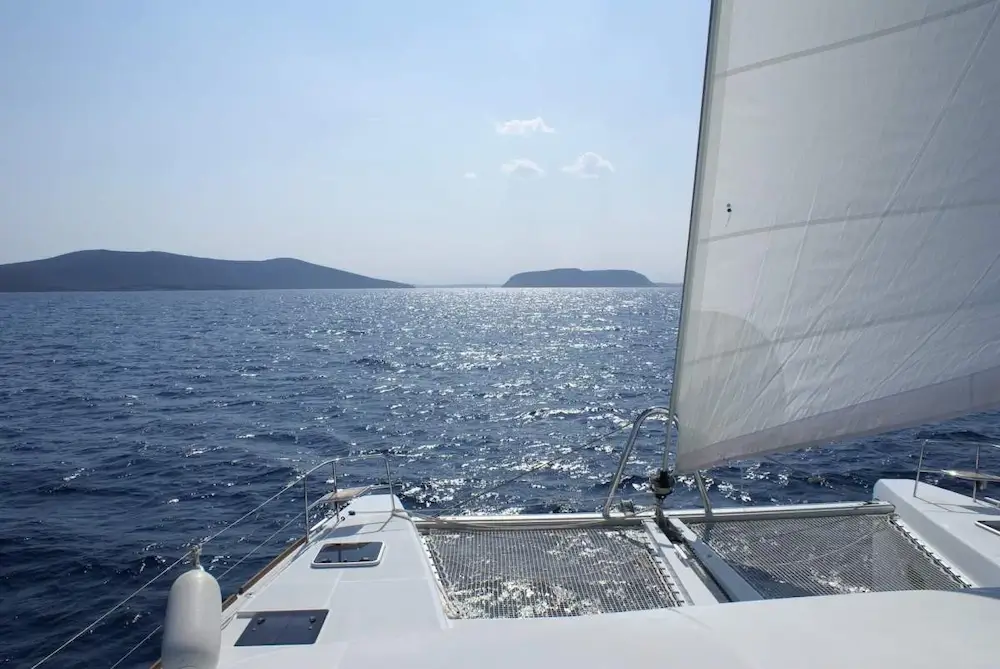
Are Catamarans Safe In Rough Seas 4
Catamaran Sailing Techniques in Adverse Weather
Reefing the sails.
Knowing when and how to reef the sails is a critical skill for maintaining control of a catamaran in high winds.
Navigating Waves
The approach to navigating waves can differ between catamarans and monohulls. Skippers must be adept at reading the sea and using the catamaran’s design to its advantage.
Case Studies: Catamarans Weathering the Storm
Real-life incidents and learnings.
Analyses of real-life incidents where catamarans have faced severe weather conditions can provide invaluable insights into their sea-keeping capabilities.
Testimonies from Experienced Skippers
Skippers who have helmed catamarans in rough seas offer a wealth of knowledge and practical advice on safety and handling.
Ensuring Your Safety: Tips and Tricks
Pre-sail weather briefing.
Always start with a comprehensive weather briefing. Understanding the forecast can prevent being caught off-guard by rough conditions.
Life Jackets and Personal Locator Beacons
The use of life jackets and personal locator beacons is mandatory for each crew member at all times during rough weather sailing.
Continuous Monitoring
Keep a continuous watch for weather changes and be prepared to adjust your sailing plan accordingly.
The Final Verdict on Catamaran Safety
Weighing the benefits and risks.
When deciding between a catamaran and a monohull, it’s essential to weigh the inherent safety features of catamarans, such as stability and shallow draft, against potential risks like beam seas and windage.
Safety: A Shared Responsibility
It’s not just about the type of boat but also about the skills of the skipper and crew. Safety is a collective responsibility that involves preparation, knowledge, and respect for the sea.
The Role of Modern Equipment
With advancements in nautical technology, catamarans are equipped with state-of-the-art navigation systems, making them safer and easier to handle even for novice sailors.
Preparing for the Unexpected
Safety drills: not just a formality.
Conducting regular safety drills is more than a formality; it’s a practice that could save lives, ensuring everyone knows how to act if the unexpected happens.
The Skipper’s Experience
A seasoned skipper’s experience is invaluable, particularly in rough weather. Hiring a skilled skipper can significantly enhance the safety of your yacht charter Greece .
Final Thoughts on Catamarans and Safety
Safety is no accident.
Safety on a catamaran, as with any vessel, is the result of careful planning, good design, and competent seamanship.
Choosing the Right Charter
For those looking to charter a catamaran, choosing a reputable company that prioritizes safety and provides comprehensive briefings is critical.
Conclusion: Sailing with Confidence
Embarking on a sailing holiday aboard a catamaran can be a thrilling and safe experience. Whether you’re cruising the calm waters of the summer or braving the more spirited winds of the off-season, catamarans have proven to be reliable companions on the sea. With their spacious design, enhanced stability, and modern safety features, these vessels are more than capable of providing a secure environment for seafarers. However, it’s the combination of a well-maintained boat, a knowledgeable crew, and vigilant preparation that ensures the highest levels of safety. By understanding the dynamics of catamarans in rough seas, taking proactive safety measures, and learning from seasoned professionals, sailors can enjoy the azure waters of Greece with peace of mind.
Related Posts

Which Greek islands are recommended for first-time visitors?
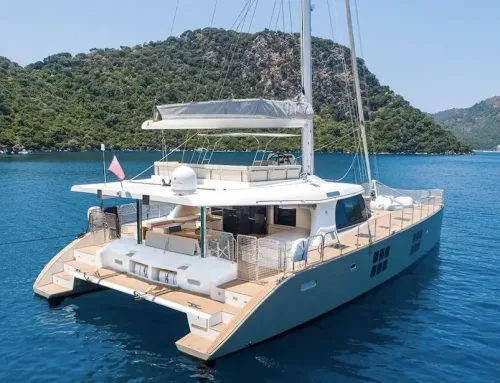
How do I choose the right catamaran for my needs?
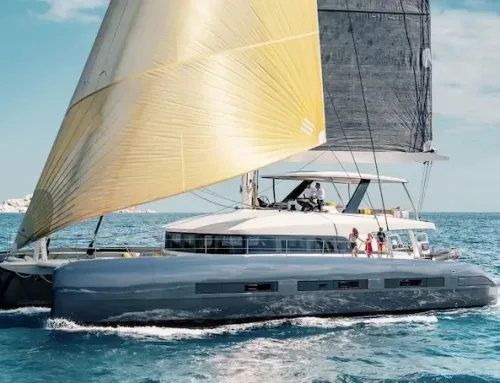
Is there a minimum or maximum rental period for a catamaran in Greece?

Are Catamarans Safe For Ocean Crossing?

Catamarans aren't the most common ocean-crossing sailboats, but they're surprisingly safe and capable offshore.
Catamarans are safe for ocean crossings. In fact, catamarans are often much safer than similarly-sized monohulls offshore. Safety comes from increased motion comfort, great stability, speed, and excess buoyancy due to lack of ballast.
In this article, we’ll examine if catamarans are safe (or safer) than monohulls for offshore cruising and ocean passages. We’ll also examine the benefits of cruising catamaran design, along with how these vessels handle in different offshore conditions.
We gathered the information used in this article from offshore sailing guides and reputable catamaran experts. We also examined design guidelines for offshore cruising boats, including head-to-head tests done between catamarans and other vessels.
Table of contents
Safety of Bluewater Catamarans
Cruising catamarans that are capable of bluewater sailing are some of the safest vessels on the water. In fact, they're often preferred for ocean crossing due to their miraculous speeds and excellent rough-water handling qualities.
Catamarans are uniquely equipped for safe and comfortable offshore sailing. They're not subject to the traditional limitations of hull speed, and they have a mild planing effect which reduces drag and the effects of rough seas.
Safest Catamaran Design for Crossing an Ocean
The safest ocean-crossing category is cruising catamarans, as these vessels include design elements and safety features that aren't found in recreational racing catamarans. An example of this is additional positive buoyancy material and watertight hatches.
Cruising catamarans have high-strength cockpit windows, which are designed to resist damage if a wave crashes on them. They also have redundant systems such as bilge pumps, navigation lights, and radios—which are all essential in an offshore voyage.
In fact, cruising cats are so safe that they're often recommended by expert sailors to more novice individuals. They aren't necessarily easier to sail, but they can handle rough weather safely and with better stability.
This keeps the crew dry and rational while the boat handles much of the ocean's beating all on its own.
Is it Safe to Sail a Catamaran During the Winter?
Catamarans can actually be safer to sail in winter weather conditions than monohulls. This is because cruising catboats almost always have enclosed cockpit spaces that are completely shielded from the elements. This is particularly helpful during the winter, but it's also a great feature in the tropical rainy season.
Catamaran crews can usually pilot their vessels from inside or behind these enclosed cockpits, keeping them warm and dry for as long as possible.
Additionally, given the premium nature of cruising catamarans, many of these vessels have automated winches and sails, allowing complete control from the interior cockpit.
How do Catamarans Handle Rough Weather?
Catamarans handle rough weather well, especially larger vessels with more displacement. But unlike monohull sailboats, draft and displacement aren't the most critical factors when evaluating foul-weather safety.
Catamarans are more difficult to swamp than monohulls. This is because they create a channel between their hulls that acts as a pressure relief valve, thus decreasing the likelihood of a rogue wave pushing the vessel under or knocking it over.
Catamarans are famous for their ability to weather high winds and chop. An equal-sized monohull may be just as strong and seaworthy, but the crew certainly wouldn't be praising its easy-riding qualities after a strong storm.
Catamaran captains are sometimes guilty of underestimating the danger or intensity of storms because a storm that beats the confidence out of a monohull crew may not even spill the coffee off the galley table in a catamaran.
Catamaran Buoyancy
Catamarans also have design elements that make them difficult—or nearly impossible—to sink. Or, to sink completely anyway. It's all about buoyancy, and catamarans have tons of it.
Monohull sailboats can handle well offshore, provided they have a low enough center of gravity and enough displacement to stay upright in violent gusts and large waves. Usually, monohull designers achieve this by working in an extremely heavy and deep ballasted keel.
In other words, offshore monohulls sit artificially low in the water due to added ballast for stability, both inside the cabin and deep in the keel. This is great until something starts to throw off-balance, like a bunch of water in the cabin.
Catamarans don't sit very low in the water because they're much more buoyant than monohulls and carry no large keels or ballast.
On their own, catamaran side hulls would probably roll over due to their lack of low ballast. But when strung together, they balance each other out and keep the hull far out of the water.
Catamarans don't often sink because they're simply too buoyant. They use their width and dual hulls to make up for the lack of ballast.
Plus, catamaran builders sometimes add additional positively buoyant material such as foam, to the point where sinking an intact vessel would be utterly impossible.
Are Catamarans Strong Enough for Ocean Sailing?
All production bluewater catamarans are extremely rigid and structurally sound. Catamarans make ocean journeys all the time and suffer tremendous stresses, which monohulls never experience. As a result, they're built using stronger materials and reinforced in all necessary areas.
Do Catamarans Break in Half?
It seems easy enough to believe—a catamaran hits a funny wave and breaks in half. After all, catamarans are only held together by a thin strip of fiberglass, right? Wrong—catamaran design is very robust, and all production catamarans are thoughtfully designed and strong.
Apart from the odd story in a sailing magazine, catamarans rarely just break in half. There have been some cases of it happening, but only due to extreme conditions, specific design flaws, or shoddy amateur construction.
Catamarans hulls break off far less often than regular monohulls sink—often in much less hazardous conditions than the few catamarans that did break in this way. So no, you don't have to worry about a production catamaran breaking in half while on the ocean.
Catamaran Comfort and Safety
Comfort can actually be a safety benefit on the open ocean, especially when sailing with a limited crew. Catamarans are known for their stability and increased motion comfort, which can improve the overall health and ability of the crew.
Think about it this way. A seasick and exhausted crew won't be able to deal with navigation or emergencies as efficiently and safely as a well-fed and well-rested crew. This is one of the indirect benefits that offshore catamarans have above most traditional monohull designs.
Catamaran Roll Safety
What happens if a catamaran suffers a knockdown? Usually, nothing good—catamarans can't self-right after a knockdown, unlike some monohulls with a low center of gravity. You're much more likely to have a knockdown or nail-biting roll on a monohull than a catamaran.
That said, catamarans don't suffer knockdowns nearly as easily as similarly-sized monohulls. This is because catamarans distribute their weight widely, and they have a much greater natural roll resistance.
Catamarans have great buoyancy in some parts of the hull and minimal buoyancy in others, which can actually increase roll resistance. For example, catamarans can slice through waves instead of riding over the crest and rolling violently.
It's not easy for the wind to push a catamaran down—quite the opposite. Catamarans actually rise out of the water slightly when sailed properly, even at angles perpendicular to the wind. Catamarans tend to increase in speed as wind speeds increase, directing more energy forward instead of to the side.
Monohulls have completely different high-wind handling characteristics. At some wind angles, high winds can push a monohull dangerously to one side. This is distinct from normal heeling, as the water can begin to rush over the deck and swamp the single-hull vessel.
Can Catamarans Survive Flooding?
Catamarans benefit from another safety feature that's not necessarily a design choice but a design element nonetheless. Catamarans are essentially compartmentalized, and they have a center cockpit high above the waterline.
These characteristics increase the amount of flooding necessary to seriously endanger the vessel. For example, a small leak in one hull needs to be fixed promptly—but it doesn't endanger the boat nearly as much as the same leak in your only hull.
Additionally, much of a catamaran's interior space is in the center console, which is above the waterline and thus can't be flooded from the hulls. Or at least not immediately. This is one of the reasons why catamarans rarely sink.
Catamaran Safety Equipment
Catamarans have a large amount of flat, open space between the hulls. These areas are useful for stowing equipment such as high-tech covered life rafts.
A small boat may have to make do with a small life raft and limited emergency supplies, yet a catamaran can store safety equipment for much larger vessels.
Catamaran Speed
Speed is an important and often overlooked aspect of safety, and we can use an example to demonstrate why. Picture two boats somewhere between Florida and the Bahamas. Dark clouds begin to form overhead, indicating a possible afternoon thunderstorm.
Boat A is a catamaran with good speed and sea keeping abilities. Boat B is a heavier monohull of the same length but greater displacement and technically better seaworthiness.
The catamaran, Boat A, deploys full sail and makes a speed of about 15 knots to outrun the forming storm. Boat B is a monohull and can't make more than 8 knots, even in the best conditions.
Boat A makes it back to port with time to spare, but Boat B is well out to see taking a beating from the storm. Speed means safety in many situations, even though it's never smart to try and beat the weather if you can stay in a safe location instead.
Related Articles
Are Catamarans More Stable?
Are Catamarans Good In Rough Water?
Are Catamarans Safer than Monohulls?
Daniel Wade
I've personally had thousands of questions about sailing and sailboats over the years. As I learn and experience sailing, and the community, I share the answers that work and make sense to me, here on Life of Sailing.
by this author
Learn About Sailboats
Most Recent

What Does "Sailing By The Lee" Mean?
October 3, 2023

The Best Sailing Schools And Programs: Reviews & Ratings
September 26, 2023
Important Legal Info
Lifeofsailing.com is a participant in the Amazon Services LLC Associates Program, an affiliate advertising program designed to provide a means for sites to earn advertising fees by advertising and linking to Amazon. This site also participates in other affiliate programs and is compensated for referring traffic and business to these companies.
Similar Posts

Affordable Sailboats You Can Build at Home
September 13, 2023

Best Small Sailboat Ornaments
September 12, 2023

Discover the Magic of Hydrofoil Sailboats
December 11, 2023
Popular Posts

Best Liveaboard Catamaran Sailboats
December 28, 2023

Can a Novice Sail Around the World?
Elizabeth O'Malley
June 15, 2022

4 Best Electric Outboard Motors

How Long Did It Take The Vikings To Sail To England?

10 Best Sailboat Brands (And Why)
December 20, 2023

7 Best Places To Liveaboard A Sailboat
Get the best sailing content.
Top Rated Posts
© 2024 Life of Sailing Email: [email protected] Address: 11816 Inwood Rd #3024 Dallas, TX 75244 Disclaimer Privacy Policy

Please verify you are a human
Access to this page has been denied because we believe you are using automation tools to browse the website.
This may happen as a result of the following:
- Javascript is disabled or blocked by an extension (ad blockers for example)
- Your browser does not support cookies
Please make sure that Javascript and cookies are enabled on your browser and that you are not blocking them from loading.
Reference ID: 81c9fc49-6d31-11ef-a4a2-eedd595a6ec5
Powered by PerimeterX , Inc.

IMAGES
VIDEO
COMMENTS
Catamarans Vs. Monohulls in Rough Seas. If you're planning to buy a boat, and you're deciding whether to go for a catamaran or a monohull, one of the many things you may need to consider is how they perform in rough seas. Rough seas can be challenging for any vessel, but some boats are better equipped to handle them than others.
The deeper the deadrise the better the sea-keeping characteristics, most monohulls are designed with a deep v deadrise and tend to outperform catamarans which normally have displacement or semi-displacement hulls, in rough waters. The typical catamarans are better in shallower water than rough water due to this reason and that's why we see ...
Rough seas are defined as waves that rise to heights between 2 to 6 feet (0.6 -1.8 meters). The hulls turn a catamaran into a floating platform that's pretty sturdy. In addition, their wide stance and solid construction make the vessel extremely stable, allowing it to withstand the water's constant pounding motion.
Stormy seas are tough. A catamaran is better suited nine times out of ten. Regarding performance in rough seas, catamarans and monohulls differ in a big way. For starters, catamarans become more stable when you're going on stormy seas because they have more buoyancy than their monohull counterparts. However, most smaller boats are better ...
Catamarans excel in heavy weather due to their speed and efficiency. Their twin-hull design allows them to slice through rough seas with less resistance. This speed can be crucial when trying to outrun or navigate through storms, improving safety and comfort. Sailing a Catamaran in Heavy Weather: Advanced Techniques
The inherent stability of catamarans can also be advantageous when sailing in rough seas, as it reduces the tendency to heel excessively and maintains a more level deck. This can enhance safety and comfort for crew and passengers, as well as provide better accessibility to onboard amenities and reduce the risk of items shifting or falling.
Catamarans also have two rudders, providing additional control and maneuverability in rough seas, which means you can steer the boat more easily and avoid waves better. However, it's important to note that while catamarans have these advantages, the safety and performance in rough waters also greatly depend on the skill and experience of the ...
Some of t he best catamarans for rough seas are Leopard 53, Magnum 46, Catana 53, Heliotrope 48, Lagoon 78, and 70 Sunreef. They all feature high performance to outrun heavy weather, have wide beams for added stability, low windage designs, and enough bridgedeck clearance to prevent pounding. In this article, I'll elaborate on the key ...
Speed. In the catamaran vs monohull speed debate, it might be more of a draw. Catamarans are typically 25-30% faster than a comparable monohull, but some argue that it comes at a price. When catamarans are sailing full speed you might experience a lot of slapping from the waves. Monohulls are designed to cut through the water.
One of the most significant decision points when thinking about catamarans versus monohulls is your budget. If your budget is under $100,000, a monohull will be your best bet. If your budget is between $100,000 and $250,000, you can consider a smaller, older catamaran. Catamarans such as PDQs, Prouts, and Geminis will be in your budget.
Additionally, a catamaran has more stability on calm waters. This helps make a catamaran more comfortable to relax or sleep on while at anchor or the dock. The deeper draft of a monohull boat has its advantages as well. A deeper draft provides more stability in rough waters and allows a boat to go further into the sea.
Catamarans, as opposed to monohulls, perform better in head seas because of their twin-hull configuration. The key is hidden in the tunnel. Between the tunnel and the water, the air is trapped, producing a cushion of air for the boat to ride on, giving you the finest ride possible. Factors that Make Catamarans Easier to Navigate on Rough Waters ...
ADVANTAGES OF A CATAMARAN. 1. Speed Equals Safety. The speed of a catamaran makes it possible to outrun bad weather. While catamarans do not point as high into the wind as a monohull (or if it does, it makes more leeway or slides sideways), it is about 20% faster than a monohull.
Catamarans don't coast well primarily because they don't have a deep keel to track. Relying on coasting to a dock at a shallow angle and then going into reverse and using prop walk to cozy up the stern won't work. It is better to come in at a sharper angle and then pivot the boat into position with the engines.
2023 Boat Buyers Guide: Catamarans. Cats offer speed, stability, fishability, and a smooth ride in rough seas. By Karl Anderson. December 27, 2022. With engines set wide on each sponson, a catamaran provides exceptional maneuverability, whether fighting a fish or docking in tight quarters. Courtesy Invincible.
As you can likely tell, the high-performance models are bound to be substantially better in rough seas and give you the ability to outrun poor weather. ... The Advantages of Catamarans in Rough Seas. There is an incredible number of myths about catamarans, especially among monohull owners. These boats are one of the superior options for ...
Catamarans have proven themselves capable and often preferable for various sailing conditions, including rough seas. Their safety is a product of not only advanced design and technology but also the skill and preparedness of those who sail them. While no vessel can guarantee safety in all conditions, a well-maintained catamaran, captained by a ...
Nautitech 47 Power. Horizon PC74. Lagoon Seventy 8. ArrowCat 420. Bali 4.1. Sunreef Supreme 68. Hudson 48. In this article, I'll review some of the best power catamarans out there. I'll also go over the main features of different power cats and if they can handle rough weather.
On average, it took the cat 1.15 seconds to reach those Gs, whereas it took the V-hull a little longer at 1.17 seconds. That is, the V-hull accelerated 2 percent slower than the cat. And, as we'll get into later, slower accelerations equal more comfort. The results from the accelerometer confirm our roll period tests.
Deep-V hulls are considered to be 21 degrees or more. Consider this if you're looking for the best deadrise for rough water. "I'd say look for a deadrise of more than 20 degrees," he advised, "and a length-to-beam ratio on the waterline that is greater than 3.5 to 1.
A catamaran can sit in the waves and take a beating without breaking a sweat. Speed. The catamaran design is known to be faster than monohulls. IT helps cats to beat the storms and rough seas only by outrunning the storms. It may not always be possible, but it sure is more likely in a catamaran than a monohull.
Modern catamarans are built with rough seas in mind, incorporating features that enhance their seaworthiness. Safety Features. From advanced navigation systems to reinforced hulls and automatic reefing systems, contemporary catamarans are equipped with numerous safety features that make them better suited for challenging conditions.
June 15, 2022. Catamarans aren't the most common ocean-crossing sailboats, but they're surprisingly safe and capable offshore. Catamarans are safe for ocean crossings. In fact, catamarans are often much safer than similarly-sized monohulls offshore. Safety comes from increased motion comfort, great stability, speed, and excess buoyancy due ...
Starlink Internet revolutionizes connectivity for boats, offering high-speed, low-latency access even in the most remote waters.. Utilizing a constellation of low Earth orbit satellites, it guarantees reliable navigation updates, weather reports and seamless communication, crucial for safety and performance at sea.